TALES FROM THE ARCHIVE
The Valdez Museum & Historical Archive has several components. The Main Museum on Egan Drive in downtown Valdez includes a public gathering place where art, history and cultural exhibits are on display. The Archive, located within the Valdez Museum on Hazelet Street and the Remembering Old Valdez Exhibit (ROVE), houses different collections that reflect the history of Valdez, Prince William Sound and the Copper River Basin. The Valdez Museum on Hazelet is closed during the winter, but the Archive remains open to researchers by appointment. Call Andrew Goldstein, Curator of Collections and Exhibitions, at 907-835-8905 for more information or to schedule an appointment.
Goldstein continues to create online program offerings that are current and meaningful. Live from the Archive, presented on Facebook live every Monday at 3 pm Alaska time, is an entertaining look into various aspects of the VMHA Collection as well as collections management. What is it Wednesday? airs on Facebook live each Wednesday at 3 pm Alaska time. Goldstein chooses an odd or quirky object from the Archive for viewers to guess what it is and what it’s used for. He then takes an in depth look at the object’s identity, use and history. After Goldstein’s videos have aired live on the Museum’s Facebook page they are posted on the VMHA website at this location. Enjoy!!
“What is it Wednesday?” — GOOD-BYE ANDREW!
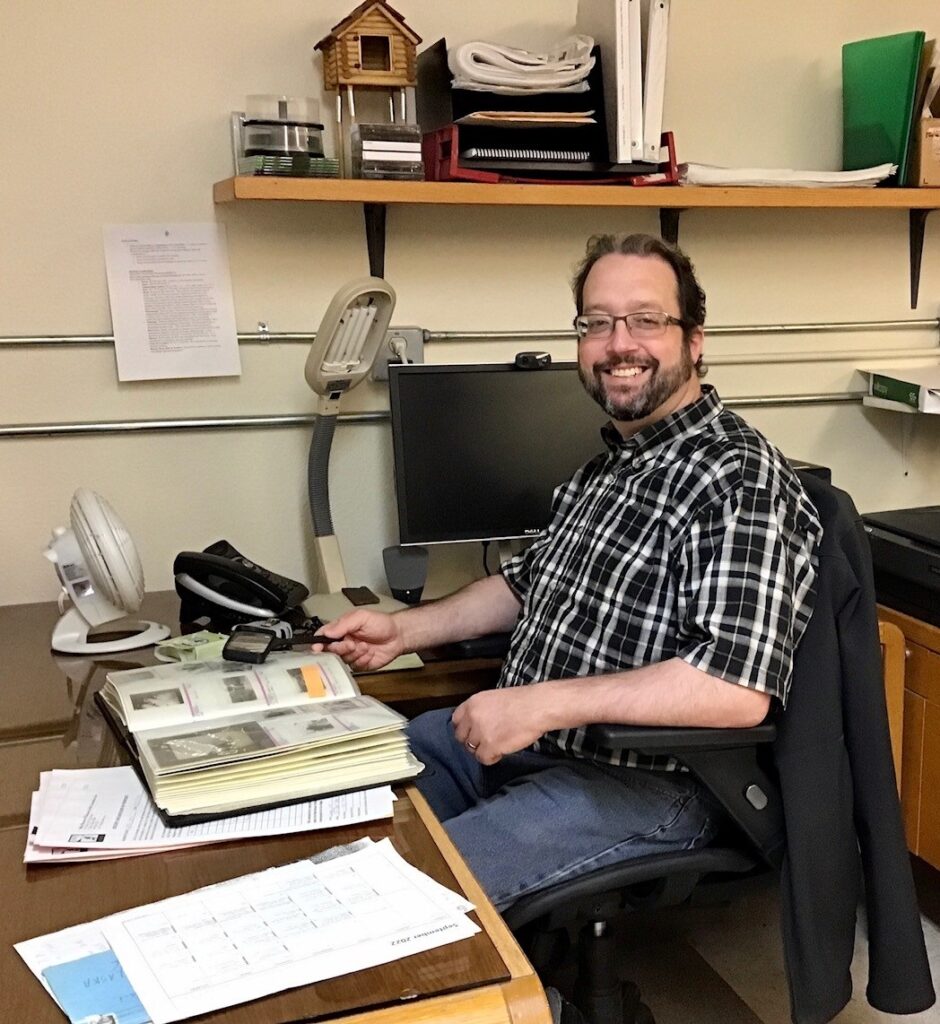
Here’s a classic photo of Andrew Goldstein, Curator of Collections & Exhibitions for the Valdez Museum, working in his office at the Archive where he presided for a 16 year tenure which ended on August 5, 2022. Andrew’s last broadcast began with his usual introduction then quickly morphed into this: Today rather than talking about the collection we, um . . . . . well, this is my last broadcast so I’m just gonna talk about myself.” Yes, Andrew is moving on to a new job at the University of New Hampshire Art Museum in Durham, NH. In addition to reflecting on his time at the Valdez Museum he offers sincere thanks to everyone who has supported his efforts over the past 16 years. Best of luck to Andrew and his family as they begin a new adventure on the East Coast! Click here to see his farewell presentation filmed down at Kelsey Dock in Valdez.
LIVE From the Archive: The Gold Rush Era & Prostitution
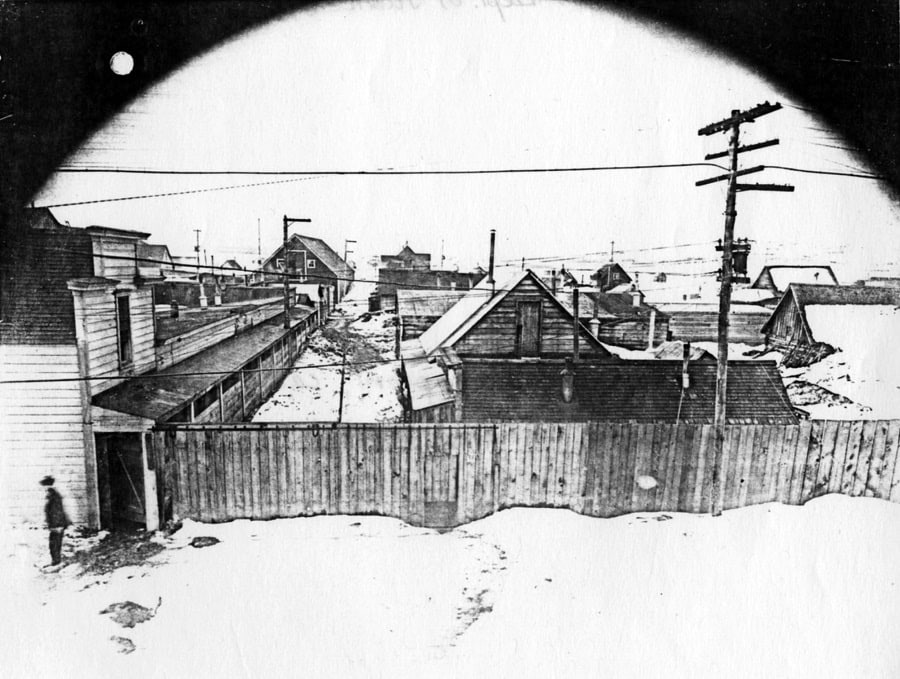
In honor of Valdez Gold Rush Days Museum Curator Andrew Goldstein takes a look at the difference between saloon girls, can can girls and prostitutes who all thrived in Valdez during the Gold Rush era. Click here to learn all about it!
LIVE From the Archive – “Aunt Phil’s Trunk”
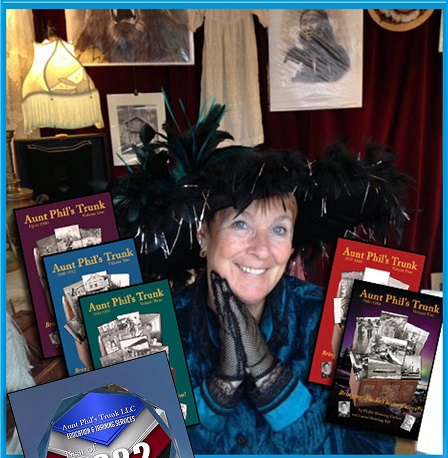
Meet Laurel Downing Bill, author of “Aunt Phil’s Trunk”, a series of 5 award winning books that share information and stories from Alaska’s colorful past. She talks with Museum Curator Andrew Goldstein about her long career as a writer and creator of her one-woman show based on that series. Click here to learn more!
“What is it Wednesday?”
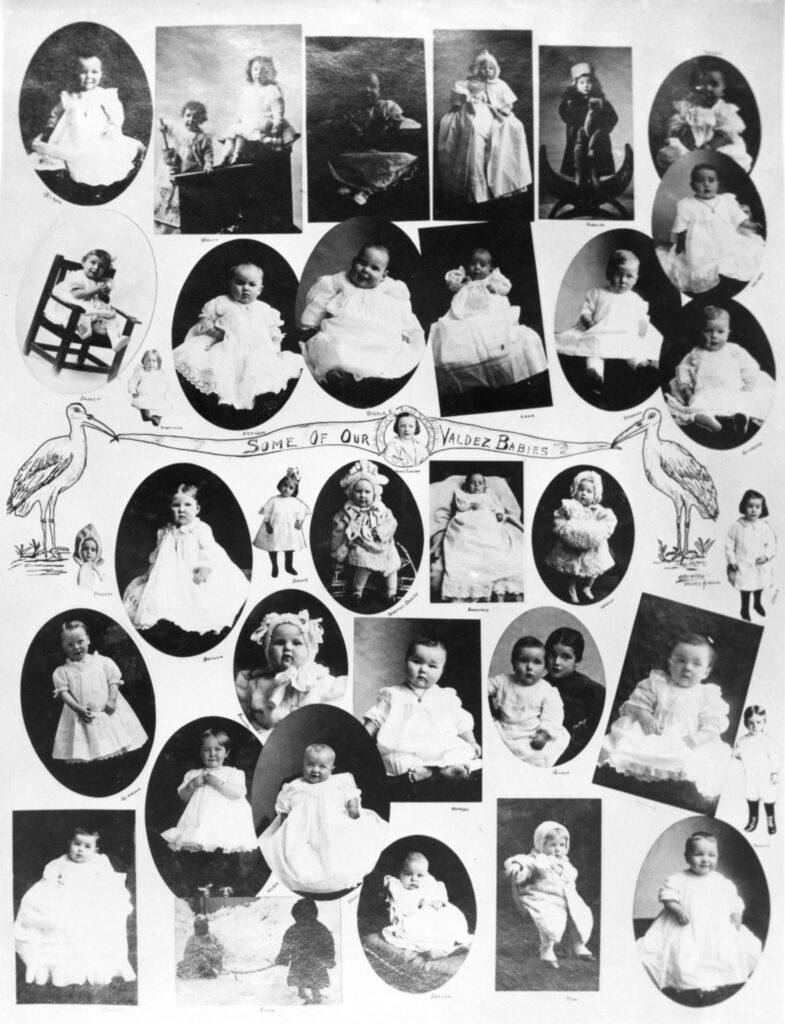
This baby collage from 1908 is the centerpiece of Andrew’s video discussion about Victorian era attitudes on motherhood, infancy and childhood. He says, I’ve talked before about how people in the Victorian Era were sort of obsessed with death, and it’s true – but they also had a real thing for the other end of the lifespan. He also shares the history behind the above photo titled “Some of Our Valdez Babies” that he found in the Museum’s collection. Click here to learn more.
LIVE From the Archive – The Challenge of Tracking Women’s History
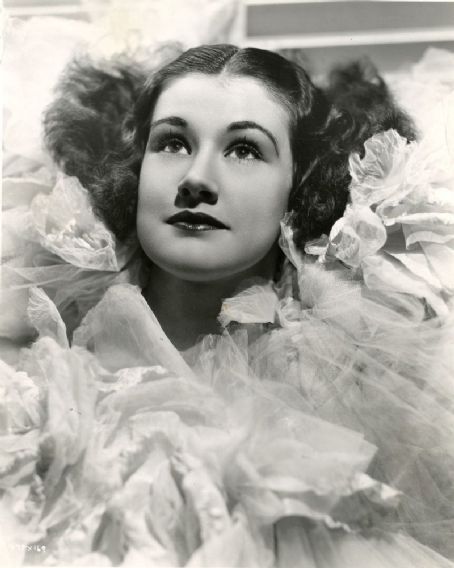
From small time Valdez to big time Hollywood! That’s what Diane Cook (aka Maybelle Cook) born in Valdez on January 8, 1913 chose to do when she left her Alaska hometown to become a chorus girl in the Ziegfeld Follies! Unfortunately, as Museum Curator Andrew Goldstein explains in this video, his research on her life revealed not much more than that. “A small-town girl growing up in the wilds of Alaska and setting off for the bright lights and big city life of a chorus girl sounds like it’s a movie just waiting to happen in itself, but alas – again, there are some major gaps here that I just can’t fill.” He cites examples of several other women with intriguing histories that are difficult to pin down. Click here to learn more.
“What is it Wednesday?”
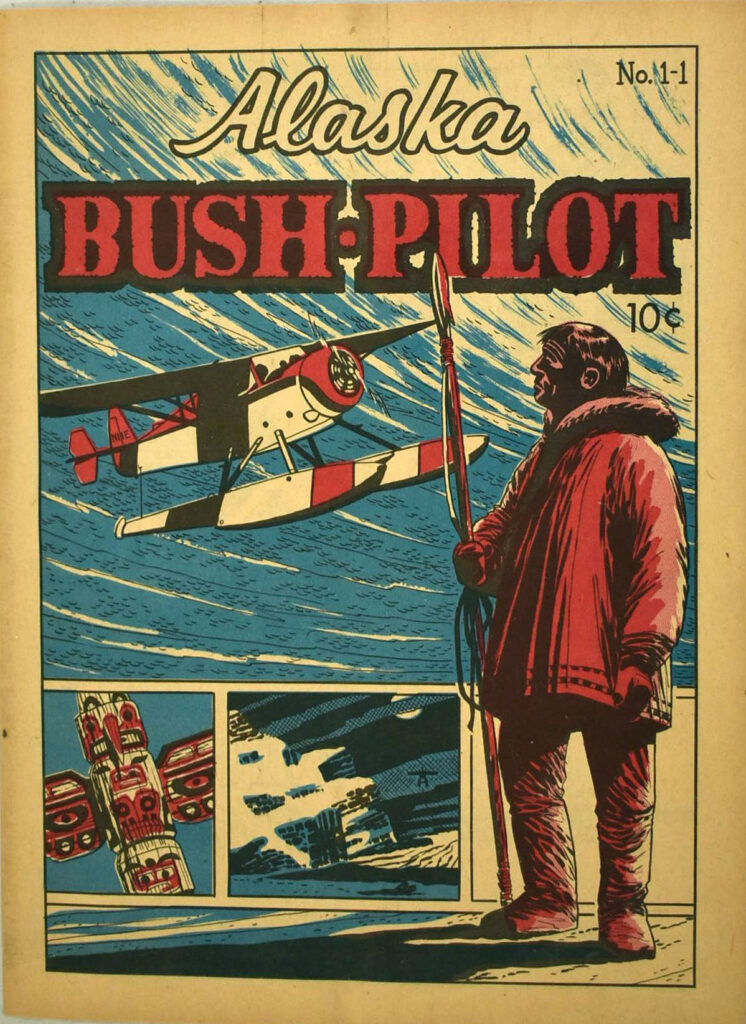
“This comic book was purchased by yours truly, (Museum Curator Andrew Goldstein) back when we were working on our 2012 permanent exhibit, The Daring Adventures of Alaskan Aviation Pioneers.” In this video Andrew shares his passion for comic books, and in particular the one pictured above, including a lot of in depth information about its history and contents. Click here to view.
LIVE From the Archive – Skippy’s Back to Help Illustrate Object Grouping!
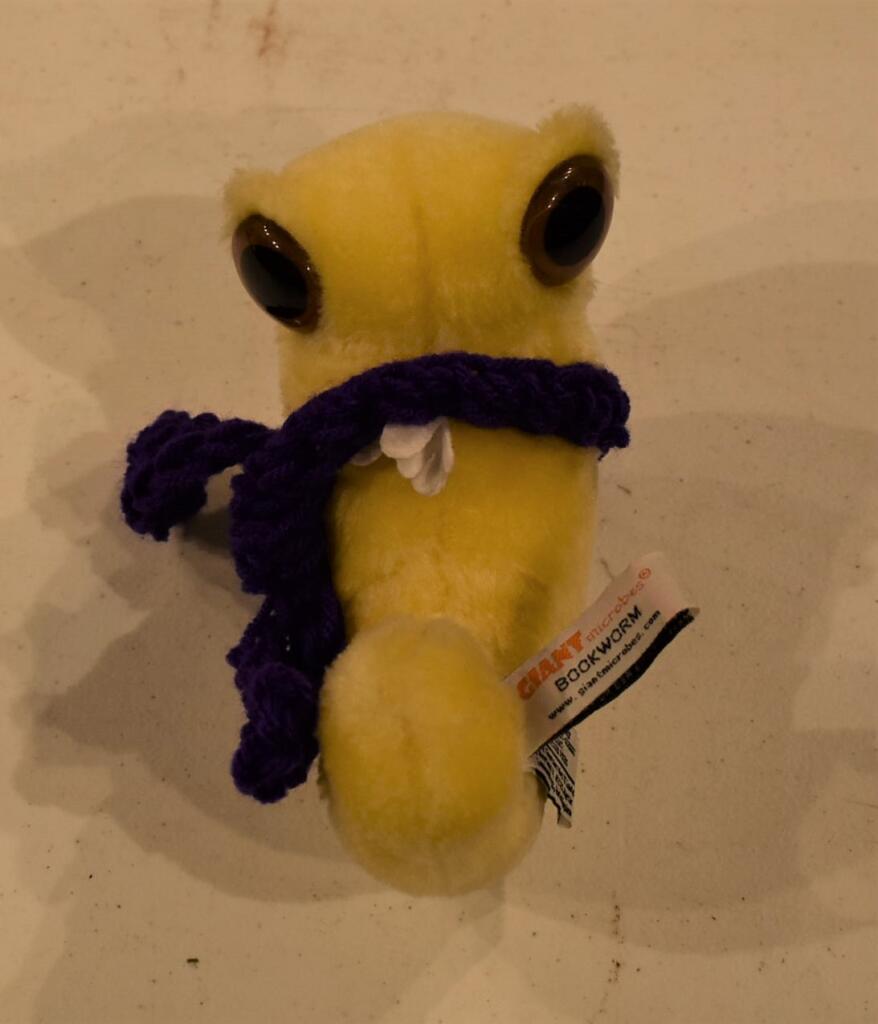
Remember Skippy? Well he’s back for a final appearance on Tales From the Archive to help Museum Curator Andrew Goldstein show how he groups objects in a museum collection. Andrew says, When we put together a museum exhibit, exhibit developers will consider the question of “What can we use to tell this story?” Case in point: Skippy and my tape measure have been sitting together on my desk for a few years. There’s no reason for them to be grouped together other than convenience, but if we look at the commonalities between them, you could start to see how they could be used together to tell a story.” Soon Skippy will be accompanying Andrew on a long cross country journey, but for his last “TALES” video appearance he joins him in displaying this image below of a Giant Grasshopper to help folks understand the concept of object groupings within an exhibit. Intrigued? Click here to learn more.

“What is it Wednesday?”

Museum Curator Andrew Goldstein shares a recent donation to the Museum Collection that he says, just sort of fell into our hands a couple of weeks ago–a shortwave radio, specifically a Harvey Radio Laboratories 80-T model 38 manufactured in the mid- to late-1930s. Pictured above on the left is Tom Lawrence, sitting by a radio similar to the one used in the first communication with the outside world following the devastating earthquake of March 27, 1964. To the right is Tom’s son, David Lawrence who donated the actual model of shortwave radio used by his dad after the quake stroke. Get the WHOLE story by clicking here.
“What is it Wednesday?”
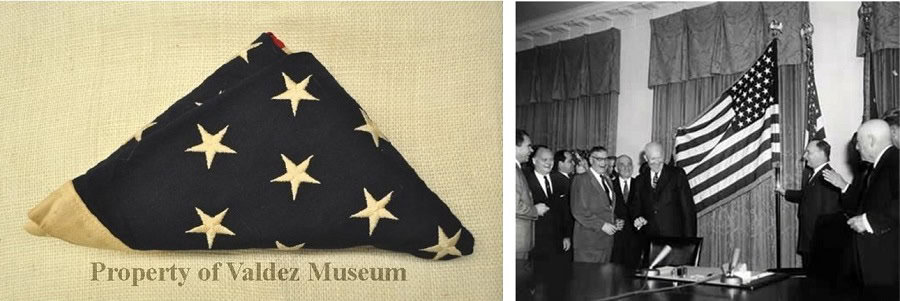
This week’s video with Museum Curator Andrew Goldstein highlights an appropriate artifact to honor the July 4th Independence Day Holiday–a flag that was flown over the post office in Old Town Valdez prior to the 1964 Earthquake. And he offers a history of the short lived 49-star flag. The above photo on the right shows a flag made in the Army Quartermaster Depot at Philadelphia and used in the White House ceremony when Eisenhower signed the proclamation admitting Alaska to the Union. Andrew also addresses this burning question, “Was the timing of Hawaii’s admittance to the union a marketing ploy?” Click here to learn more.
LIVE From the Archive – The Evolution of Miner’s Helmets

Miner’s helmets! You’ve seen them on cartoons and old movies, those hard hats with the lamps attached to the front of them. And for late 19th and early 20th century miners, they were a fact of everyday life! So says Museum Curator Andrew Goldstein at the top of his broadcast. He goes on to talk about the important role of mining in our regional culture as well as the long and colorful history of these hard hats. They are not only used to protect workers, but serve as a handy way to mount an all important light necessary for miners to do their job. Click here to learn more.
“What is it Wednesday?”
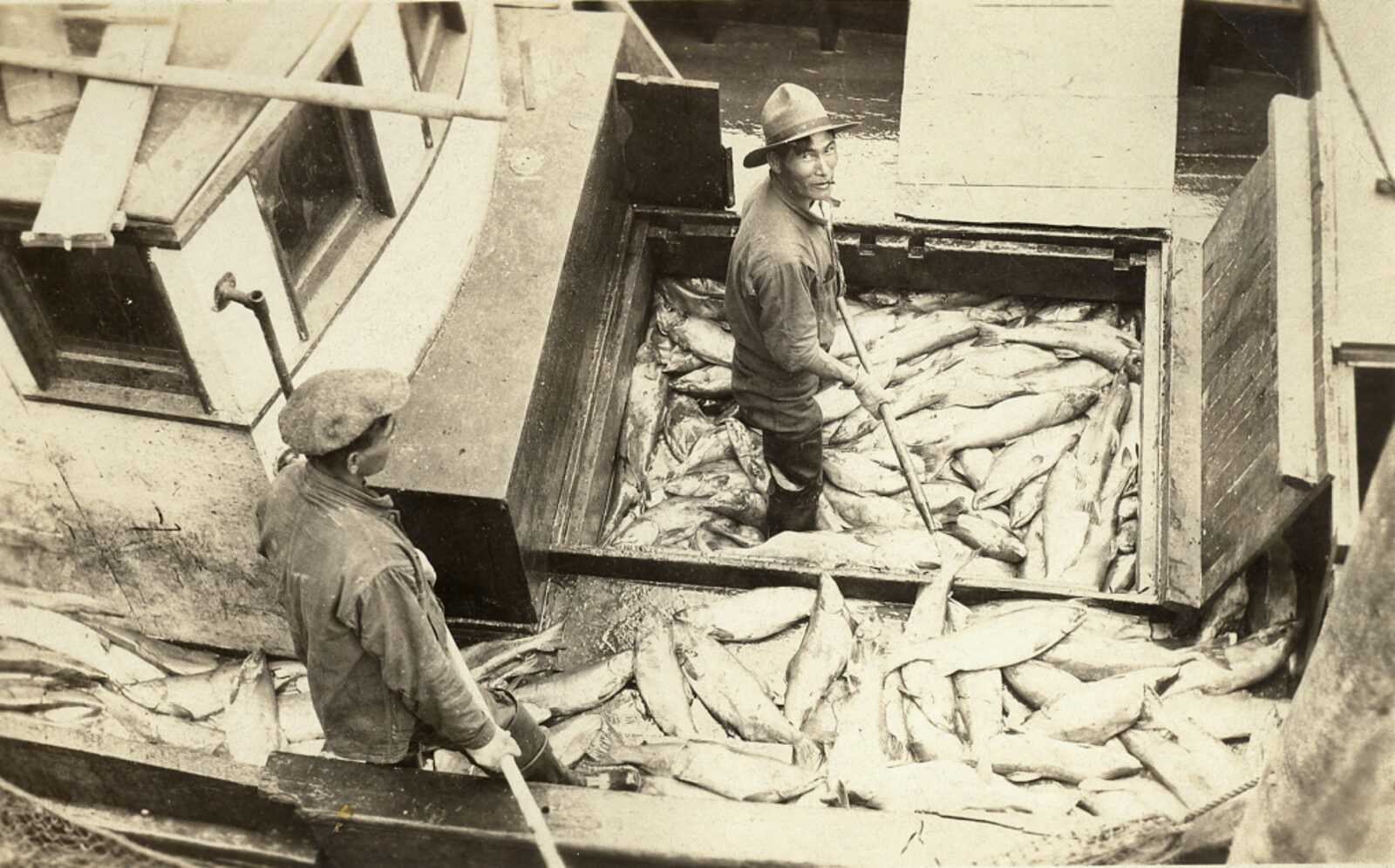
Pictured above is a Native fisherman using today’s mystery object called a peugh, and the photos was taken, probably in the 1920s, at the Emel Packing Company, a fish cannery located right here in Valdez according to Museum Curator Andrew Goldstein. He adds, You might think at first glance that it’s some kind of fishing spear, and actually you wouldn’t be too far off. Peughs were used regularly by cannery employees throughout south coastal Alaska, basically to stab the fish off the floor of their boat, or tender, and hurl them up into the wheeled carts that would take them from the dock to the processing plant. Andrew has much more to say about the subject of peughs, along with lots of historical background on Alaska’s fish canneries. Click here to learn more.
LIVE From the Archive – Tips on Displaying Art
Hang out with Museum Curator Andrew Goldstein for a little while and in this week’s video he’ll show you all about the best ways to hang pictures and a multitude of other good tips on displaying artwork. Click here to learn more.
“What is it Wednesday?”
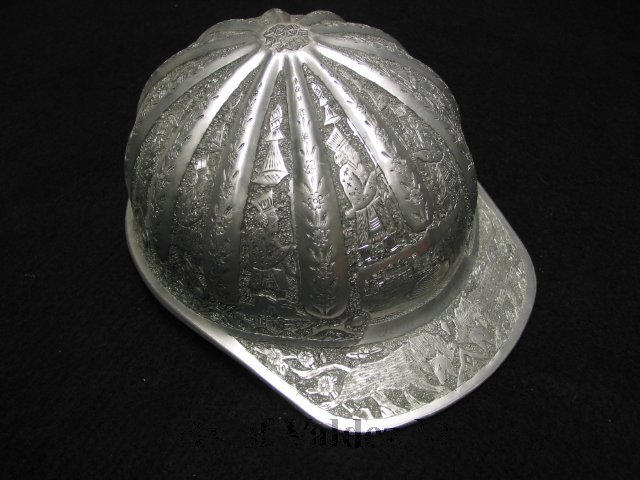
This ornate helmet covered with imagery symbolic of kings, animals, flowers, palaces, etc. may look like a conquistador’s helmet, but it’s actually a hard hat that was gifted to Thomas Vincent Malcolm, construction manager for the Trans-Alaska Pipeline for many years, and who oversaw construction of the Valdez Marine Terminal from 1974-1976. The Museum has a sizable collection of Malcolm’s pipeline materials, about four boxes of documents and artifacts spanning fifty years from 1932 to 1982. This week Museum Curator Andrew Goldstein gives a congratulatory nod to Alyeska Pipeline Service Company in honor of it’s 45th anniversary of managing pipeline operations. Click here for details on their anniversary celebration and to learn more about Thomas Malcom.
LIVE From the Archive – Andrew Goldstein’s “Big Reveal”
Andrew’s got a special announcement that’s shaking things up at the museum! That’s the prelude to this week’s video where he tells everyone about his upcoming job in Durham, New Hampshire as Curator of Collections & Exhibitions at the University of New Hampshire’s Art Museum. He’ll be with the Valdez Museum until early August, 2022, and keeping up with regular broadcasts on Tales From the Archive until then. You can learn all about his thoughts on the move, and reflections on his 16 years at the Valdez Museum by clicking here.
Here’s Andrew in action!!!
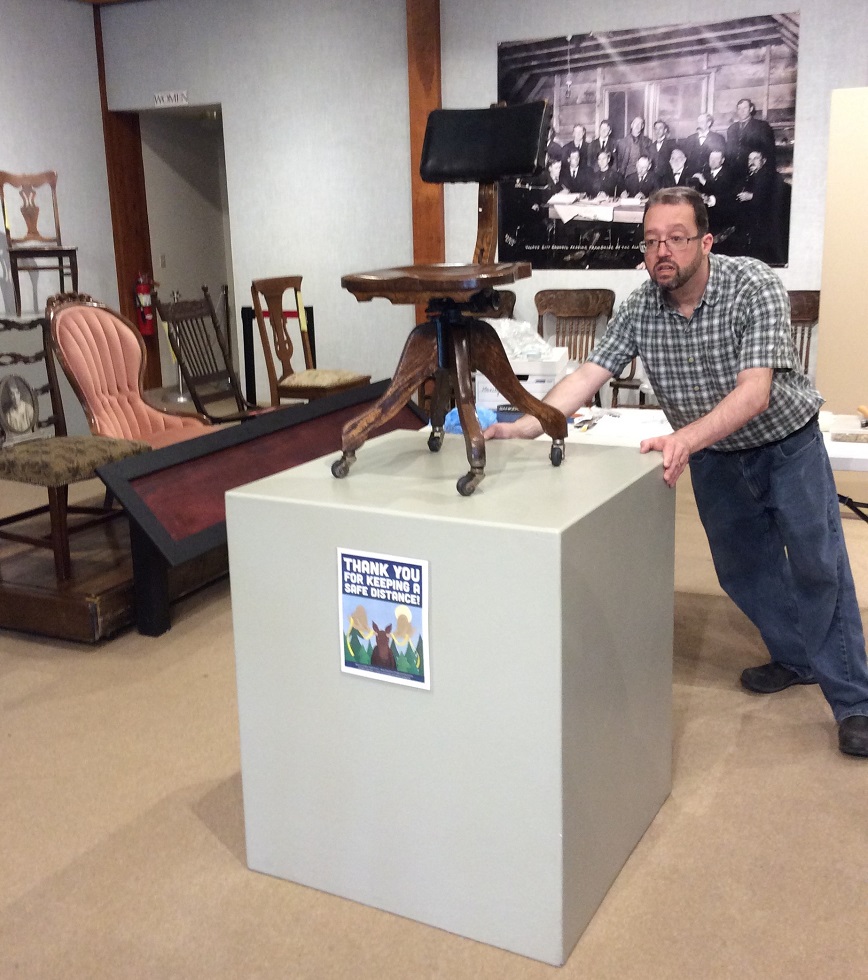
LIVE From the Archive – Meet Our New Collections Intern!
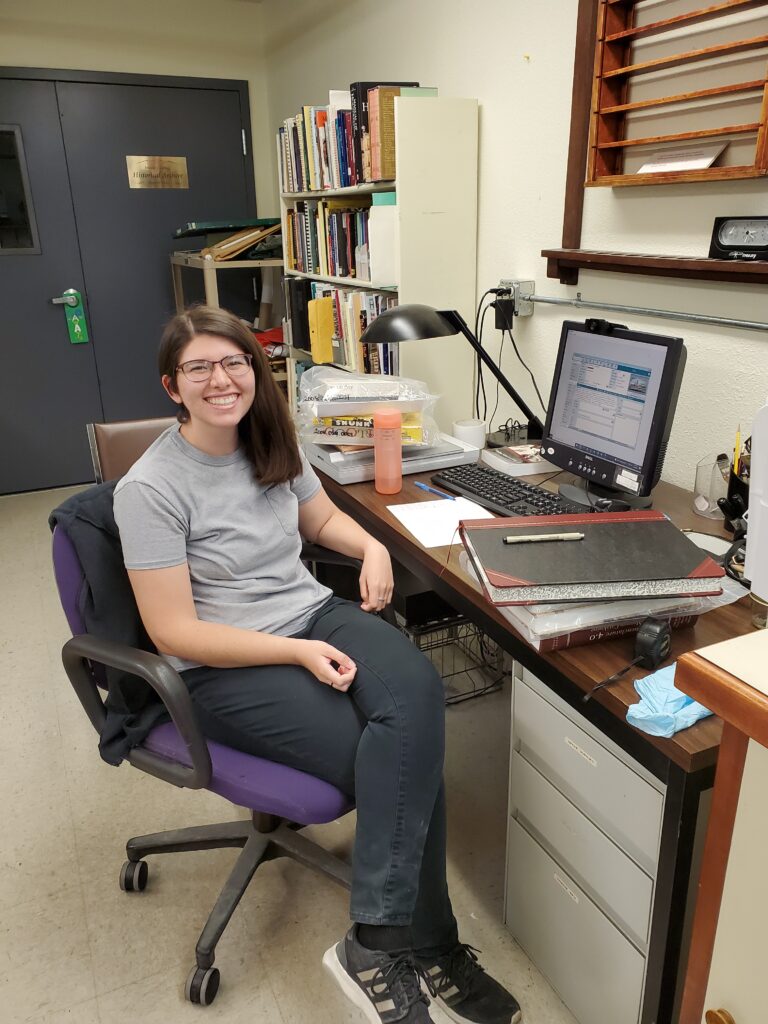
This week Museum Curator Andrew Goldstein introduces our summer Cataloguing Intern Nicole Zamora-Wilson who will be tackling our Archive’s sizeable collection of backlog materials. This is part of an ongoing collections management project that began in 2008. She’s from Salt Lake City, Utah, has never been to Alaska and has loved museums her whole life. View Andrew’s Q & A with Nicole by clicking here.
“What is it Wednesday?”
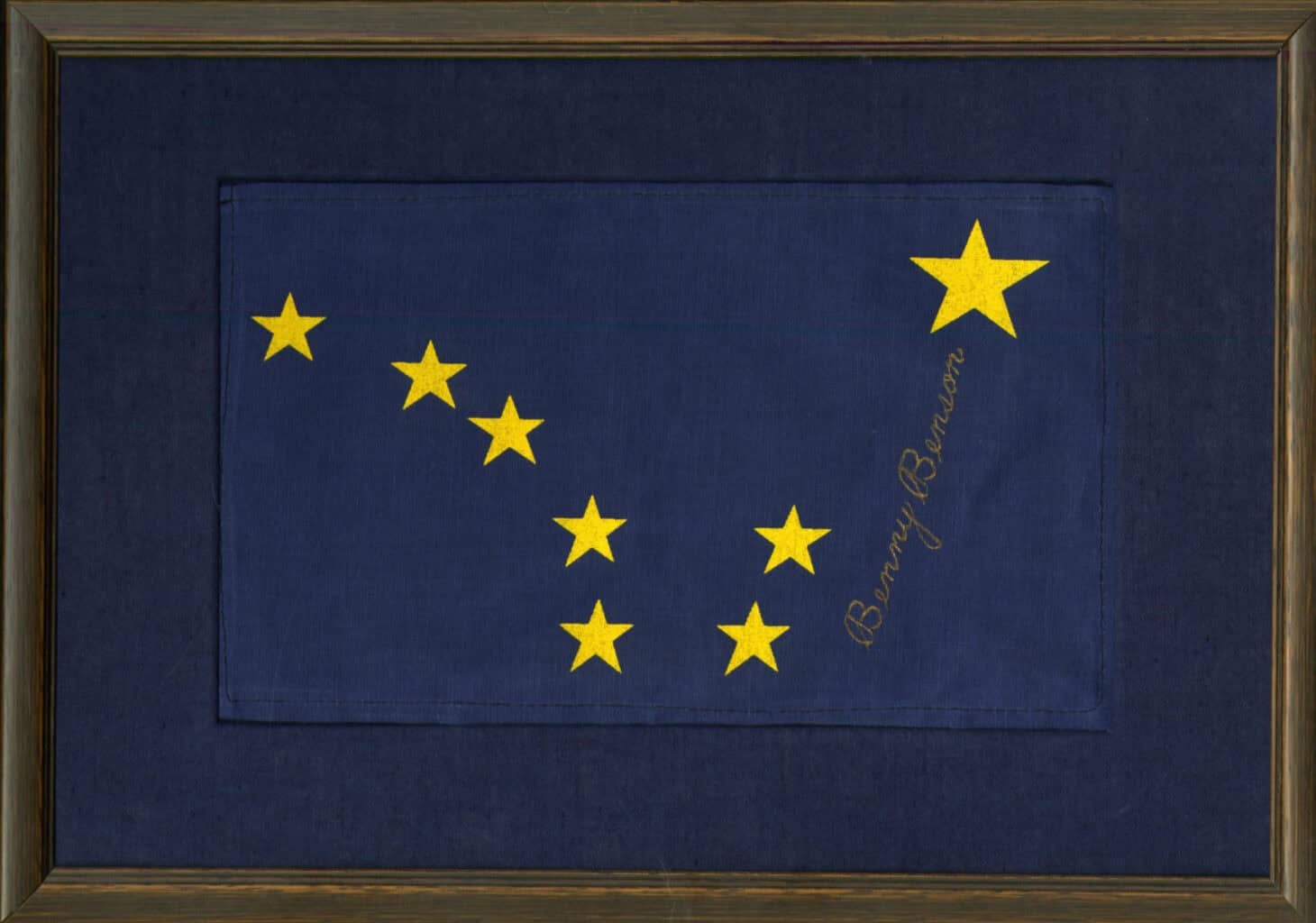
What’s the mystery behind this Alaskan flag? Well you can find out from Museum Curator Andrew Goldstein as he broadcasts from down by the ferry dock on a beautiful sunny day in Valdez. Click here to enjoy!
LIVE From the Archive – Challenges of Outdoor Artifact Displays
On today’s broadcast Museum Curator Andrew Goldstein talks about the challenges of caring for outdoor artifacts. Click here to learn more.
“What is it Wednesday?”

What the heck is ‘Damalanche’?!? Museum Curator Andrew Goldstein asks his Facebook Live audience at the top of this recorded broadcast from Keystone Canyon about 14 miles north of Valdez on the Richardson Highway. He recounts the tale of how the only road out of Valdez to the interior was blocked by one of the largest avalanches in recent memory near the end of Keystone Canyon. It’s an exciting tale that you can learn more about by clicking here!
LIVE From the Archive – Collections Care – Acidity is the Enemy!

Museum Curator Andrew Goldstein talks about a potential threat not only to the Museum’s Collection, but to your OWN personal treasures as well; and what you can do to prevent it. ACIDITY! He explains, When something is acidic, it has a low pH level, which is a measurement of the presence of Hydrogen ions in its molecular structure. What you want to know for taking care of you own collections is this: certain materials have a much higher acid content than others, thus it’s the presence of those acids that cause them to deteriorate faster. He says cheap mat board is terrible for artwork, and can result in what’s called acid burn –places where the mat board comes into contact with a work of art and gets stained over time. This photo of a print of Frederick Douglass from the Smithsonian Institution shows the discoloration where the mat came into contact with the print. He offers a host of tips on how to deal with this danger and others. Click here for more.
“What is it Wednesday?”

This coin was found on Mineral Creek a number of years ago, by local resident Bill Gittens, who donated it to the museum in 2011. In his broadcast from outside the Archive he addresses the question of, “How did a Chinese coin end up on Mineral Creek, and why might it be important?” Click here for more.
LIVE From the Archive – Sneak Preview of New Art Exhibit

The Valdez Museum is pleased to present the new summer exhibit, Sacred Waters, Art by Kevin Crowley which runs May 13 – September 18, 2022. Anchorage artist Kevin Crowley created the stunning prayer flags adorned with his wood block prints pictured above. These flags along with a collection of framed wood block prints, as well as prints on fabric created by Crowley comprise the new exhibit. Museum Curator Andrew Goldstein cruises through the Egan Commons gallery to give you a sneak preview! Click here to take his tour.
LIVE From the Archive – Just How Big is the VMHA Collection?

Museum Curator Andrew Goldstein addresses the above question with an answer that some viewers may find less than satisfying because of this conundrum: how do we know how much we have, until we finish calculating how much we have? He refers to the fact that not everything in the VMHA Collection has been catalogued, but he offers up a lot of good information on different ways to measure its size. Learn more by clicking here.
“What is it Wednesday?”
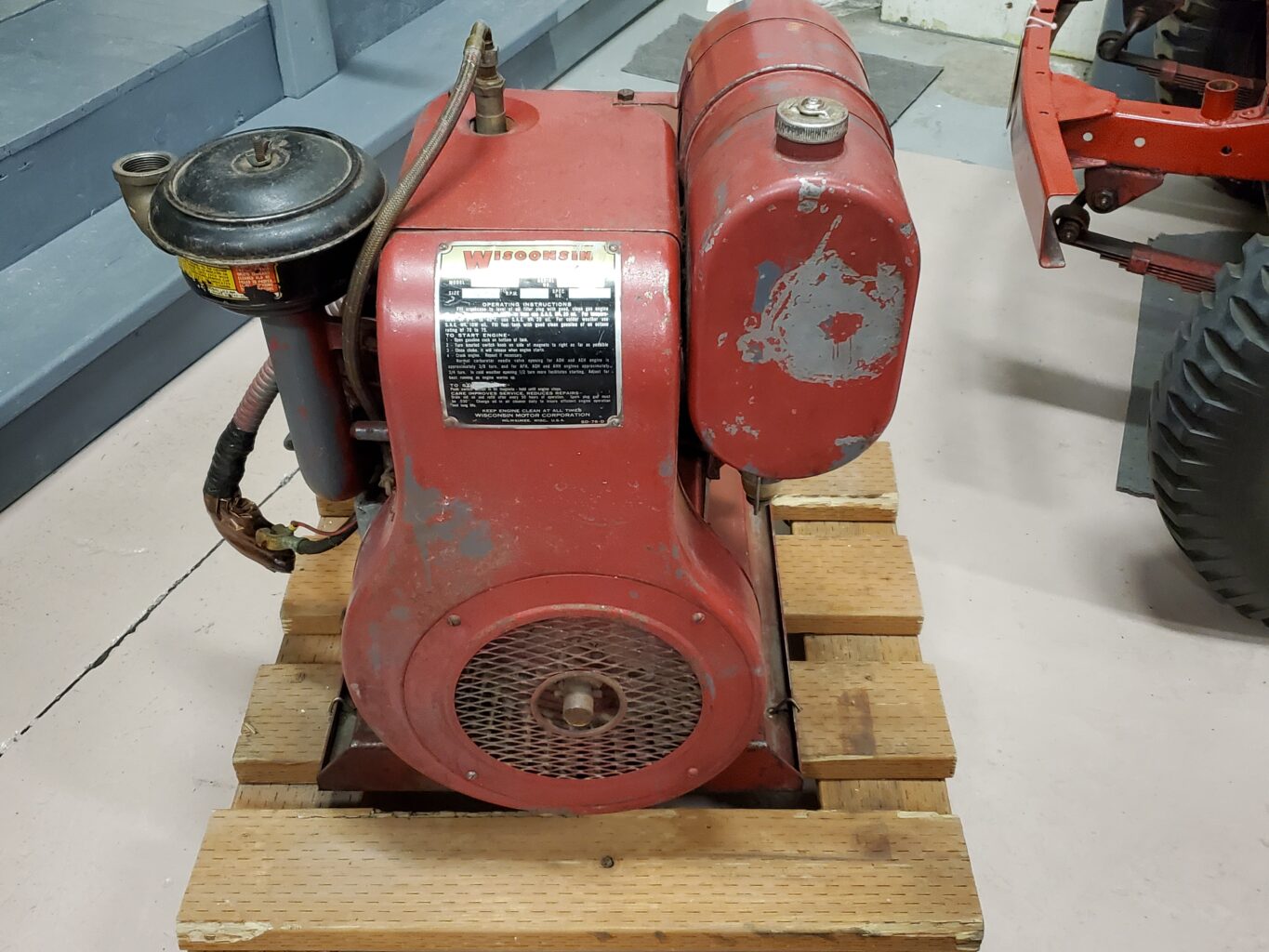
Museum Curator Andrew Goldstein broadcasts from the Valdez Museum on Hazelet, givingd a tour of all the “cool stuff” on display. He starts with the above air-cooled gasoline generator used by Wayne Martin at his dairy farm in the 1950’s and goes on to several more artifacts–a Lincoln Portable Shield-Arc Welder and a Witte diesel engine. He says, They’re not the only engines in our collection, nor are they particularly flashy objects like the Pinzon Bar or the Hinchinbrook Lighthouse lens. But they do represent a key part of small-town Alaskan life in the mid-20th century, when electric power wasn’t always a given and you always wanted to have a backup anyway, should the lights go out. Click here to take the tour.
LIVE From the Archive – The Nenana Ice Classic

In the words of Museum Curator Andrew Goldstein, I’m here to tell you about a quintessential piece of Alaskana – the Nenana Ice Classic! He then goes on to give a very thorough over view of this event and how it spawned similar events around the state. Click here to learn more.
“What is it Wednesday?”

Museum Curator Andrew Goldstein played a guessing game with this unique artifact from the Collection. But alas, with no viewer guesses, he was then forced to reveal its true identity–“This artifact is a blacksmith’s cuff! Blacksmiths would wear a cuff like this while working at their forge and hammering out hot metal, to protect their wrist and forearm from burns, not to mention protecting their sleeves.” He proceeded to weave a tale around the important role that blacksmiths played during the turn of the century Gold Rush era. Click here to view.
LIVE From the Archive – Exhibit Schedule for the Year Ahead

Right now the Museum is abuzz with summer preparations! This wood block print pictured above is one of many that are part of the Museum’s temporary summer exhibit, Sacred Waters, Art by Kevin Crowley. The exhibit will be on display in the Egan Commons from May 13, 2022 through Sept. 18, 2022. VMHA Curator Andrew Goldstein shares information about this exhibit plus others slated for the coming year in his broadcast. And, if you’re a local artist, YOUR work could still be part of our exhibit roster since we are now soliciting for proposals. Learn more here.
“What is it Wednesday?”
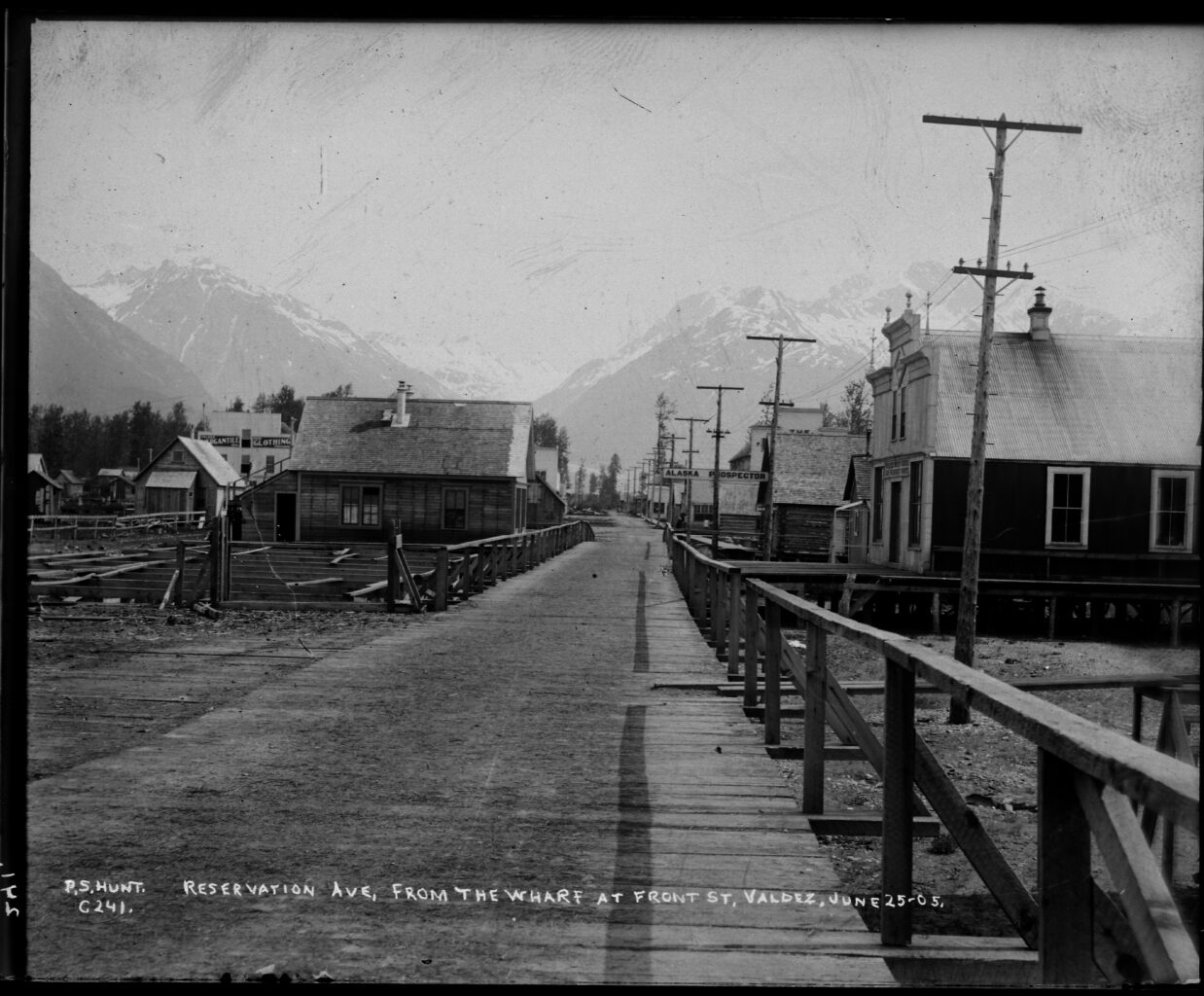
The above photograph by P.S. Hunt is one of the many he took of Reservation Avenue in Old Town Valdez. So the mystery is: Did Valdez ever have a Native reservation? which the name Reservation Avenue might imply. Museum Curator Andrew Goldstein tackles that question on this broadcast, and you might find the answer surprising! Click here to find out.
LIVE From the Archive – WPA Alaska Art Project
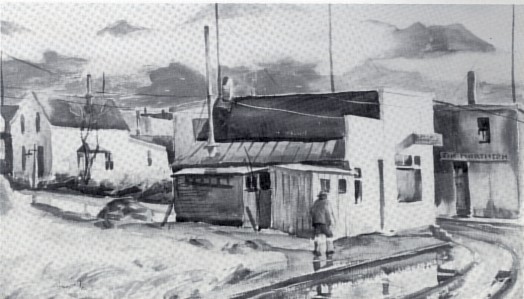
This Alaska specific art project was a spin-off from the the Federal Art Project, the visual arts arm of the Works Progress Administration (WPA). Funded under the Emergency Relief Appropriation Act of 1935, it operated from 1935 to 1943. The above untitled watercolor painting by Prescott Jones, is likely the only Valdez specific piece of art resulting from the project designed to help artists to recover from the Great Depression spurred on by the 1929 stock market crash. That’s according to Museum Curator Andrew Goldstein who, in his broadcast, gives a thorough history of this large effort to support the work of artists around the country. Click here to learn more.
“What is it Wednesday?”

Question of the day–Did Theodore “Ted Lambert, creator of this 1935 painting titled Gulkana Roadhouse, actually live in Valdez? In his broadcast, Museum Curator Andrew Goldstein gives an extensive history of the artist, BUT does he actually answer the question? Click here to find out!
“What is it Wednesday?”

Andrew’s back!! And this week he’s giving a tour of the Museum’s new temporary exhibit, WHITE GOLD: a Tribute to the World Extreme Skiing Championships. He briefly touches on some of the exhibit highlights– photographs, programs and all kinds of of ski related memorabilia that make up the Museum’s WESC Collection, with some items on loan from WESC founders and participants. Click here to take the tour!
“What is it Wednesday?”

Museum Curator Andrew Goldstein improvised for this week’s broadcast due to a power outage at the Archive. He scrapped the original focus on an upcoming WESC exhibit for a look at one of the Museum’s most popular artifacts, seen in the above photo. What is it? Hint–it was salvaged from the ruins of post-earthquake Old Town Valdez. Click here to find out more.
LIVE From the Archive – Collection Priorities
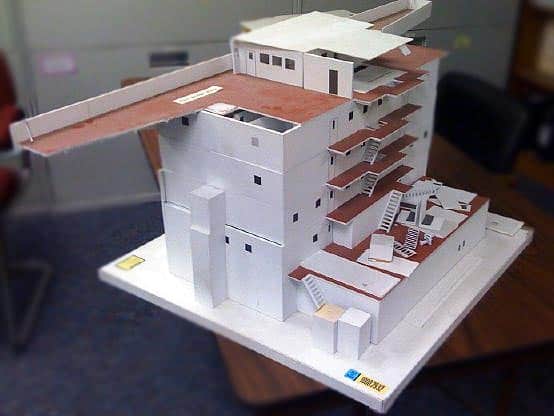
One of the Museum’s objects on loan is this modular scale model of the bridge of the Exxon Valdez pictured above. Museum Curator Andrew Goldstein uses it as an example of a “must save” item in the case of an emergency situation such as a fire or flood. In this broadcast he outlines how to prioritize collection items. Click here to learn more.
“What is it Wednesday?”
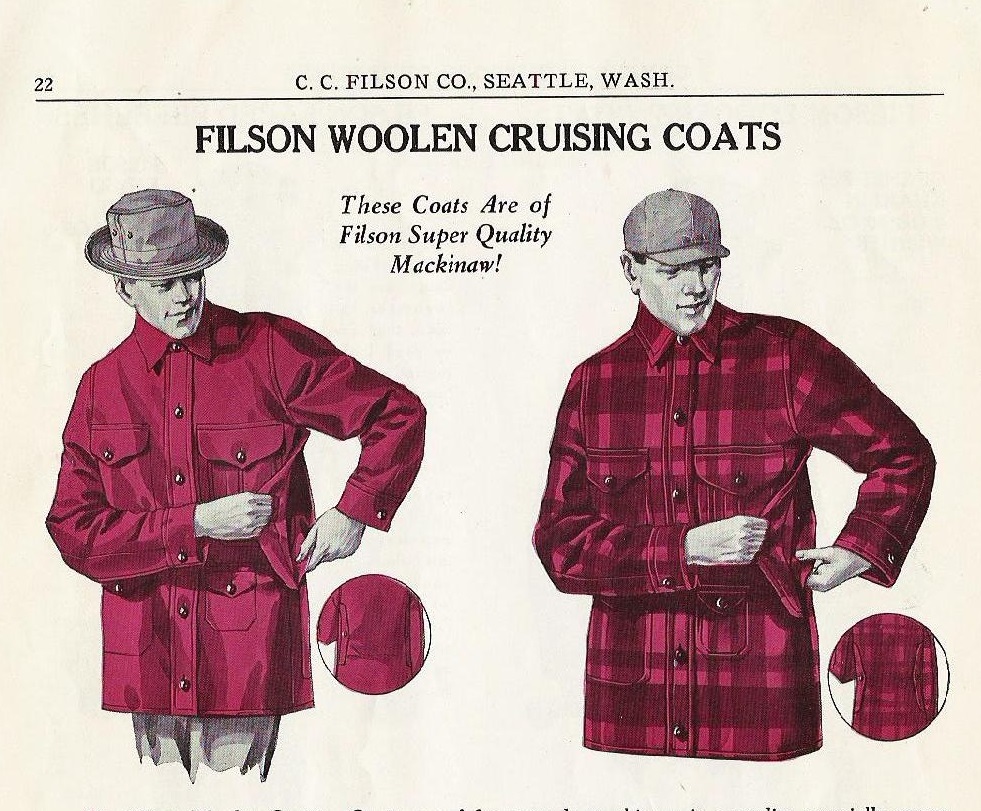
Believe it or not, the slick outfits pictured above are considered formal attire, in Alaska that is! Museum Curator Andrew Goldstein recently stumbled on the term “Alaskan tuxedo”— about which he has this to say, In its broadest sense, the Alaskan tuxedo is sort of the lumberjack’s version of formal clothing. Apparently there are different schools of thought on what exactly that term means, and in this broadcast he explores a wide variety of possibilities. Click here to find out more.
LIVE From the Archive – Artifact Mounts
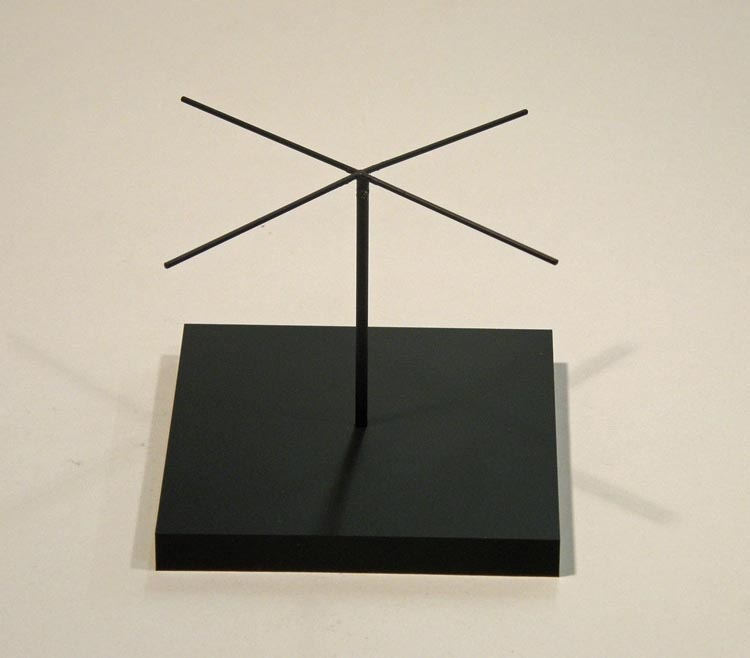
We all need a little support sometimes and so do museum artifacts, hence the above example of a “spider mount.” In this broadcast Museum Curator Andrew Goldstein shows the various types of gismos and gadgets that help display objects in a visually pleasing way while keeping them safe. Click here to learn more.
“What is it Wednesday?”
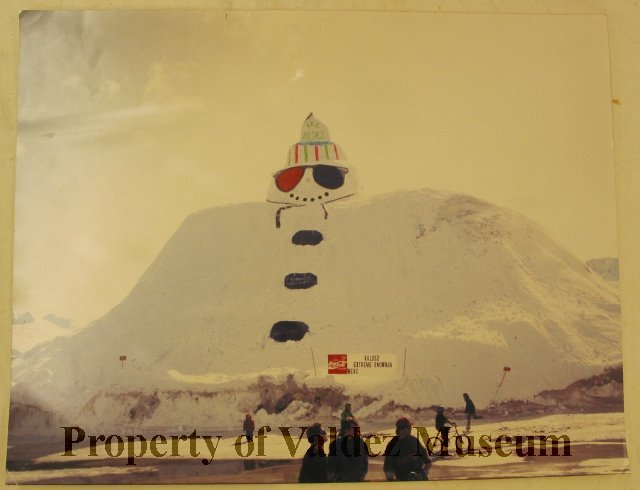
This formidable creature pictured above once held the title of, World’s Largest Snowman, built in Valdez in April 1992 and measuring 76 feet two inches, topping the previous record of 74 feet. The “Valdez Extreme Snowman” as it was called was created to coincide with the World Extreme Skiing Championships, a series of freestyle skiing events that kickstarted Valdez’s winter tourism industry, and was instrumental in starting the whole extreme sports craze that began in the 1990s. This video by Museum Curator Andrew Goldstein is sure to both entertain and inform you about record breaking SNOW PERSONS, as the Guinness Book of World Records now calls them. The current record-holder is a snow woman measuring 122 feet, 1 inch tall, constructed in Bethel, Maine in February 2008. Click here for more.
LIVE From the Archive – What We Do

This snapshot of a page from the VMHA website calendar gives you some idea of Valdez Museum happenings–all color coded–be it new exhibits, online and in-person programs, museum board meetings, free admission days and more! This week Museum Curator Andrew Goldstein covers the many aspects of what museums offer. And he invites YOU to make suggestions about future programs. Find out more by clicking here.
“What is it Wednesday?”
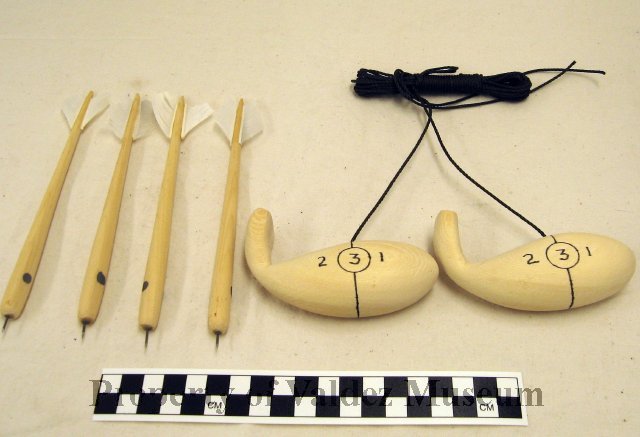
What is this wooden object from the Museum’s Alaska Native collection? Museum Curator Andrew Goldstein made us guess for a little while–first giving a tease, Before I tell you more about it, I will tell you that this isn’t an antique item, but it is a replica of a traditional object, made by an Alutiiq, or Sugpiaq, artist. Then an apology, I cheated a little by not showing you the darts that came with it since I didn’t want to make it too easy. Finally—This is a replica of a game called “Augca’aq,” an Alutiiq dart game. Like many Alaska Native games, it has the added function of training hunters. There you have it! To learn the whole story click here.
LIVE From the Archive – The Paul Finfer Collection

How do you build a whole town from the ground up? Well this man, pictured above, took on that challenge when Old Town Valdez was condemned and declared an unsafe place to live by the U.S. Army Corps of Engineers after the 1964 Good Friday Earthquake and Tsunami. At the time, Paul Finfer was a young architect-planner with City Planning Associates of Mishawaka, Indiana, the company commissioned by Valdez to plan the new townsite. In this video Museum Curator Andrew Goldstein shares the Museum’s Paul Finfer Collection, what he calls, an incredible collection of personal notes, planning documents, and architectural drawings that documents the whole process of planning, designing, and building the new Valdez. He adds, it offers a rare and rich glimpse of our local history and recognizes the Museum’s efforts to preserve this history for generations to come. Click here to learn more.
“What is it Wednesday?” – “What was the ugliest building in Old Valdez?”

Pictured above is a watercolor of Monte’s Grocery Store, a bit weathered by having gone through the post 1964 Earthquake’s flood waters. Museum Curator Andrew Goldstein gives the background on this acquisition from Myrtle Myers, adding, I don’t think it’s really fair to call Monte’s an ugly building – it’s not really worse than any of the other weathered buildings at the time – but it’s “ugliness” here is really a byproduct of circumstances. And it’s those same circumstances that make it a poignant account of a traumatic historic event. Get the whole story by clicking here.
LIVE From the Archive – Unveiling our New Exhibit!

Ta Da!!! Museum Curator Andrew Goldstein and his trusty side kick Kyle Klause do a Facebook Live presentation to reveal our new traveling exhibit, ILLUSTRATING ALASKA, Artists Making Children’s Books. You can experience the drama of opening the crate and exploring its contents–colorful sketches, finished artwork and the all important Exhibit Guidebook. Click here to watch the video. ILLUSTRATING ALASKA runs from January 28 – March 20, 2022 in the Valdez Museum Egan Commons. Stop by to view it if you’re in the neighborhood!
“What is it Wednesday?”
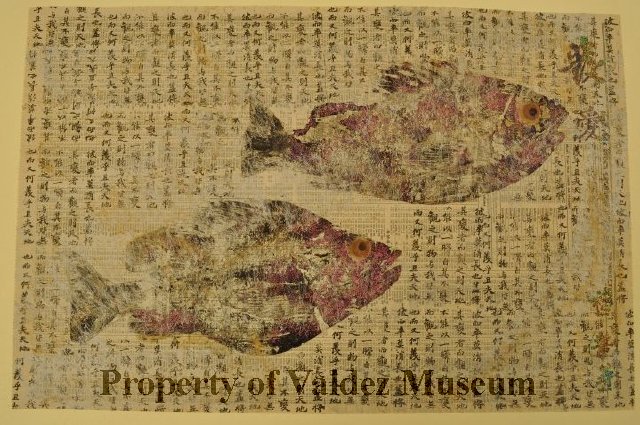
Today’s topic is something that really speaks to the culture of Prince William Sound – fish printing! Yes, that is really a thing, and while it’s mostly within the last few decades that people have really taken notice of it as Alaskana, fish printing actually has an artistic pedigree that goes back to the mid-1800s, says Museum Curator Andrew Goldstein. Learn all about this unique art form by clicking here.
“What is it Wednesday?”

In Photo Manipulation, PART 2 Museum Curator Andrew Goldstein continues his history of how people have learned to alter photo images over the years. He says, Even as far back as the mid-19th century, people were touching up photographs to get rid of those zits and wrinkles, make the weather look nicer, or just frame things so that you’re looking at the lovely landscape instead of that junkyard just off to the left. The photo above, “Gathering Alaskan Ice Worms”, was a gag photo taken by Guy Cameron in maybe the 1910s or 20s according to Andrew. He continues on into present-day “photo tricks” in this broadcast posted here.
LIVE From the Archive – Photo Manipulation, PART 1

People have been manipulating photographs for various reasons for almost as long as there has been photography, says Museum Curator Andrew Goldstein. In Part 1 of this Tales From the Archive broadcast Andrew goes back to what he says is the the first known manipulated photograph made in 1841 by Calvert Richard Jones who took a photograph of four Capuchin monks in Malta, and added in a fifth monk behind them. Another example are mirrored images above that were taken around 1930, in which the original photograph shows Joseph Stalin walking with Soviet commissar Nikolai Yezhov. In the retouched image, Yezhov was removed after falling from favor with Stalin. There are a host of other examples for you to view by clicking here. Part 2 airs next week.
“What is it Wednesday?”

It’s 2022, I hope you all had a great New Year’s Eve and are having a good year so far, and I figured today I’d ease into the new year by taking a look at New Year’s greetings from years past.
With these words Museum Curator Andrew Goldstein introduced his first What is it Wednesday? of the New Year. In his broadcast Andrew shows you a wide variety of some New Year’s greetings from years past! Click here for more.
“What is it Wednesday?”

For today’s show, “It’s heigh-ho, ho, ho as Museum Curator Andrew looks at Christmas ornaments from yesteryear!” The above Disney character made to mimic one of the Seven Dwarfs from the 1937 Disney movie, Snow White and the Seven Dwarfs. It’s one of a boxed set donated to the Museum a few years ago by Gloria McAlister. But that’s just the beginning of what you’ll learn from Andrew’s look back at the history of Christmas Ornaments. Click here for more.
LIVE From the Archive – Object Grouping in Exhibit Designs

Museum Curator Andrew Goldstein talks about how the number of objects that are grouped together in an exhibit affect how we see them, and what it says about the objects to us, whether we’re aware of it or not. And he says there are also sometimes single object displays of something very special like this one pictured above, the Valdez Museum’s own Ahrens steamer, painstakingly restored and a point of community pride. Enjoy his whole broadcast by clicking here.
“What is it Wednesday?”
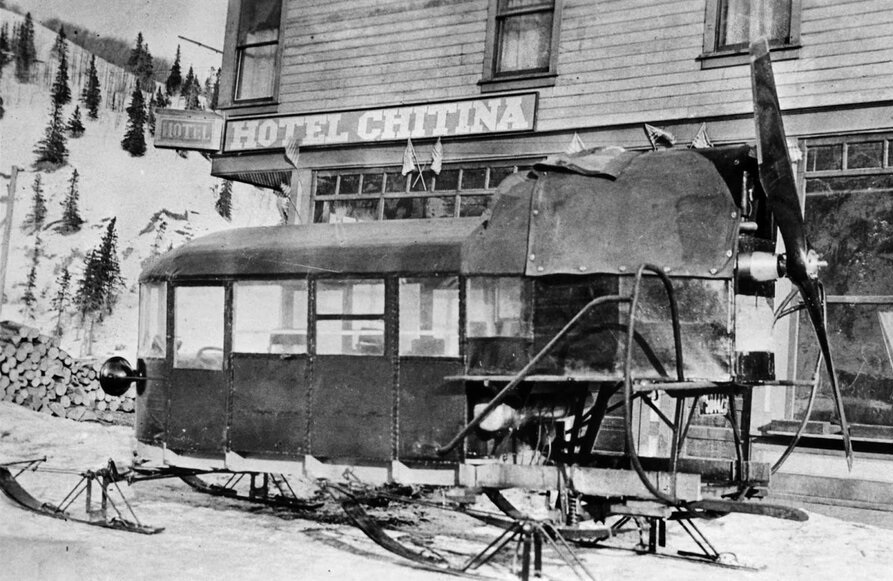
In Part 2 of Museum Curator Andrew Goldstein’s series on the development of snow machines in Alaska. Pictured above is a Corbett’s Air Sled, photographed in Chitina in 1916. Herman Sontag constructed the snow sled out of metal tubing and an O-X Curtis airplane engine. See photos of various other weird and wacky devices that have been used for snow travel and snow removal up here in the U.S.’s snowiest city by clicking here.
LIVE From the Archive – Wrapping It All Up!

‘Tis the season for wrapping up and mailing packages, something that Museum Curator Andrew Goldstein, keeper of the VMHA collections, says he does fairly often. So he thought this was an good time to give advice on the best way to to that. This broadcast deals with the finer points of using crates and bubble wrap among other materials designed to keep fragile objects safe as they face the trails of going through the mail. Click here to learn his expert tips!
“What is it Wednesday?”

You can learn the convoluted history of the Fordson Snow Motor in Part 1 of a series on crazy snow-removal contraptions. Valdez has turned into a “winter wonderland” after a recent dumping of snow, so Museum Curator Andrew Goldstein thought, this would be an appropriate time to talk about some of the crazy, wacky, creative contraptions that have been used in Valdez for the purpose of traveling over, removing, and pushing aside snow. During the course of this video viewers can see various renditions of the unique piece of snow removal equipment pictured above. Click here for more.
LIVE From the Archive – Overcoming the Digital Divide
The “ins and outs” of keeping museums relevant and active during the Pandemic, but also moving forward with technology in the digital age in a way that includes all sectors of society. Join your host, Museum Curator Andrew Goldstein, to hear more about this pertinent topic by clicking here.
“What is it Wednesday?”

This week Museum Curator Andrew Goldstein takes a brief look at the history of sports in Valdez and the evolution of team mascots, which goes back farther than you think! He says Valdez Museum founder Joe Bourke talks about playing baseball on the 4th of July as far back as 1898. As for school sports teams, before there were Buccaneers, there were Cardinals, and he tries to answer the question of why there was a team name change. See his romp through photos of “old timey” sports uniforms and more by clicking here.
LIVE From the Archive – Survivor Bias

Museum Curator Andrew Goldstein describes the term survivor bias as a term that’s used in quite a lot of different fields, but all boils down to basically the same thing: the idea that what has survived to the present day may not represent all that there ever was of it. Or to put it another way, when you only concentrate on what’s lasted, you get a distorted view of things because you can’t see the stuff that hasn’t survived. Check out this week’s video and find out how it all relates to this photo of fancy medieval armor by clicking here.
“What is it Wednesday?”

Just sit right back and you’ll hear a tale…of a most unlucky ship! This one struck the Valdez dock in 1912. Oops! Find out more by clicking here.
LIVE From the Archive – Museum Happenings
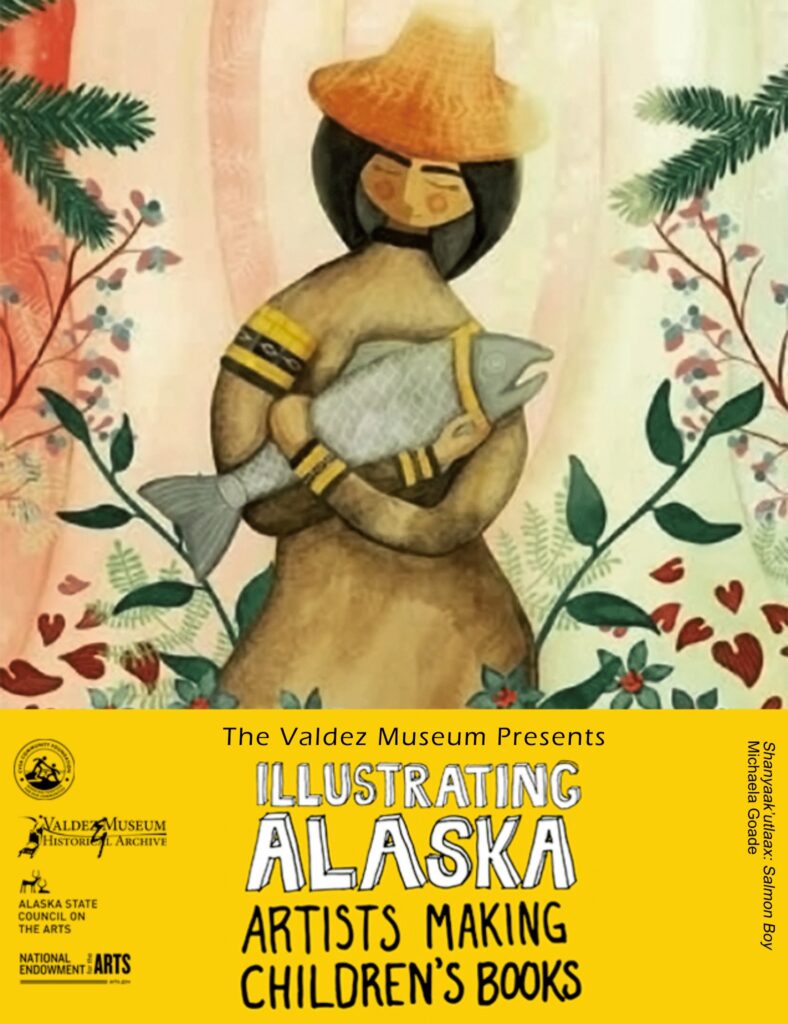
On this week’s video Museum Curator Andrew Goldstein gives a run-down of upcoming Valdez Museum programs and events, both in-person and online. One of them is represented by the above poster announcing our new temporary exhibit that opens on Jan. 28, 2022. Click here to get the whole rundown.
“What is it Wednesday?”

At the top of this broadcast Museum Curator Andrew Goldstein introduces what he calls, an ubiquitous piece of Alaskana, noting its significance might not be immediately obvious. His introduction: Ladies and gents, I present to you: the humble Blazo box! (shown in the above photo) He says Blazo boxes, or crates that originally held square cans of aviation fuel, are found throughout bush Alaska and often repurposed as furniture and construction materials. Find out more about some of their unique uses by clicking here.
LIVE From the Archive – Civil War in Alaska?

In his broadcast Museum Curator Andrew Goldstein addresses this question, Did you know that the last battle of the Civil War was fought in Alaska? It all has to do with the CSS Shenandoah going after the Yankee whaling fleet in the North Pacific. Enjoy this little history lesson, which Andrew says is, one of those weird little unexpected historical events that I love so much. Click here to learn more.
“What is it Wednesday?”

In a previous What is it Wednesday? broadcast Museum Curator Andrew Goldstein gave a long history lesson on what is commonly known to Valdezans as the “Chinese Cemetery.” In the current broadcast he speculates about the possibility of ANOTHER Chinese Cemetery. Click here to watch him unravel this mystery!
LIVE From the Archive – Russian Plaques

200 years ago, the Russians buried priceless bronze plaques throughout Alaska according to Museum Curator Andrew Goldstein. He ponders, Could there still be some out there in Prince William Sound? He says yes, but goes on to explain why we won’t be digging them up anytime soon! Click here to learn more.
“What is it Wednesday?”
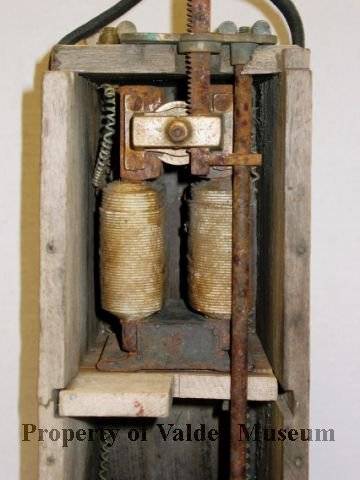
Museum Curator Andrew Goldstein has picked out a real “blast of an artifact” aka, Reliable Blasting Machine No. 3. Learn all about the history of this object as well as the explosives industry, plus you can hear Andrew’s sexy French accent in the process! Just click here.
LIVE From the Archive -100 Years of Healthcare in Valdez-Part 2
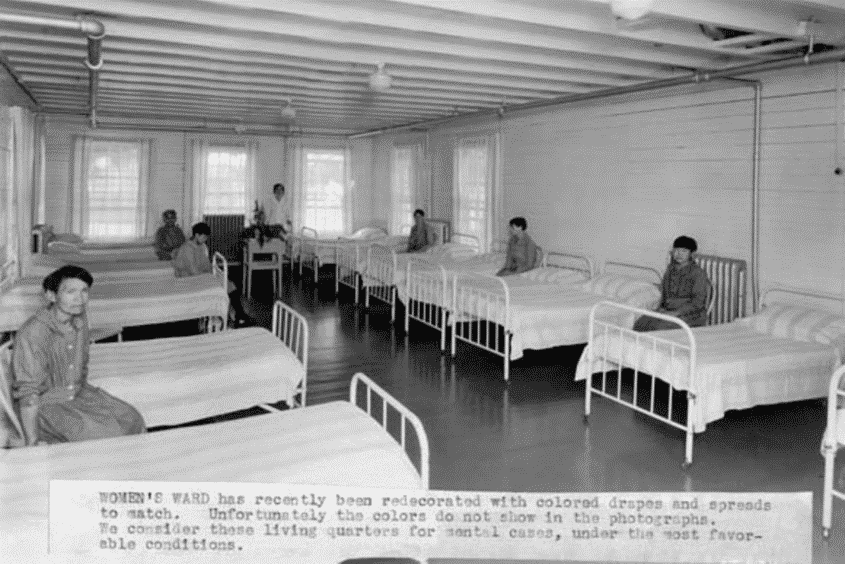
In Part 2 of his broadcast on the history of healthcare in Valdez, Museum Curator Andrew Goldstein shares information about the State of Alaska’s initial lack of care for its mentally disabled residents, who for many years were sent to Portland, OR and sequestered in Morningside Hospital. Then, as the importance of in-state facilities was recognized by the legislature, patients were returned to Alaska and Valdez boasted the Harborview facility as the town’s largest employer. You can follow along with the conclusion to Andrew’s thorough coverage of Valdez healthcare history by clicking here.
“What is it Wednesday?”

Museum Curator Andrew Goldstein attempts to answer the oft-asked question, “What did Valdez do about the 1918 flu epidemic?” Try as he might, Andrew found very little information to help him answer that question. But in this broadcast he looks at how communities around Alaska fared during the deadly epidemic that occurred over a century ago–that includes neighboring Cordova that kept out the flu by means of quarantine, requiring visitors to isolate for five days before entering the town, as the headline above indicates. Click here to learn more.
LIVE From the Archive -100 Years of Healthcare in Valdez!
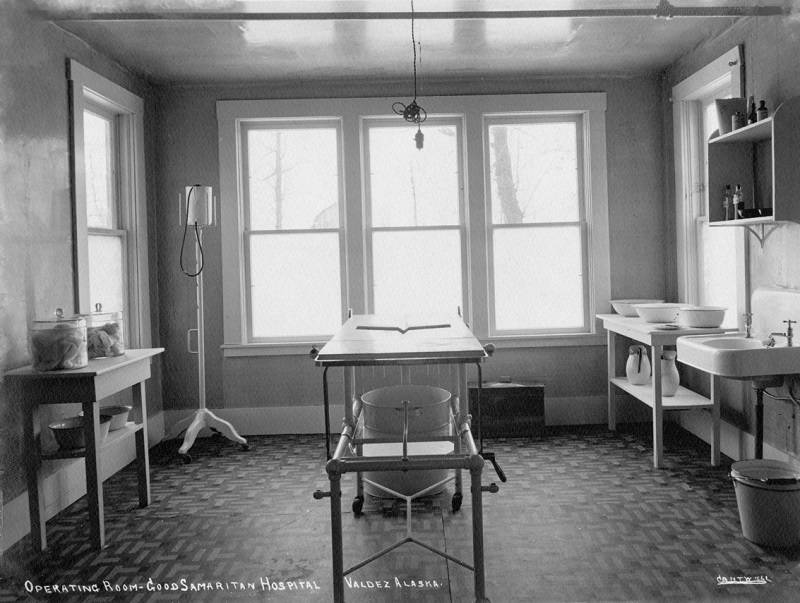
In Part 1 of a 2 part series Museum Curator Andrew Goldstein begins an in-depth look at healthcare in Valdez, and how it has developed over the past century. He says, “The history of Valdez health care can be broken down into three distinct eras– Valdez’s formative years, the health crises of the 1940s and 50s, and post-earthquake relocation and the continuation of health services in the new town.” Pictured above is the operating room at the first “real” hospital in Old Town Valdez operated by the Episcopal Church of the Epiphany. This “Hospital of the Good Samaritan” opened in 1903 and operated into the 1940s. You can follow along with Andrew’s account of early healthcare in Valdez by clicking here, and be sure to tune in next week for the “rest of the story.”
“What is it Wednesday?”
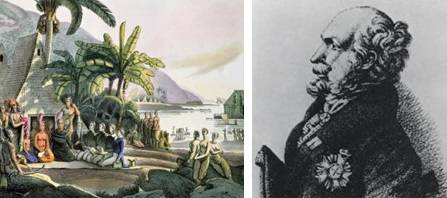
Museum Curator Andrew Goldstein is back from Hawaii!! Looking tanned and relaxed for this FB live broadcast he attempts to answer this question, “Could Russia have become a Pacific powerhouse?” as he takes a look at the time they tried to annex Hawaii. Get a glimpse of Andrew’s cool Hawaiian shirt while he shares this piece of Hawaiian/Russian lore. Just click here!
LIVE From the Archive-Pipeline Construction

What happens when you take tens of thousands of Oklahomans and Texans, pay them a lot of money, and ship ‘em up north? Why, you build a pipeline! With these words Museum Curator Andrew Goldstein begins his broadcast that takes a look at the wild and wooly days of Valdez’s frontier era: Pipeline construction. And he takes you through the pages of Campfollower, a weekly newspaper by and for pipeline workers. It’s full of news and updates about this megaproject, chronicling its progress throughout the whole construction phase. See the broadcast by clicking here.
“What is it Wednesday?”
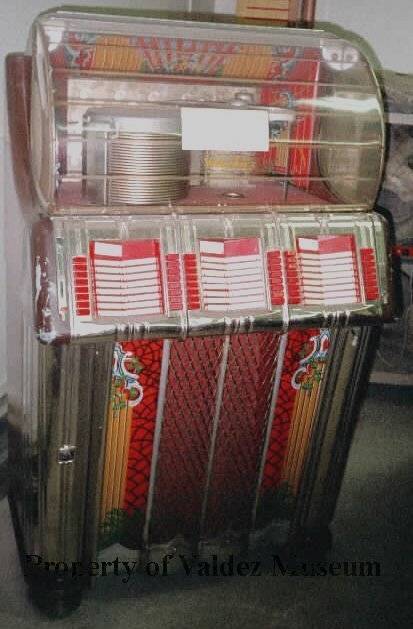
“Big Marge” aka Gilberta Rose Hanson was a Librarian, homemaker…and brothel madam–that’s where the jukebox comes in. According to Museum Curator Andrew Goldstein, this particular machine was a fixture at a Valdez’s “late evening pleasure palace” – that’s right, a brothel. Find the whole story by clicking here.
“What is it Wednesday?”
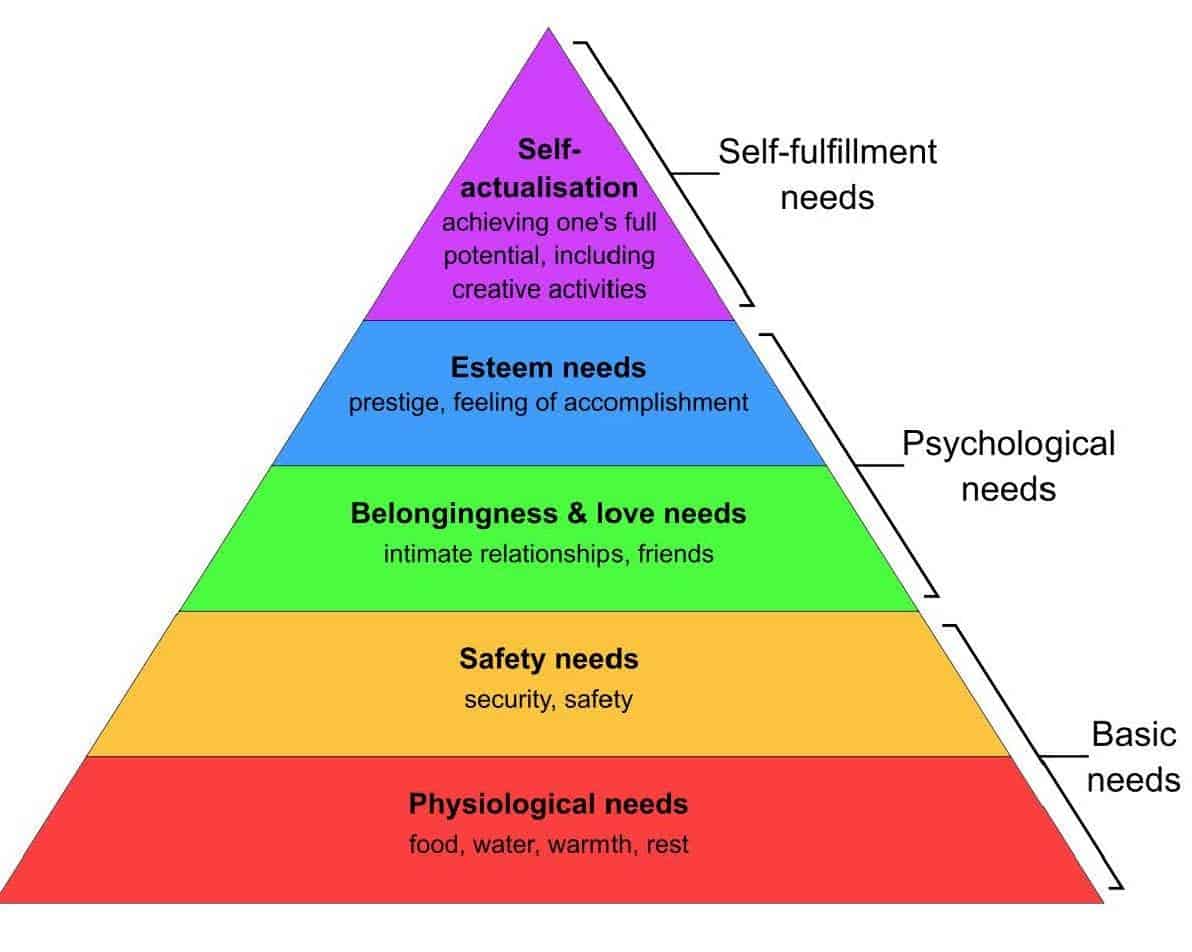
This week Museum Curator Andrew Goldstein explains the concept of Universal Design in relation to your Valdez Museum visit. In a nutshell, he says, For you that means you’re comfortable enough to have a pleasant and educational experience. For us, it means more satisfied customers, and all the more people through the door. Click here to learn more.
LIVE From the Archive-True Stories of Chairs tour
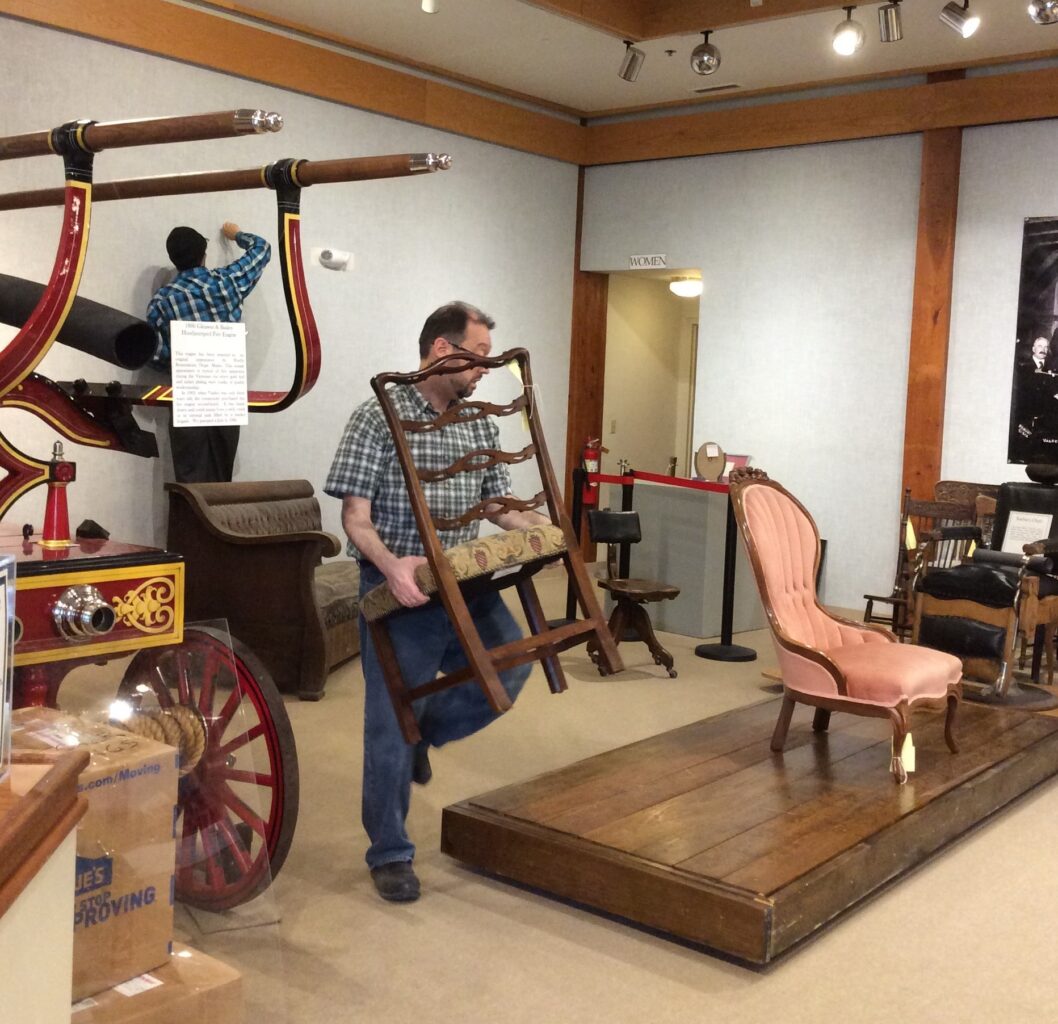
This week you’ll get a sneak peak of our new exhibit True Stories of Chairs which runs Sept. 21, 2021 – Jan. 16, 2022. It includes furniture on loan from within the community plus drawing from the VMHA collection. Museum Curator Andrew Goldstein says the exhibit is a way of, “using chairs as a vehicle to express the history and stories behind the people who sat in them.” Join his tour of exhibit construction in the Museum’s Egan Commons by clicking here.
“What is it Wednesday?”
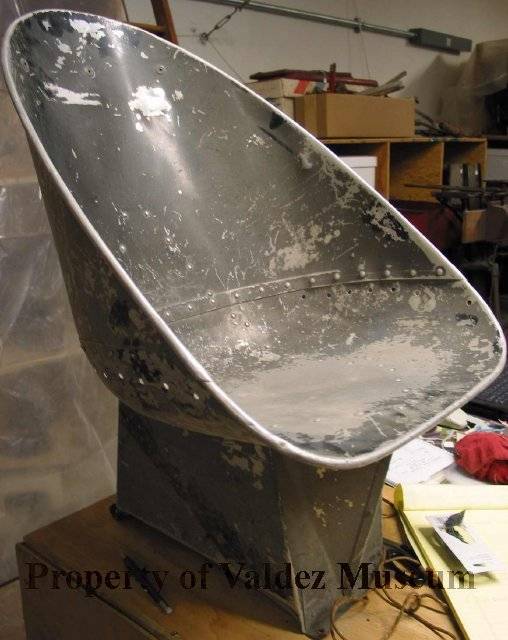
In deference to the upcoming 2021 Fall exhibit True Stories of Chairs, Museum Curator Andrew Goldstein shares some chair artifacts that have a connection to Valdez’s pioneering history in the field of bush aviation. Click here to check them out!
“What is it Wednesday?”

This broadcast focuses on one particular photograph from the VMHA collection. Museum Curator Andrew Goldstein says, “Finding the background on it was a little slow to start, but it was too goofy not to share. This photograph was taken on May 24, 1985, and as you can see, it shows a friendly-looking robot bearing Valdez Police insignia, entertaining a group of young kids and their moms.” The photo peaked his interest and inspired him to take a closer look as to what it was all about. In this video he shares his search into the Valdez Police Robot. Click here to follow along!
“What is it Wednesday?”
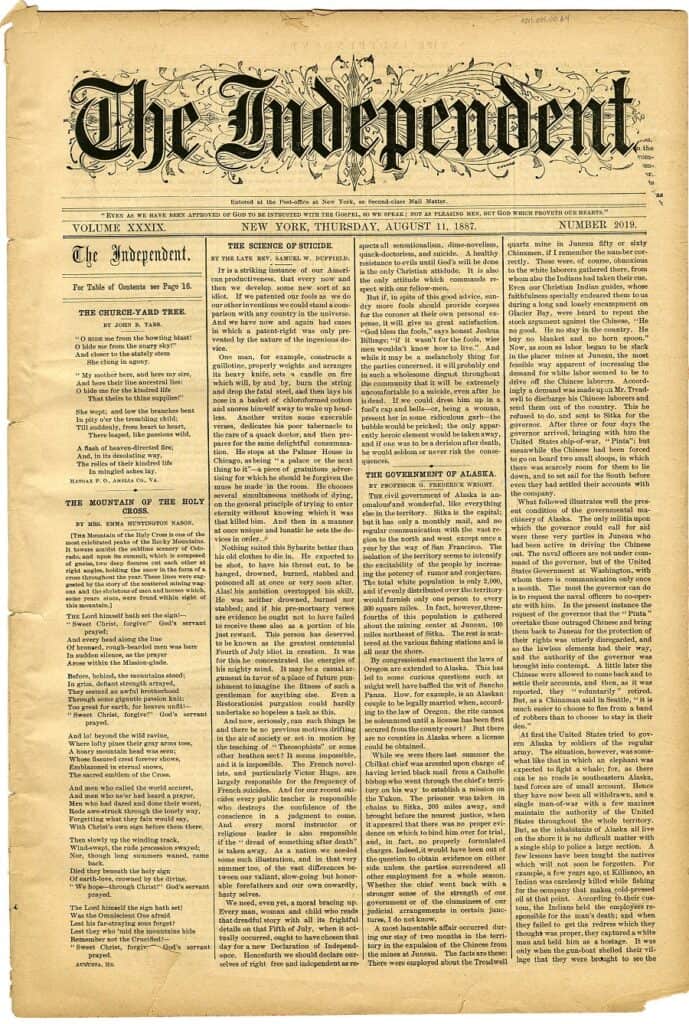
Most of us know that Alaska was a territory before it was a state. But before THAT, it was a few other things as well! According to Museum Curator Andrew Goldstein, “The desire for statehood was motivated by the desire for self-governance, and autonomy over Alaska’s wealth, defense and natural resources, without the control of outside interests lacking in any real connection to Alaska.” He adds, “Not coincidentally, these same concerns were driving forces for all of these pre-Territorial shifts in administration, and remain concerns to Alaskans even today.” Click here to learn more.
LIVE From the Archive-Lore on the Name “Valdez”

There’s lots of lore floating around about the town’s name, so Museum Curator Andrew Goldstein delves into unravelling it all to learn how Puerto de Valdes become the Port of Valdez. Click here to find out!
“What is it Wednesday?”

This week Museum Curator Andrew Goldstein introduces one Valdez-born artist who really took the art world by storm–Mark Storm that is! He was born in Valdez on September 4, 1911 to Bertha Catherine Kennedy and Lynn Whippo Storm, a mining engineer. After leaving Valdez he became well-known in the circle of cowboy art enthusiasts and made his home on the range painting dramatic scenes of Western and cowboy life. Andrew covers Mark’s rise to fame as an artist, adding, “Valdez has inspired a number of highly skilled and well-regarded artists over the years. Why? Maybe it’s the scenery.” Get the whole story by clicking here.
LIVE From the Archive-Advisory Groups, Part 2
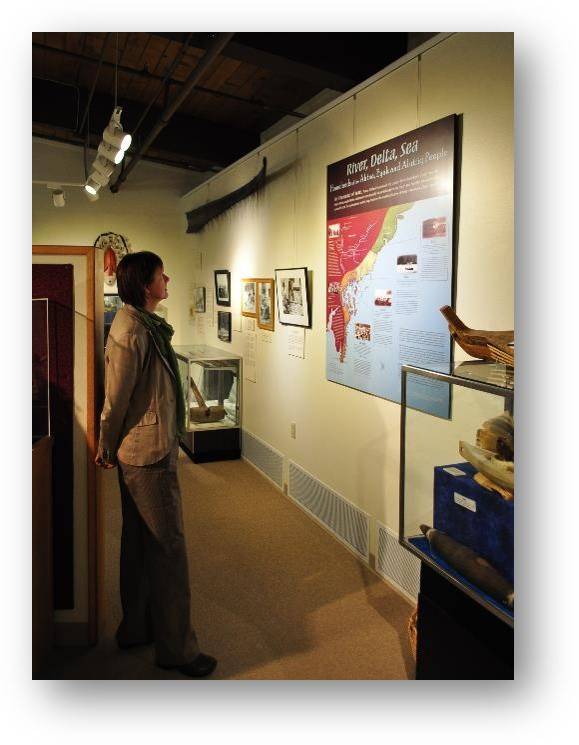
In Part 2 of Museum Curator Andrew Goldstein’s series on Advisory Groups he gives some examples of projects that the Valdez Museum has worked on, and talk about some success stories as well as pitfalls and obstacles to look out for. Andrew goes into depth about planning for several large scale exhibits such as the Exxon Valdez Oil Spill and improvement of our Alaska Native interpretation. He says, “This overhaul included the production of a wall-sized map (pictured above) that showed the historical locations of Native settlements and territories in our region” Click here to learn more.
“What is it Wednesday?”
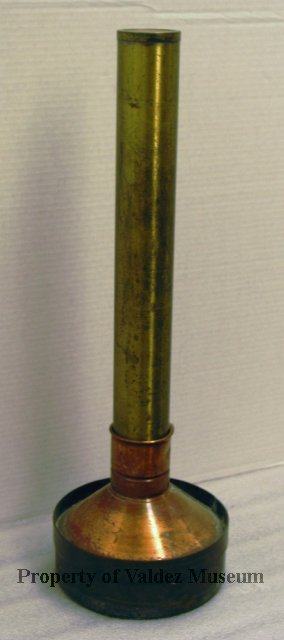
“Everybody talks about the weather, but nobody does anything about it.” This often-repeated quote is often attributed to Mark Twain. But according to Museum Curator Andrew Goldstein, that is not the case, yet he says, “While the humor comes from its absurdism – after all, can we really do anything about the weather?” But in in this video you’ll learn all about the importance of weather tracking in Valdez. Click here to get started.
LIVE From the Archive-Advisory Groups & Exhibit Planning
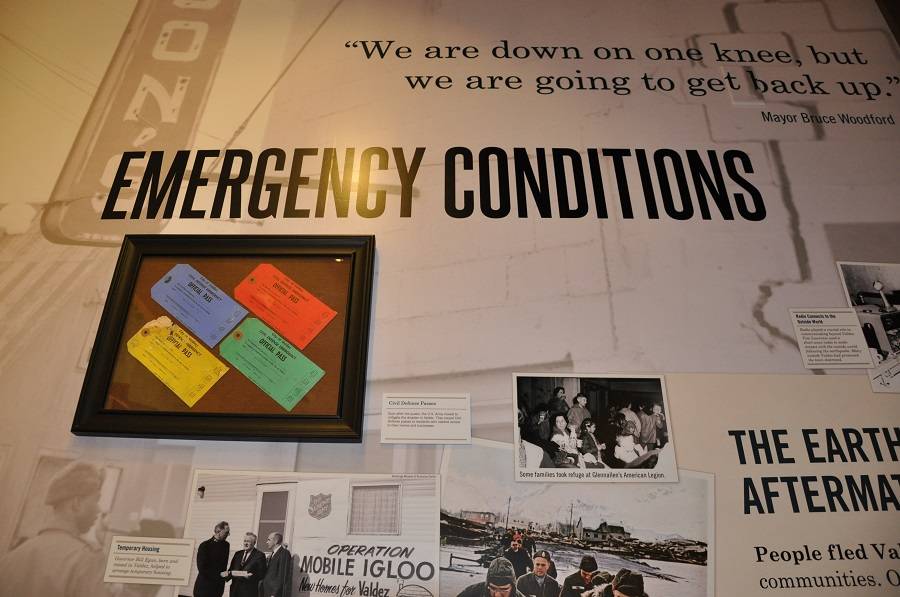
“What’s a museum to do when designing an exhibit with controversial subject matter?” The question posed by Museum Curator Andrew Goldstein is answered this way, “We use advisory groups.” His video goes into the various ways that exhibits are developed, and Andrew says input plays a key role, “Please, let us know how we’re doing, whether it’s an exhibit, a program, or planning a whole new museum. Your input matters, and we need it to be the best we can be.” Click here to learn more.
“What is it Wednesday?”
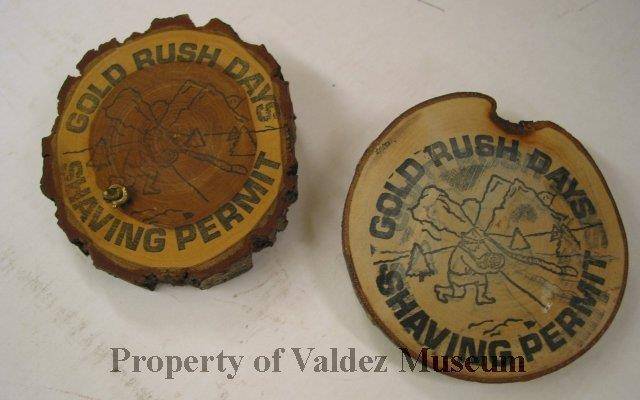
This week Museum Curator Andrew Goldstein shares some Gold Rush Days rarities that help illustrate the early days of this popular Valdez community celebration. Pictured above are two wooden shaving permits. Andrew says, “I think it may have had something to do with the beard-growing contest that was a part of Gold Rush Days at the time.” And he shares other items from the Museum’s extensive collection of GRD memorabilia. See them by clicking here.
LIVE From the Archive-Gold Rush Names Database
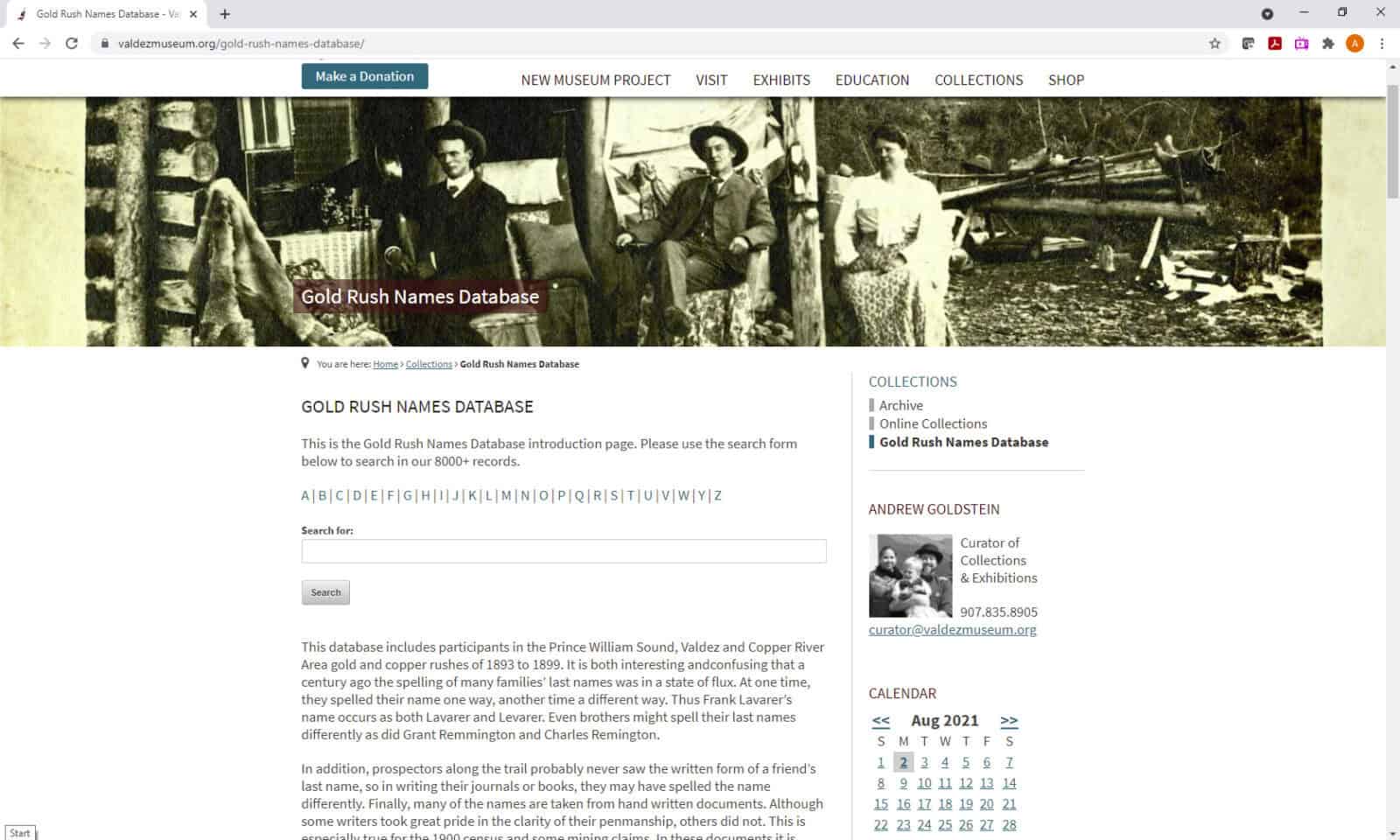
With the 2021 Valdez Gold Rush Days celebration upon us, Museum Curator Andrew Goldstein shares tips about doing research using the Museum’s online Gold Rush Names Database. Click here to learn more.
“What is it Wednesday?”
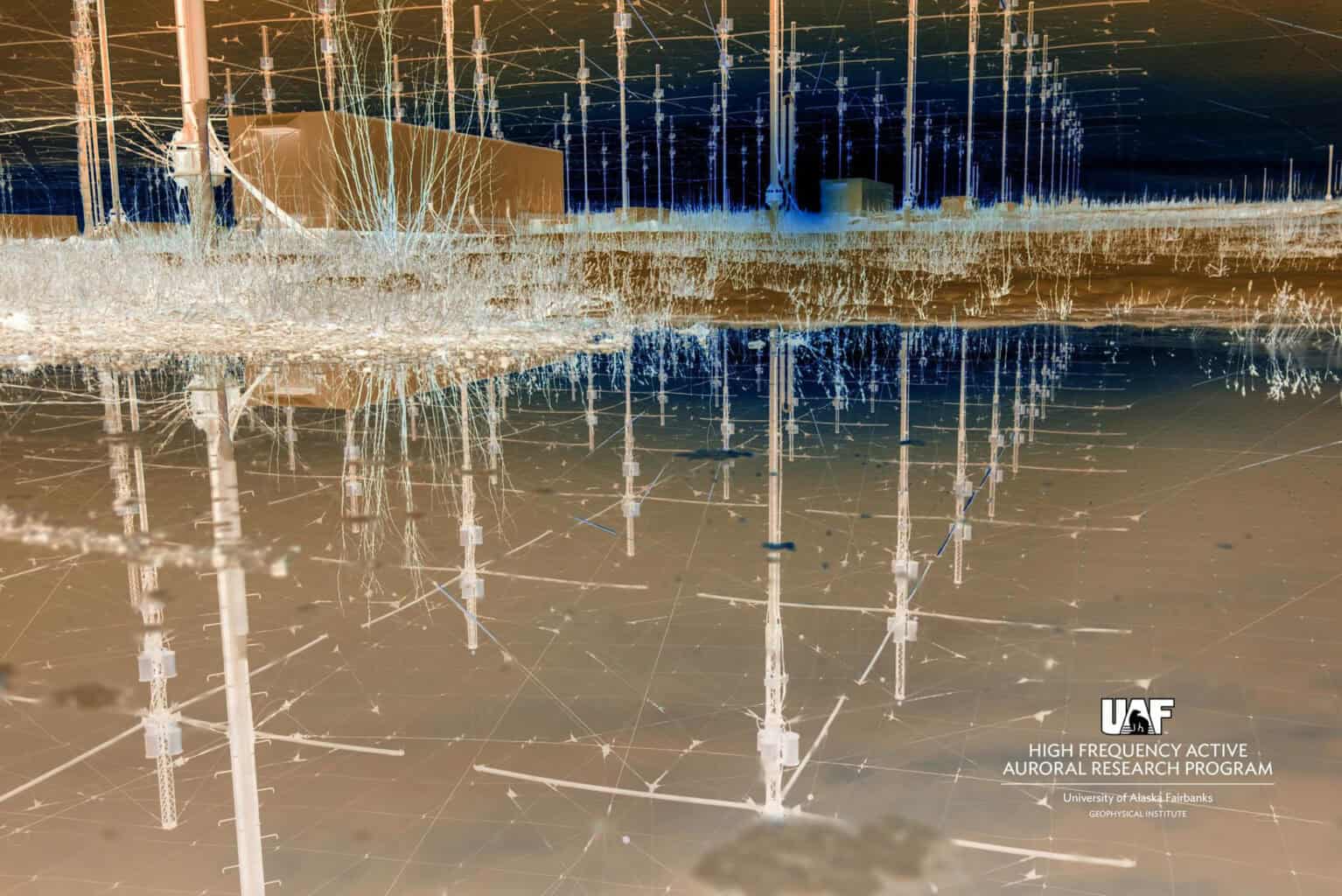
Today’s subject: conspiracy theories with the focus on Gakona, AK area, specifically a fenced-off complex of buildings known as HAARP, the High Frequency Active Auroral Research Program. Museum Curator Andrew Goldstein says, “HAARP is a favorite topic for conspiracy theorists, with allegations linking the facility to everything from earthquake and weather manipulation, to mind control.” He goes on to debunk a few myths and give some scientific explanations about the maze of instruments used in this research program. Get the full story by clicking here.
LIVE From the Archive-Cookbooks–Food for Thought!
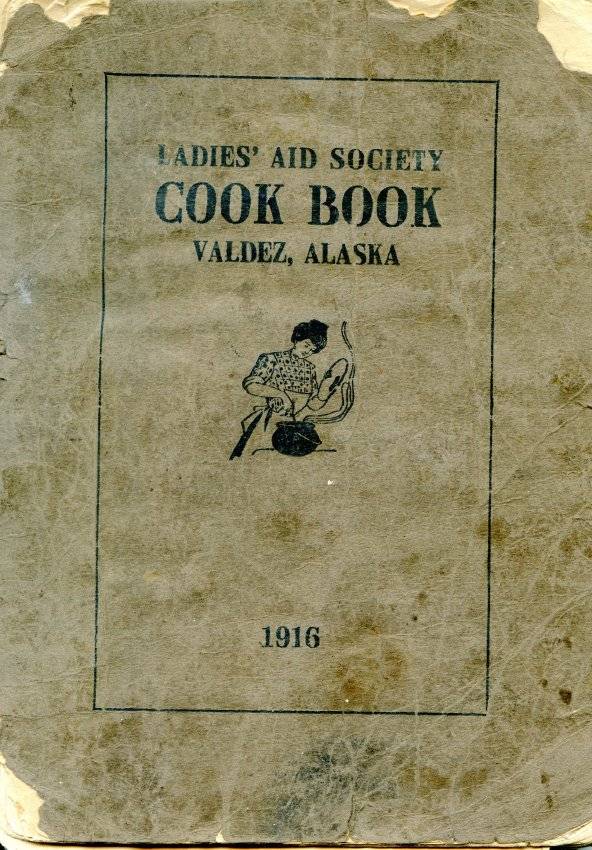
This 1916 cookbook, published by the Ladies’ Aid Society here in Valdez, is one of several cookbooks from the Museum’s Collections highlighted by Museum Curator Andrew Goldstein. He says the oldest one is “Alaska Cook Book for Miners, Prospectors, Campers. A guide to Wholesome Camp Cooking” published in 1897. In his words, “If you know how to look, cookbooks can be pretty revealing about our communities, changes in technologies and traditions, and the stories that we tell about ourselves. Just some food for thought.” Click here to learn more.
“What is it Wednesday?”

This week Museum Curator Andrew Goldstein addresses the question of why museums don’t put their whole collections on display. He says, “If we were to really display everything you would see some fascinating artifacts, but you’d also be looking at stacks of cancelled checks, coffee cans full of nuts and bolts and fragments of wood.” Yet many objects do have research value and therefore it is useful to keep them for historical purposes. To learn more click here.
LIVE From the Archive-Celebrating the Mundane!
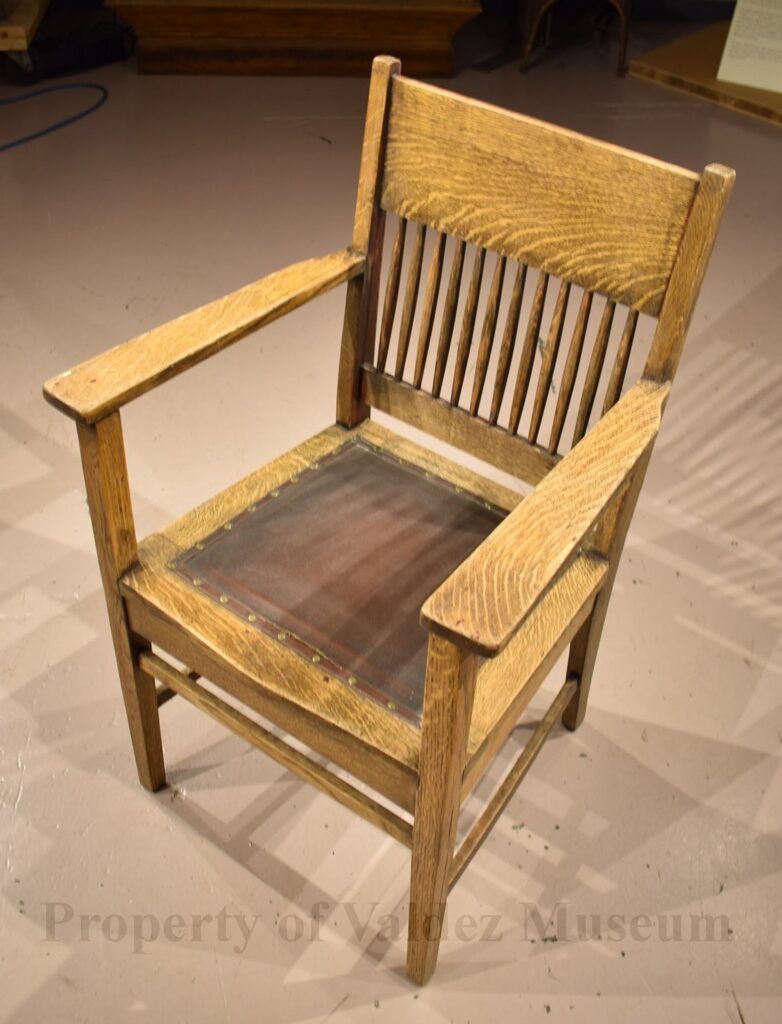
Host Andrew Goldstein, Valdez Museum Curator, maintains that it’s those everyday items – the mundane stuff of our day to day existence – that can be used to talk about history just as well as those items that are truly extraordinary. For instance–chairs–the subject of our upcoming Fall 2021 exhibit. He says, “The idea is to use chairs, from the museum collection and loaned by community members, to tell the stories of life in Valdez through the years, as told by those who sat there. Using a lighthearted presentation style, the chairs will be paired with photographs and text that provide biographical sketches and historical context.” And he invites participation from anyone who has a chair and story to share! To see Andrew’s presentation just click here.
“What is it Wednesday?”
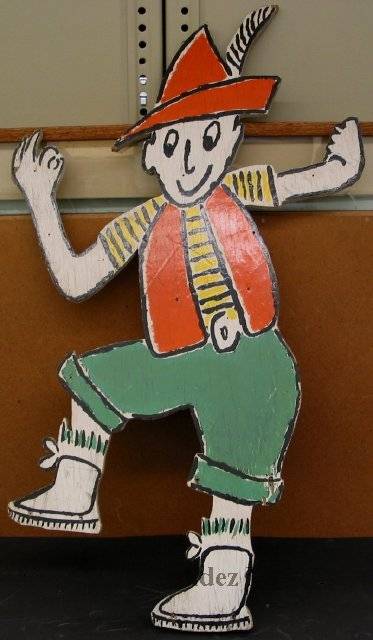
Even as far back as the 1900s developers started to market Valdez to potential investors in the Lower 48. But perhaps one of the most established slogans for Valdez was used by the Chamber of Commerce from the 1940s through the 60s: “The Switzerland of Alaska”. Why Switzerland? The Valdez area does bear a certain resemblance to the Swiss Alps, with its grand vistas and breathtaking mountainscapes, and this visual resemblance was picked up on by those marketing Valdez. But what really cemented the connection between Valdez and Switzerland came about in its branding, when Dorothy Devault, a strong advocate for tourism, came up with a mascot, “Chris the Swiss”. Learn the whole story by clicking here.
“What is it Wednesday?”
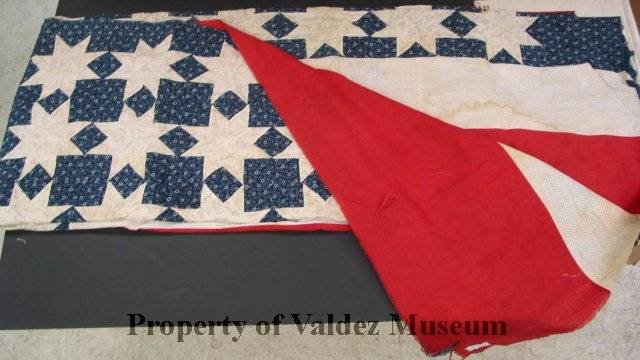
hat is it Wednesday goes patriotic in honor of the upcoming July 4th 2021 celebration! Museum Curator Andrew Goldstein broadcasts from the Held House in the Remembering Old Valdez Exhibit. He says, “July 4th has always been a big holiday here in Valdez, at least since prospectors started arriving in 1898. The focus is on this American flag pattern quilt top donated to the Museum by long time Valdez resident Dorothy Clifton. Take a tour of the Held House and learn more of the story by clicking here.
LIVE From the Archive-Developing Exhibits
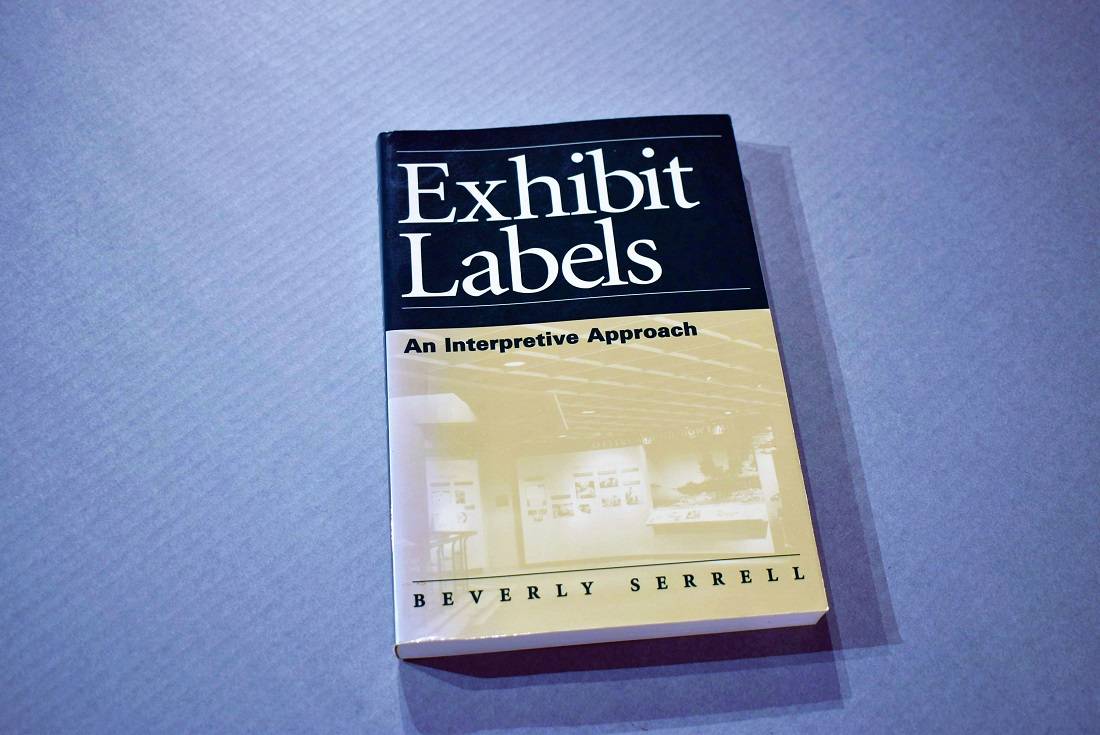
Learn what it takes to write a clear concise label for a museum exhibit, plus why “brevity rules” in the world of exhibit labels! Click here to get the whole story from Museum Curator Andrew Goldstein.
“What is it Wednesday?”
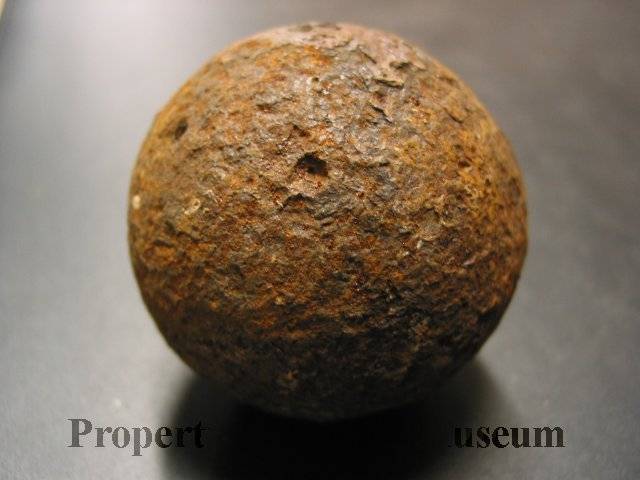
Is it a cannonball, or something else? It’s a cast-iron sphere, somewhat hefty, and heavily rusted. Got you guessing yet? Well here’s a hint–it has something to do with gold mining. To get the whole story click here!
LIVE From the Archive-Lighthouse Lens Lore

This week Museum Curator Andrew Goldstein broadcast from the Valdez Museum on Egan, standing in front of what he calls, “one of our signature artifacts: the lighthouse lens from the Cape Hinchinbrook Lighthouse. It’s a real crowd-pleaser, and a beautiful item well-known to local visitors because, well, you can’t miss it when you walk in.” He goes on to explain how this beautiful artifact that weighs 1,600 pounds is not actually part of the VMHA collection, but rather on permanent loan from the Alaska State Museum. Intriguing, right? Click here for the whole story.
“What is it Wednesday?”

“This piece is my favorite from this collection because it has such a simplicity of design, but its sturdy functionality as a brooch, it’s bold Alaskan state flag colors, and the bear-paw bottlecap (taken from an Alaskan brand of beer) all give it an aesthetic that really say “Alaska” to me.” Museum Curator Andrew Goldstein refers to the Scott Semans Collection of nifty pins and brooches put together by a regular attendee of Valdez’s annual Last Frontier Theatre Conference. Learn more about this quirky collection by clicking here to watch Andrew’s video.
LIVE From the Archive-Exhibit Planning
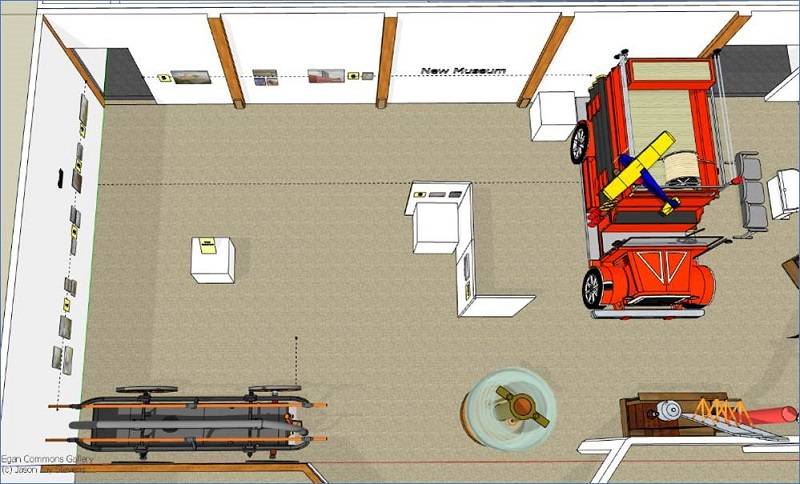
This week’s video by Museum Curator Andrew Goldstein takes an in-depth look at the process of developing and implementing a museum exhibit. From content and space considerations to use of “Sketch-up” software that helps facilitate the design process he goes through all the steps! Click here to learn more.
LIVE From the Archive-Researching LGBTQ History in Valdez
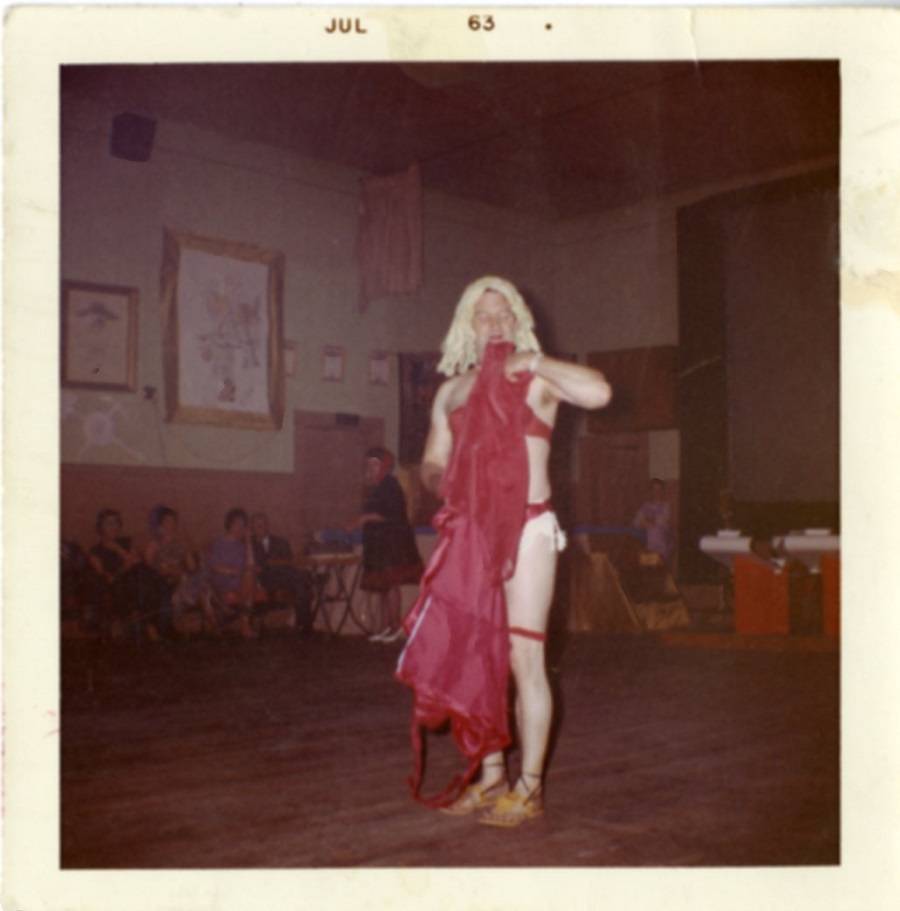
In honor of June as Pride Month, Museum Curator Andrew Goldstein talks about LGBTQ history, and how to research it, which he says is, “a growing area of research and telling the stories of non-hetero people helps us to get a more complete picture of the past, furthers the cause of better and more diverse representation in the historical narrative, and can give us new perspectives on events as we know them as well as bringing new stories to light.” Watch his complete presentation by clicking here.
“What is it Wednesday?”

For over 100 years, people have dreamed of bridging the Bering Strait. Is such a project really feasible? That’s the topic Museum Curator Andrew Goldstein addresses in this week’s video, saying “It certainly sounds cool: who wouldn’t love to be able to travel by rail from Alaska to Russia? A land-based link across the strait would be a megaproject on the same scale (or larger) than the Panama Canal, with equally significant repercussions.” He looks at the pros and cons of such a project, going back to the time when it was first envisioned. Click here to learn more.
“What is it Wednesday?”
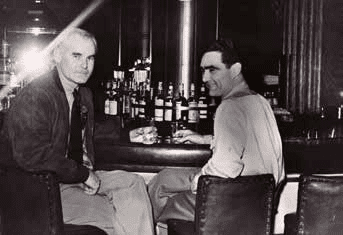
According to Museum Curator Andrew Goldstein, “Valdez has had a close connection to aviation since the early days of commercial flying. In fact, Valdez was in many ways the birthplace of bush piloting, being home to many innovators who pioneered techniques in flying to some of the most remote locations in Alaska.” In this week’s video he shares the tale about a gathering of Alaska pilots at the Idlehour night club in Anchorage who were protesting Federal regulation of air travel around the state. Alcohol fueled anger ultimately resulted in what he termed, “the mother of all bar fights.” In addition to that story, he shares a wealth of information relating to the history of aviation in Alaska. Click here to learn more.
LIVE From the Archive-The (What Color) Warehouse?
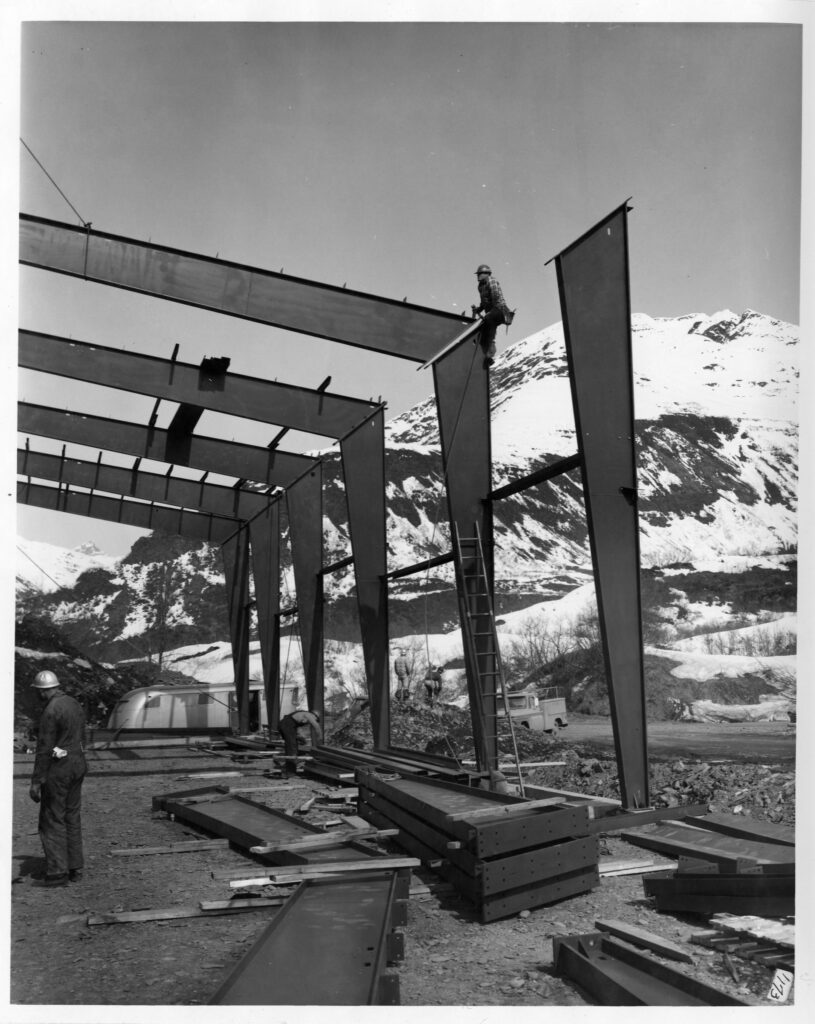
Should every historic building be preserved? And what’s happening with the former “yellow warehouse”? Well, Constructed by the Army Corps of Engineers and subcontracted local labor, Warehouse #1 played a prominent role in New Town Valdez. The reason it was built early on was because the construction teams needed a place to store equipment, so the building stored municipal construction materials throughout the new town’s construction era. The building has been showing its age, new entryway notwithstanding, and the building was never intended to be used as a museum. BUT–it can no longer be called the Yellow Warehouse–because it’s been painted BLUE! Click here to learn more.
“What is it Wednesday?”
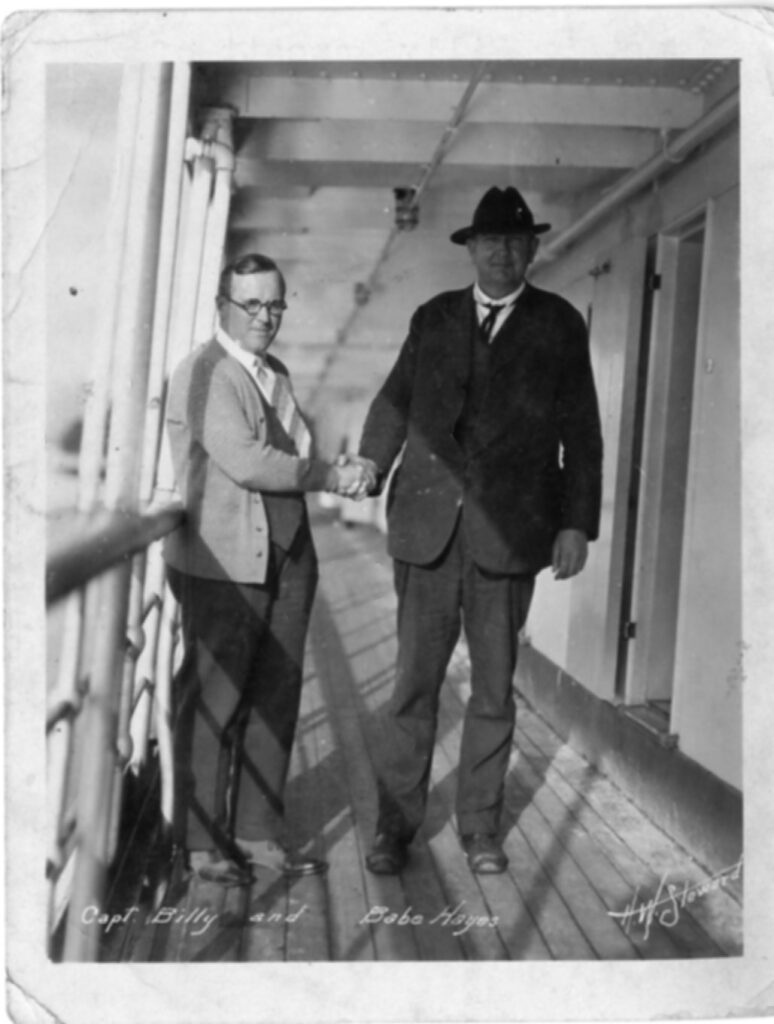
“Captain Billy” (pictured above) was Wilford Hamilton Fawcett, a colorful character in early twentieth century publishing. Fawcett got his start in publishing as the editor and producer of a bawdy men’s humor magazine called Captain Billy’s Whiz Bang. He was also a veteran of two wars, an Olympic athlete, a world traveler, a big-game hunter, and a resort owner. Museum Curator says, “With my background in comic books, this was a pretty exciting find for me – it’s sort of funny how bits of my past lives – that is, pre-Alaska – come back to haunt me occasionally. And I think it’s really interesting how one can have so much to tell about this one little black and white photograph. It’s not even a particularly complex photo, but in this one image we get a key figure in the early 20th century publishing industry, a significant figure in labor history, as well as a bit of Alaskan photographic and transportation history.” For more of this story just click here.
LIVE From the Archive-The Humble Conex
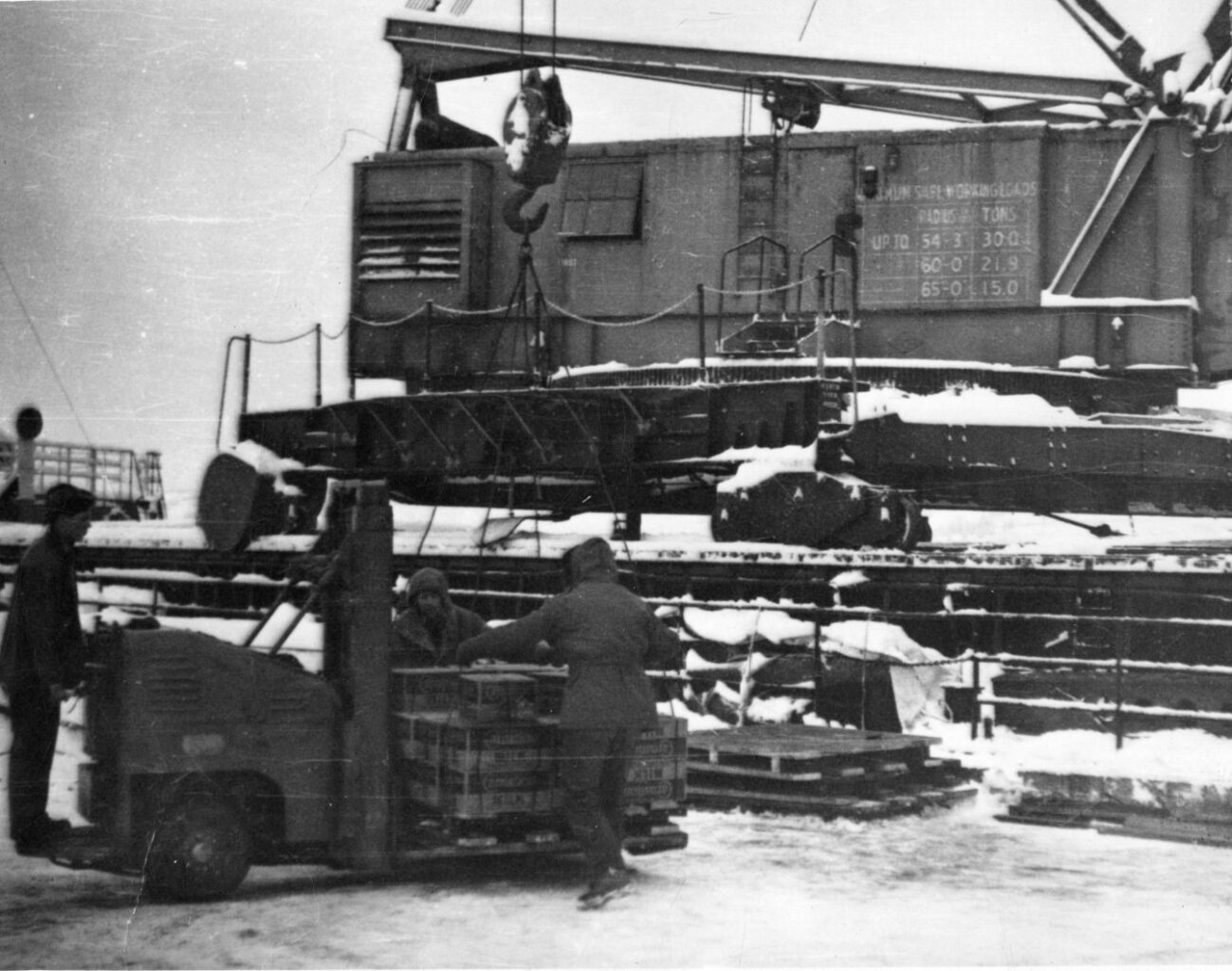
Some may call these enclosed shipping containers that dot the Alaska landscape ugly, but they played an important role in revolutionizing how goods were shipped to the Last Frontier. The term Conex originated in 1952 as a U.S. Army term for “Container Express”. And this week, Museum Curator Andrew Goldstein broadcast his show outside, standing right next to one of these marvels. Click here to get the full story!
“What is it Wednesday?”
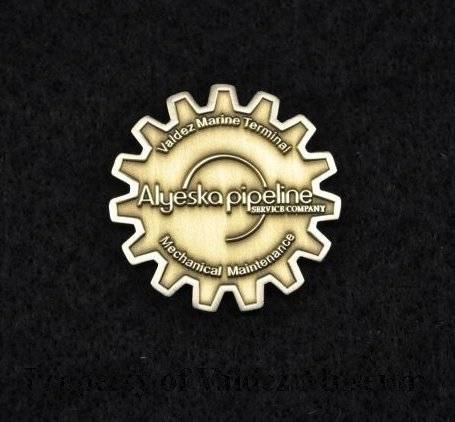
Alaska has a long history with coinage, and this week Museum Curator Andrew Goldstein explores a collection of tokens minted by Alyeska Pipeline Company, which runs the Trans-Alaska Pipeline System. Tokens like the one pictured above are actually made for company employees to serve as an incentive for meeting performance objectives like safety and maintenance. Andrew elaborates on that concept, and you can click here to find out more.
LIVE From the Archive-Tour the Valdez Library Alaskana Collection

For this week’s show Museum Curator Andrew Goldstein dropped by the Valdez Consortium Library to have a chat with Head Librarian Mollie Good, who focused in on the Alaska Room, aka Egan Room, named after that famous Valdez family. She gave an overview–Valdez and Alaska oriented material from the days of old up to the present–recipes, roadmaps, wildflowers, sailing around Prince William Sound, plus books by local back-country ski gurus and outdoor enthusiasts. As Mollie says, It’s kind of your “one stop shop” for all things Alaska in the library. Check it out here.
“What is it Wednesday?”
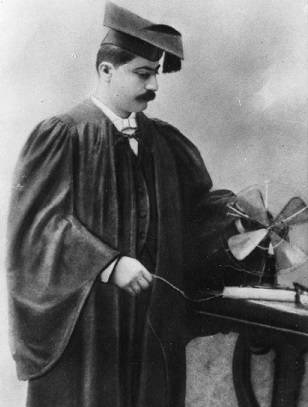
“Daoud Selim was a Turkish national born in Israel in 1860, who spent his early years in Syria. The guy was also kind of brilliant.” With those words Museum Curator Andrew Goldstein continues his biography theme, sharing details from the extraordinary life of (as he became known) David Sleem who was a man of many talents that include inventing the electric fan (hence the above photo). Get the whole story by clicking here.
LIVE From the Archive-FURS and how to care for them
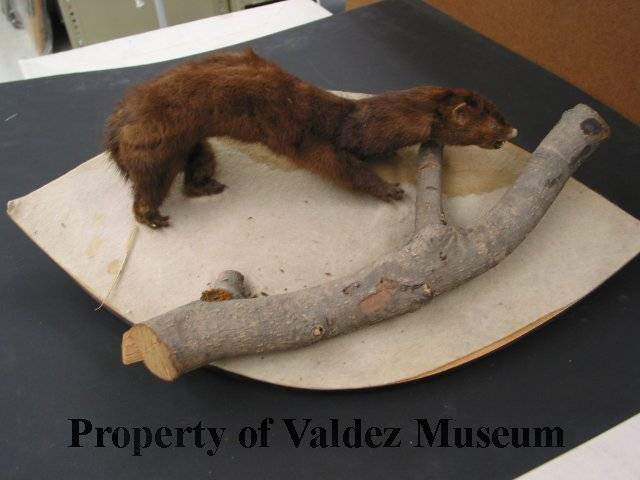
In this episode Museum Curator Andrew Goldstein proudly displays a a great donation we received recently from the Valdez Animal Shelter–a collection of animal pelts and skulls from critters that all seem to be native to Prince William Sound and the Copper River Basin, which makes these specimens a great learning tool for our area’s natural history. They can be used as examples in our exhibits when we want to talk about the people who’ve lived here and their connection to the environment, the land, the animals that also live here. He also passes on lots of useful information on how to best handle and store furs. Click here to learn more.
“What is it Wednesday?”
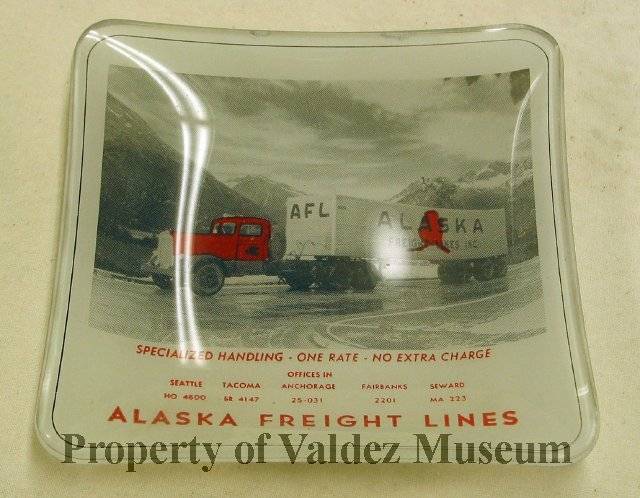
Operation Snowball is the name given to a partnership formed in 1949 between Alfred Ghezzi, owner of Alaska Freight Lines and the Alaska Road Commission. Their goal was to tackle the huge snowfalls on Thompson Pass and keep road access to Valdez available throughout the winter. It’s a fascinating story presented by Museum Curator Andrew Goldstein. Just click here to watch.
LIVE From the Archive-That’s Entertainment!

On this week’s show Museum Curator Andrew Goldstein ponders over the fact that sometimes historical institutions and other museums get criticism when they try to entertain their audiences. He says, “The feeling in some circles is that education and entertainment are exclusive; that if you are enjoying yourself you probably aren’t learning, but in fact I think the exact opposite is true. After all, if you’re not engaged in the subject you’re a lot less likely to care about it, and as a result you won’t be getting much out of your experience.” In this video he shares the challenges of creating exhibits that are both educational and entertaining, often by getting the visitor involved. Learn more by clicking here.
“What is it Wednesday?”
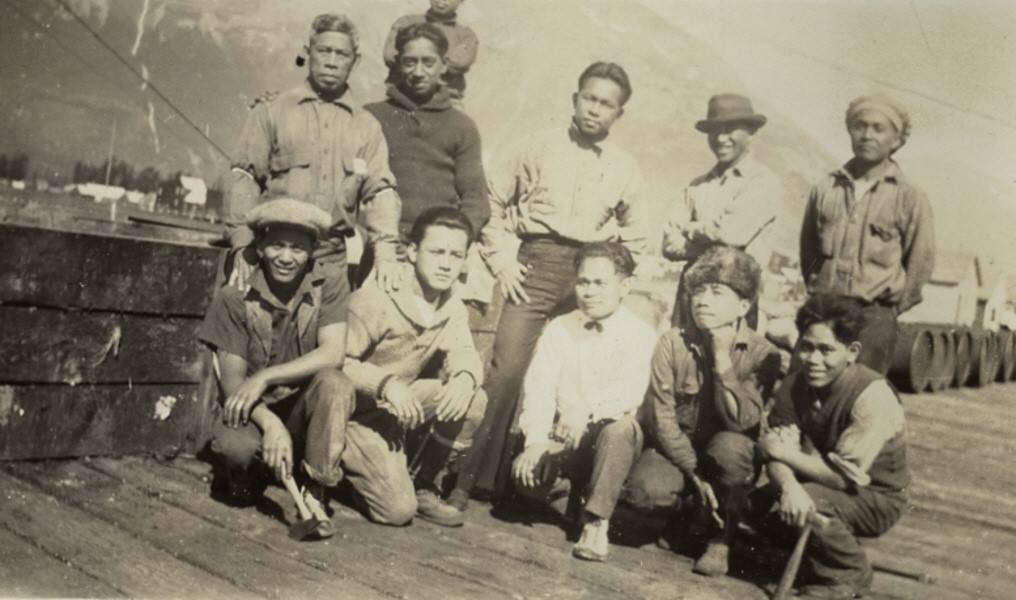
Why are there so many Filipinos in Alaska and why do we hear so little about them? That’s the question Museum Curator posed to his Facebook audience before sharing the story of Alaskeros, a nickname for the Filipinos who flooded into Alaska every summer to work at the fish canneries, in particular from during the very active 1920’s – 1930’s. And he follows their history in Alaska over the decades that follows. Click here to learn more.
LIVE From the Archive-Maritime History Resources

Do you you want to know more about the story behind this vessel? Well Museum Curator Andrew Goldstein offers up a variety of volumes that can help you do that. Or, as he says, “When ships go down, we can still look ’em up.” He shares resources like the five volume set titled Merchant Vessels of the United States with a total of 7,000 pages worth of information on ships of all kinds. He even cites a good resource to find mariners who didn’t have very good luck at sea: Shipwrecks of the Alaskan Shelf and Shore. To check out these and more just click here.
“What is it Wednesday?”
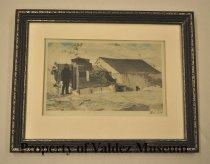
The above photo was taken by Merl LaVoy, who, in the words of Museum Curator Andrew Goldstein, was “possibly the most interesting guy you’ve never heard of.” An adventurer photographer, explorer and filmmaker, LaVoy traveled the world, rubbed elbows with the celebrities of his day, and went to places few other people would dare to go. Quite a guy! Click here to get more of his story.
LIVE From the Archive-Researching the Old Town Model
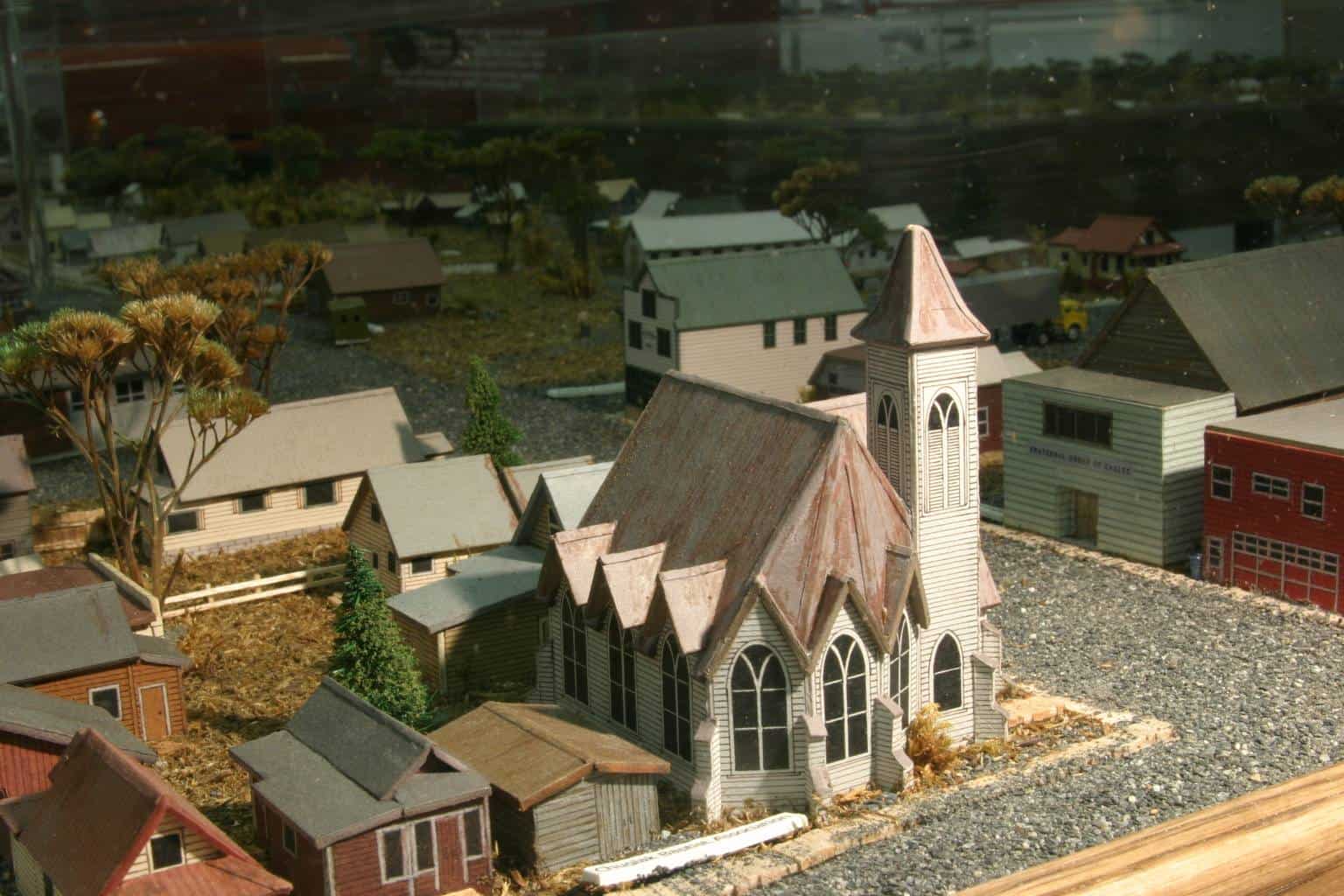
The Museum’s Historic Old Town Valdez model is a 1:20 scale replica of Old Town Valdez as it appeared just prior to the 1964 Earthquake. Miniature structures, such as the church pictured above, are detailed representations of buildings that once stood in Old Town. This week Museum Curator Andrew Goldstein talks about what sort of research went into making the Old Town scale model, taking a look at one of the Museum’s most underrated historical resources! Click here to learn more.
“What is it Wednesday?”

Maps are a favorite topic of Museum Curator Andrew Goldstein, which is likely why this week’s video address the question–What is the oldest map in the VMHA Collection? He first goes way back to the 1700’s and moves forward from there. In the process he shares a large variety of maps, including the one above published in1910. Andrew says it is probably the earliest “official” map that you’re likely to find of the Valdez townsite. Click here to see more MAPS!.
LIVE From the Archive-How Much Information is Too Much?

This is a stack of financial statements for the operation of the Steamship Elsie in 1908. But as Museum Curator Andrew Goldstein explains — it can be overkill to record every single document or scrap of paper in the Museum’s vast Collection. Click here to learn more.
“What is it Wednesday?”
BUNNIES, BUNNIES, BUNNIES everywhere in Valdez!!
It’s just a little early for Easter, but in this edition of What is it Wednesday? Museum Curator Andrew Goldstein takes a look at some of the tall tales and misinformation that have been going around about these adorable little invaders. Unravel the myths by clicking here.
LIVE From the Archive-Opening the Newspaper Vault!

In this episode Museum Curator Andrew Goldstein broadcasts from what he calls “the heart of our operation”, within the archive itself. Andrew informs about using newspapers as historical research sources and shares the history of publications in Valdez under several names that include: Valdez News, Valdez News Miner, Valdez Star and Valdez Prospector. He even opens up the “secret vault” where the VMHA Newspaper Collection is stored. On his tour through the Archive Andrew also touches on two other ways to preserve newspapers — microfilm and digital format. Click here to learn more.
“What is it Wednesday?”

The issue of TIME can be a touchy subject, especially when Daylight Savings Time rolls around to muddle everyone’s brain. But think about how confusing it was when, as illustrated by this page from a 1980 Valdez area phonebook, there were 4 different time zones within the state of Alaska! This week Museum Curator Andrew Goldstein goes back in time to the 1800’s and gives you a perspective on how the present day time keeping in the state of Alaska was developed. Click here to learn more.
LIVE From the Archive-Tour of Alaska’s Suffrage Star exhibit


Viewers are treated to a 20-minute Facebook live tour of the travelling exhibit, Alaska’s Suffrage Star now on display at the Valdez Museum on Egan Drive. It commemorates the 100th anniversary of women’s efforts to gain the right to vote. Museum Curator Andrew Goldstein is your guide through for this trip through history, chocked full of information about the women’s suffrage movement both in Alaska and around the country. Click here to take the tour.
“What is it Wednesday?” – THE BIG GUN

Yes, this object is a fixture at the Remembering Old Valdez Exhibit, standing up against the wall, ready to greet visitors. On this week’s video you can get a look at Museum Curator Andrew Goldstein posing, with the 7 foot 2 inch gun at the ready and see a photo of him wielding the gun, dressed up as “Prospector Pete” for the Valdez’s annual Gold Rush Day parade. Then he shares a tale about how this unique artifact was made in the 1950’s by a colorful character living in Ketchikan, AK. Plus he answers the burning question, “So, what’s the Museum doing with a giant wooden rifle?” Click here to watch.
LIVE From the Archive-Conservation, Restoration & Preservation
This week’s show examines the differences between these three actions.
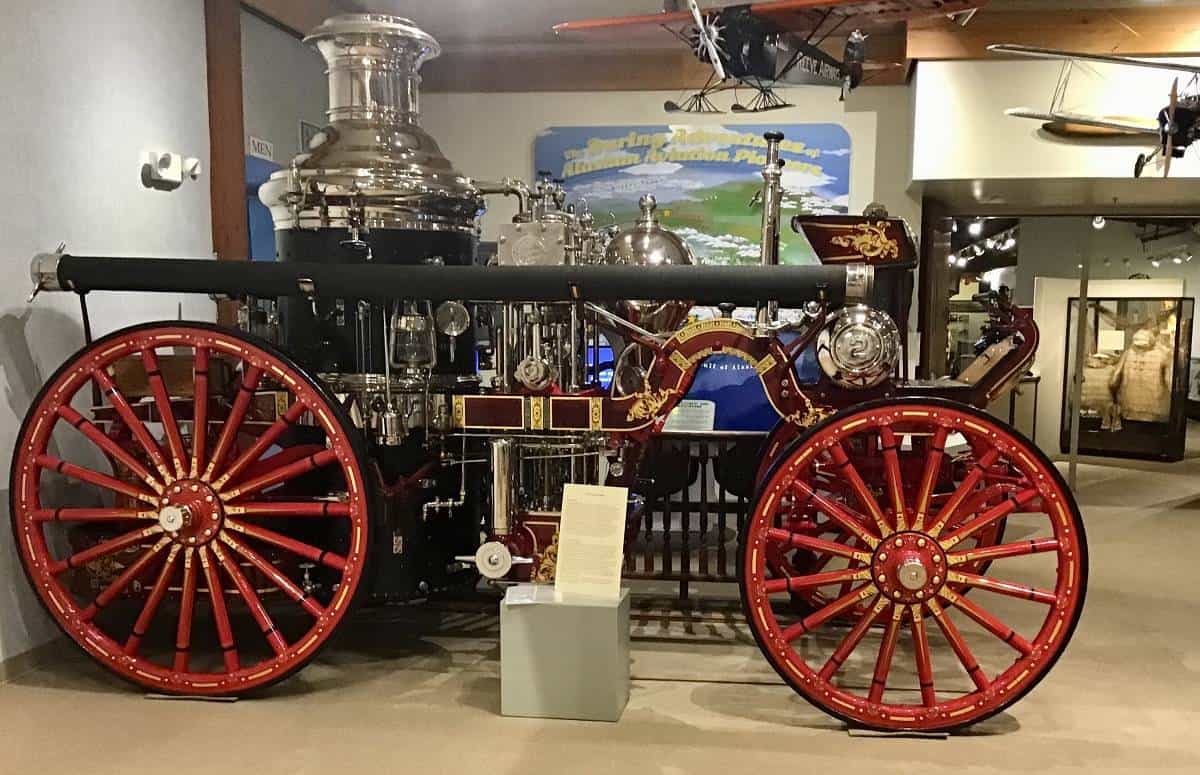

But, how many changes can you make to an object or artifact before its integrity is lost and it morphs into something else? Well that’s just what Museum Curator Andrew Goldstein looks at in this video. Check it out by clicking here.
“What is it Wednesday?”

Valdez as a filming location? Museum Curator Andrew Goldstein says that in 1993, Valdez was swarmed by Warner Brothers film crews, set designers, actors, et cetera, for location shooting here in Valdez and the surrounding area. The most well-known of movies filmed in Valdez is Steven Seagal’s 1994 action thriller On Deadly Ground. It was panned by the critics, and Andrew calls it “a great big slice of moldy cheese.” But some props used in the movie have made it into the VMHA Collection, plus a lot of paper documents such as a memo about sled dog precautions during shooting, and a hand-drawn map of local shooting locations. Learn more about the Valdez/Hollywood connection by clicking here.
LIVE From the Archive-Mining Records
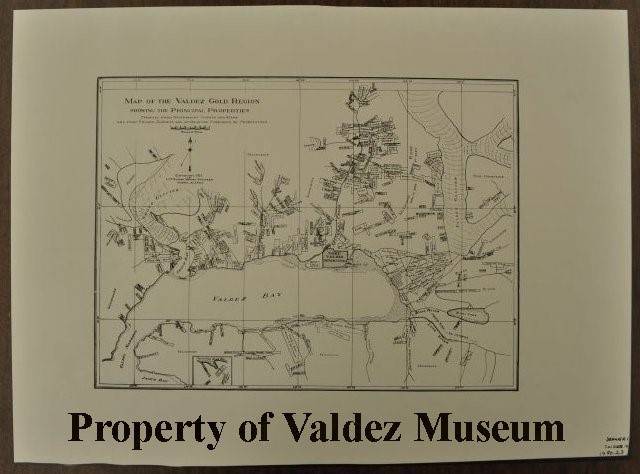
The Alaskan Gold Rush was born in the summer of 1897 says Museum Curator Andrew Goldstein, and that’s when miners started flooding into the Valdez area, citing a map in the Museum’s collection showing all the Valdez area mining claims. But accessing historical records of who belonged to these claims can be a bit tricky these days. Learn more by clicking here.
“What is it Wednesday?”

This 67-foot tall Art Deco concrete structure built in 1934 replaced the original Cape Hinchinbrook Lighthouse located on Hinchinbrook Island at the eastern side of the entrance to Prince William Sound. It housed one of our most coveted artifacts–the 8 foot tall, 1600-pound Fresnel lens that greets visitors entering the main Museum. And the collection contains a photocopy of one of the lighthouse station log books. Museum Curator Andrew Goldstein shares stories from some of the men stationed there, living in isolation for months at a time. They express a range of emotions– from enjoyment to anger to desperation, such as this log entry: “Help! I am being held captive in a lighthouse!” One cartoon doodle depicts a guy tearing his hair out, and Andrew says he’s struck by the honesty and outpouring of emotion contained in the logbook entries. “Some are funny, others are despondent, but having lived through quarantines and lockdowns this past year, I think these missives resonate now more than ever.” To watch this week’s video just click here.
“What is it Wednesday?”
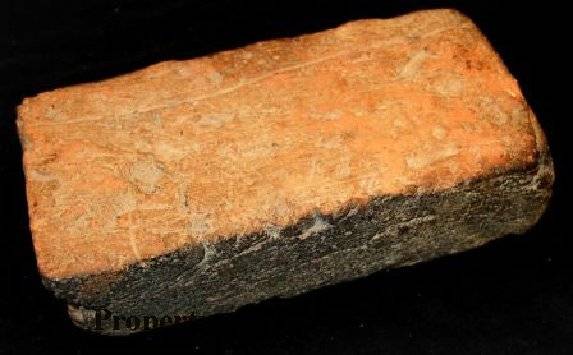
This week’s artifact is—a clay brick. But there is more to the story as Museum Curator Andrew Goldstein weaves a tale around the history of brick making in Alaska by German and Russian settlers, and specifically, “was there a brick works at Klutina Lake?” (where this brick was discovered). The clay found around the mud pot volcanoes of the Wrangell St. Elias range is used by artisans from the area Andrew says, “Not only for pottery, but also in those glacial silt mud facial masks that my wife and her friends love so much.” Click here to learn more about resourceful Alaskans who use materials from their natural surroundings for making necessities–whether clay bricks or mud masks!
“What is it Wednesday?”

Prince William Sound College is a cornerstone of educational programming for the community of Valdez, but what most people don’t realize is that Valdez had collegial aspirations going back much further than that. In 10916, as you see from the above document, there was a bona-fide University of Valdez on par with most of the other colleges in the Territory. Unfortunately, it’s doors were only open for one semester. Museum Curator Andrew Goldstein gives an in depth history of its fleeting rise and fall. Click here to learn more.
LIVE From the Archive-Tips for preserving your precious documents
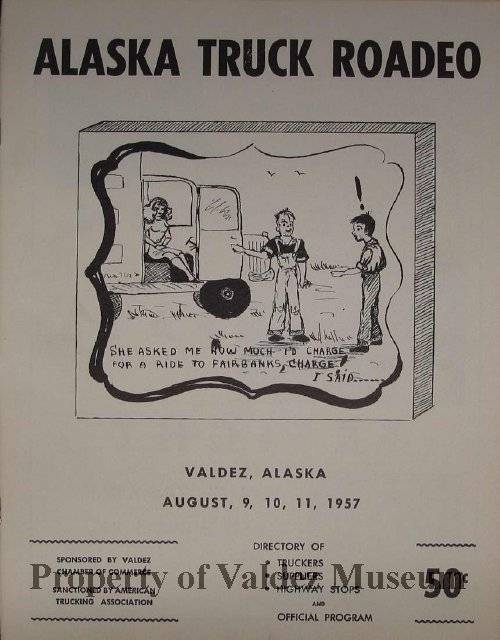
If this “Truck Roadeo” program from 1957 was one of your prized possessions you’d want to keep it in great shape, right? Well Museum Curator Andrew Goldstein shows you how, starting with what NOT to use– staples, paper clips, and – worst of all – tape!! He shows how to use a microspatula to remove staples, and how to keep pages together by putting them in protective polypropylene sleeves. Here’s the clincher–he even shows you how to stich pages together with a needle and thread! Just click here to see it all.
“What is it Wednesday?”
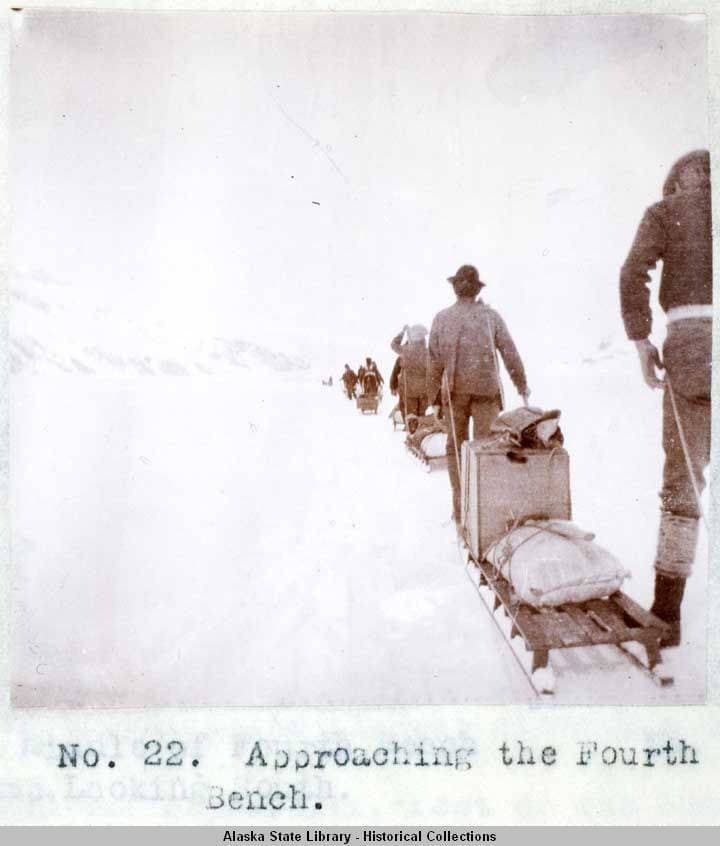
Museum Curator Andrew Goldstein takes you on a quest to find the oldest photograph in the museum collection. It’s a journey in which he shares a number of photo from the late 1800’s, such as the one above, part of a series taken by Neal D. Benedict showing prospectors hauling supplies up the Valdez Glacier; and the basis for the Valdez Museum logo:

In the course of his quest Andrew delves into the difficulty of dating older images along with their historical significance. Click here to follow his quest.
LIVE From the Archive-Are Museums Still Relevant?

That’s the question Museum Curator Andrew Goldstein explores in this week’s show. Now that so many exhibits, programs and gatherings are available in the “virtual” realm–online, is a physical space even necessary? He says YES, “What museums, and collections in particular, have to offer is the power of the authentic.” Andrew uses the above object to prove his point, “Here’s a rock. It’s just an ordinary rock, albeit a little dirty. Who cares, why would anyone want this, right?“ Turns out it’s not just any rock, but one that has a great deal of historical significance! Click here to find out more about this particular artifact, as well as many other reasons why museums play an important role in our lives.
“What is it Wednesday?”

This week’s object from the Collections really had Museum Curator Andrew Goldstein guessing–it looks like some kind of weird hammer, made of copper, but what was it used for? Andrew says his best guesses were a specialized tool used in railroad building or metalsmithing, but, in his words, “Boy was I wrong!” At that point he turned to an expert in Haines, AK, Dave Pahl, who created and runs Alaska’s own Hammer Museum with about 1,400 hammers on display. Dave confirmed it was definitely NOT a hammer, but another kind of tool that was likely used in the early days of Valdez’s fish canning industry. You’ll learn the object’s real name, plus a little history on food canning by clicking here.
LIVE From the Archive-Historiology Part 2-Development of the Valdez Museum post 1964 Good Friday Earthquake
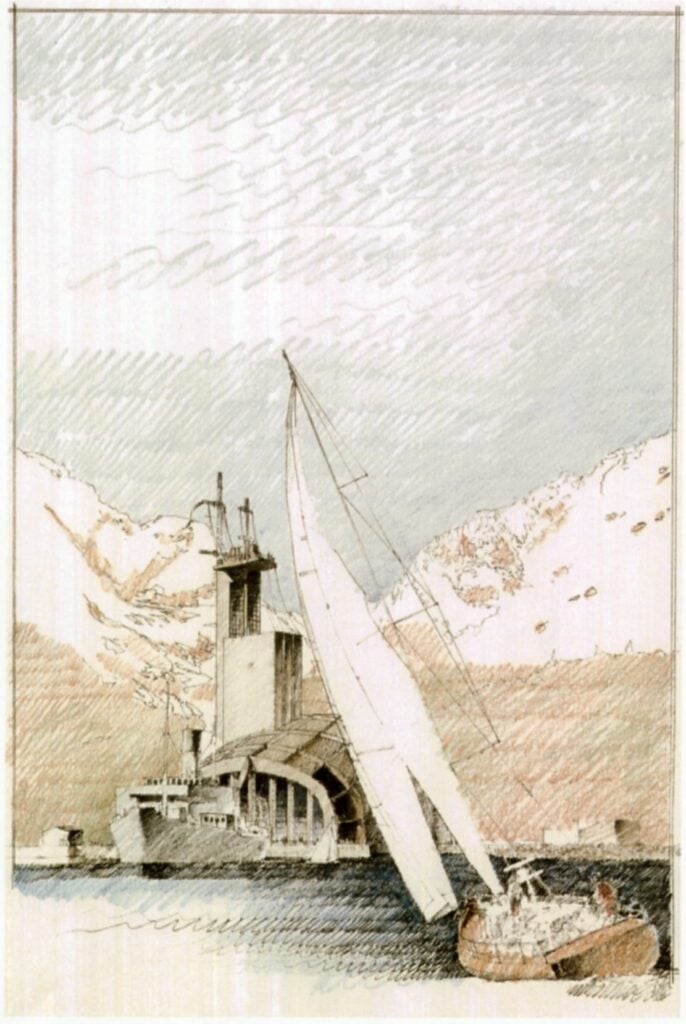

The second part of this series looks back at the history of the Valdez Museum, including the above design drawings of years past, representing a “pie in the sky” vision for a Valdez waterfront museum. This week’s video covers milestones such as establishing the Centennial Building in downtown Valdez as a permanent location for the Museum, plus developing new exhibits and better methods of collections tracking and preservation. In addition, Museum Curator Andrew Goldstein offers a peak of what’s in store for the future and our New Museum Project. Click here to learn more.
“What is it Wednesday?”
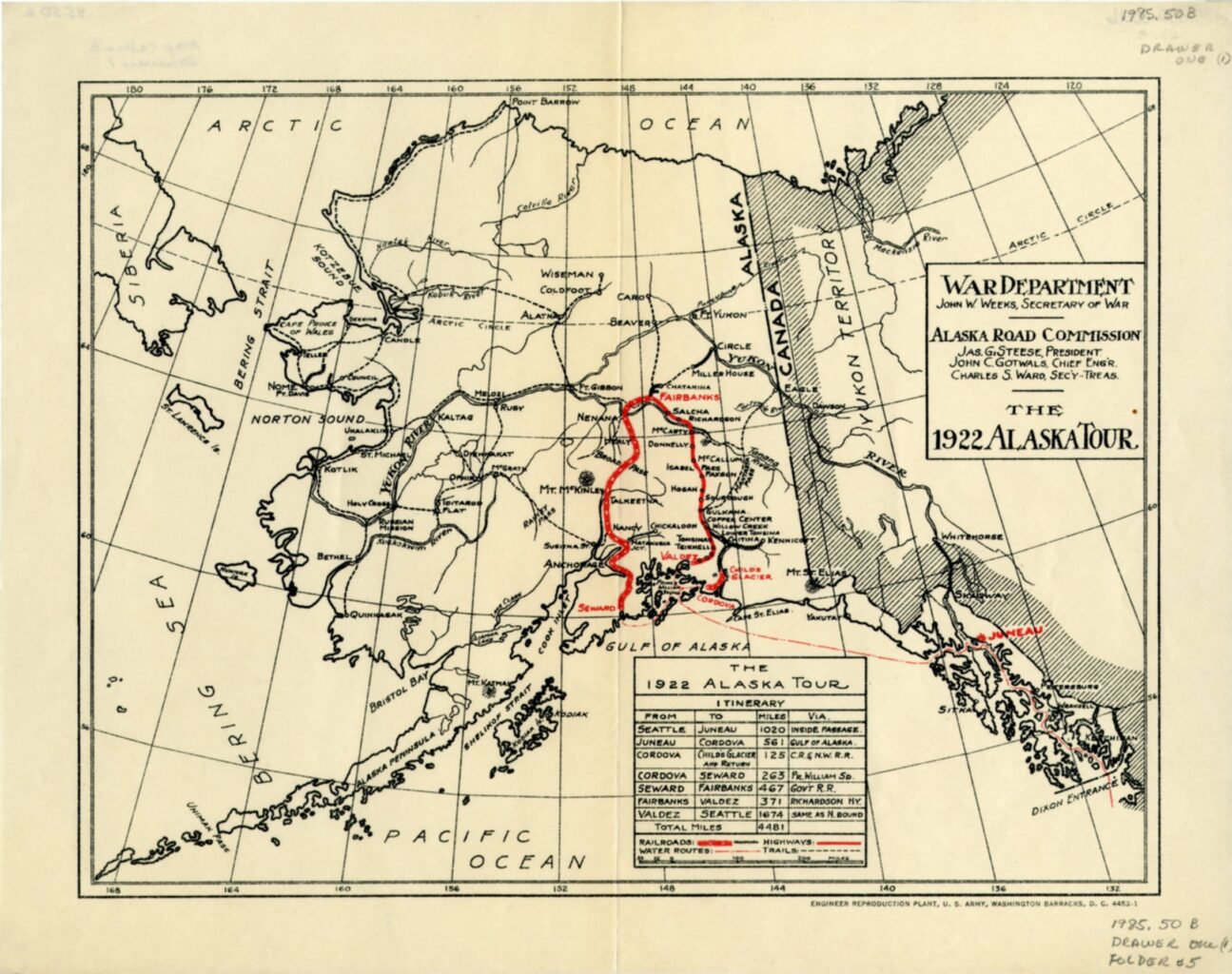
In honor of Inauguration Day 2021 Museum Curator Andrew Goldstein chose an appropriate topic from the annals of presidential history. It concerns President Warren G. Harding’s visit to Alaska in 1923. The above map marks the demanding route of his trip through the state on the Alaska Railroad. But here’s the burning question–he died about a month after returning to Seattle–so, was this trip to Alaska the cause of Harding’s death??? Andrew weaves through the many speculations in another entertaining broadcast you can view by clicking here.
LIVE From the Archive-Historiology Part 1-Early history of the Valdez Museum

Pioneer Joe Bourke essentially founded the Valdez Museum when he put a haphazard collection of curiosities on display in various buildings around Old Town Valdez in 1901. Some of those original objects are still part of the Museum’s current day collection that numbers roughly 75,000 objects and artifacts. Museum Curator Andrew Goldstein explores the early years of the Valdez Museum and its aim of interpreting history, “The way we view historical events, the stories we tell, the research that we do, the themes that we choose to explore, all of these are ever changing.” In Part 1 of this two-part series Andrew covers up to the life-changing events and repercussions of the 1964 Good Friday Earthquake, as he examines the roots of our present day Valdez Museum. Click here to learn more.
“What is it Wednesday?”
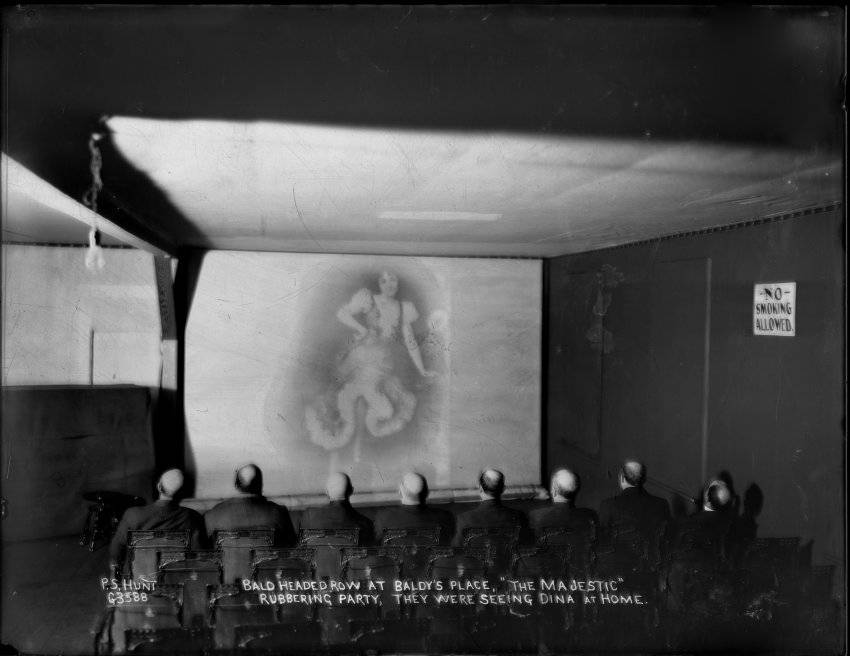
The caption under this P.S. Hunt photo from the early 1900’s reads: BALD HEADED ROW AT BALDYS PLACE, “THE MAJESTIC” RUBBERING PARTY, THEY WERE SEEING DINA AT HOME. Why did people in the Victorian era have such weird slang? Old time slang and its translation into modern times language is constantly changing, and 100 years can make a big difference says Museum Curator Andrew Goldstein who’s researched this phrase, and shares his results in this week’s video. Click here to learn more.
LIVE From the Archive-Preserving Plate Glass Negatives

The above photograph shows how a broken plate glass negative can be digitally scanned and preserved. This one comes from a collection of plate glass negatives, many by renowned photographer P.S. Hunt dating back to the early 1900’s, that were donated to the Museum. In this week’s video Museum Curator Andrew Goldstein shares his chagrin over seeing the damage to many of them from improper storage, and his invention of a better way to keep them from harm. Get the whole story by clicking here.
“What is it Wednesday?”

This week’s item is a piece of memorabilia related to WESC, which ran from 1991-2000, putting Valdez on the map as a winter destination. In the process of revealing the item, Museum Curator Andrew Goldstein provides a thorough history of this popular event that drew hundreds of hot shot extreme skiers to the area for a decade. Click here for more.
LIVE From the Archive-The Valdez/Star Trek Connection
From the Last Frontier to Space, the Final Frontier. On this segment Museum Curator Andrew Goldstein explores Valdez and the Star Trek connection. Find out more by clicking here.
“What is it Wednesday?”
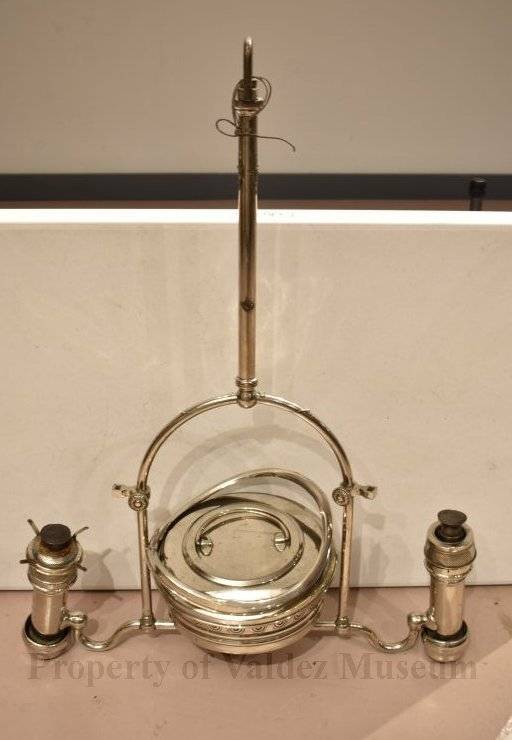
One of two kerosene lamps like this in our collection wasn’t always this shiny! All the dirt and grime on the lamp before being cleaned obscured its origins says Museum Curator Andrew Goldstein, who has now learned a lot more–such as the manufacturer: Charles Parker Lamp Company; made in 1899; has connections to Ft. Liscum, former military installation across the bay from Valdez. At the end of his broadcast Andrew says, “this illustrates how, when you’re able to clear away the dirt there’s a lot more that you’re able to discover.” Check out his video right here.
LIVE From the Archive-How Big is a Square Foot?

This is just one small section of the Museum’s Old Town Model which takes up roughly 1,000 square feet. That’s a lot says Museum Curator Andrew Goldstein! He says with roughly 75,000 objects in the collection to either display or store–the amount of square footage in our museum facility is a big deal to consider. He explains it all, and even takes you into the Archive with its climate control storage area and shows all the “cool” gimmicks it contains! Click here to learn more.
“What is it Wednesday?”
“On a cold, dark January night in 1927, Valdez is visited by a traveler from outer space. It leaves its mark, and many unanswered questions.” This week’s show by Museum Curator Andrew Goldstein tackles the local legend of Meteorite Mountain. Is that it’s real name? Click here to find out!
LIVE From the Archive-Collecting for COVID
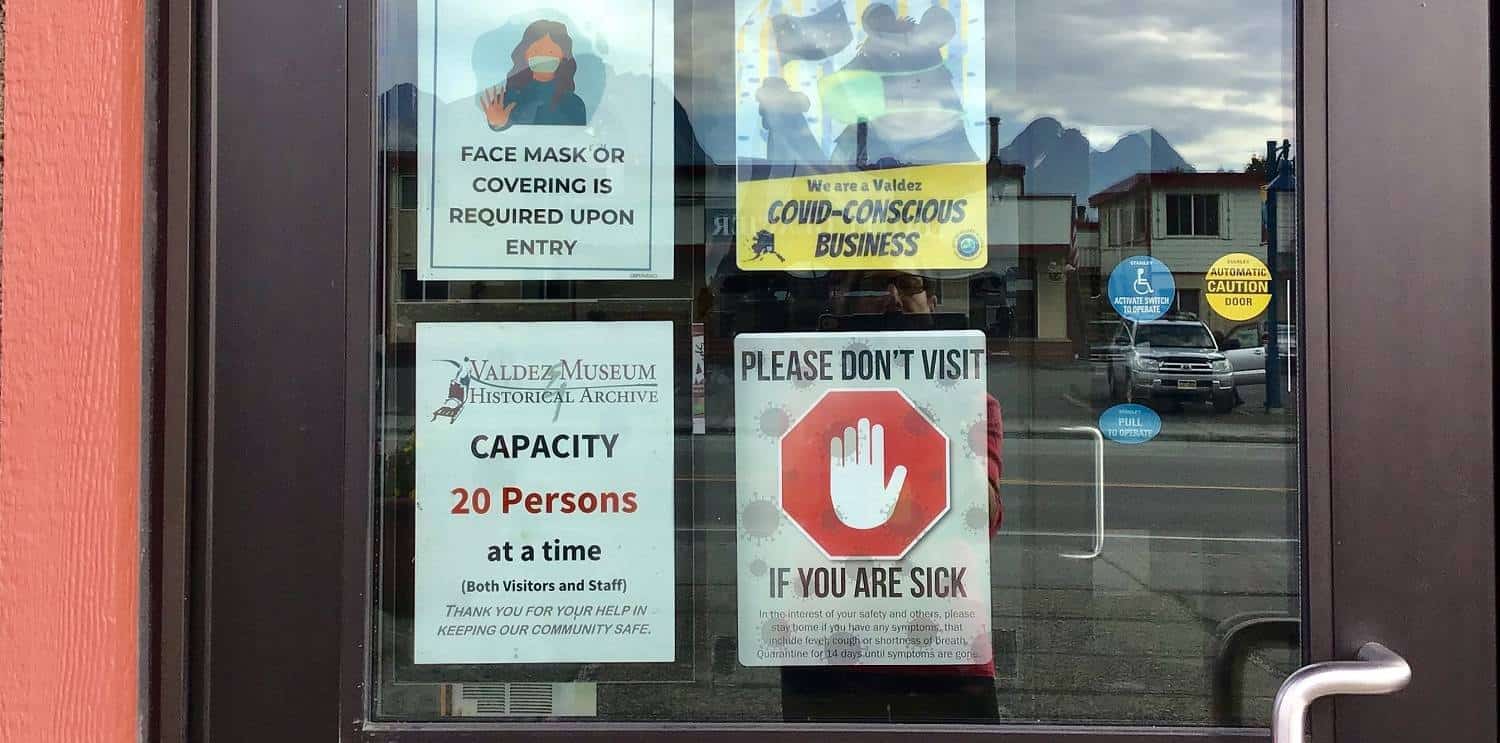
In the midst of a historical event such as the current COVID-19 pandemic what is the Museum’s role? That’s the subject Museum Curator Andrew Goldstein talks about in this show. Collecting items like face masks, hand sanitizer and sign in sheets for contact tracing–they all factor in as collectibles. And he encourages you to share your stories as well by emailing him: curator@valdezmuseum.org. View the whole video by clicking here.
“What is it Wednesday?”
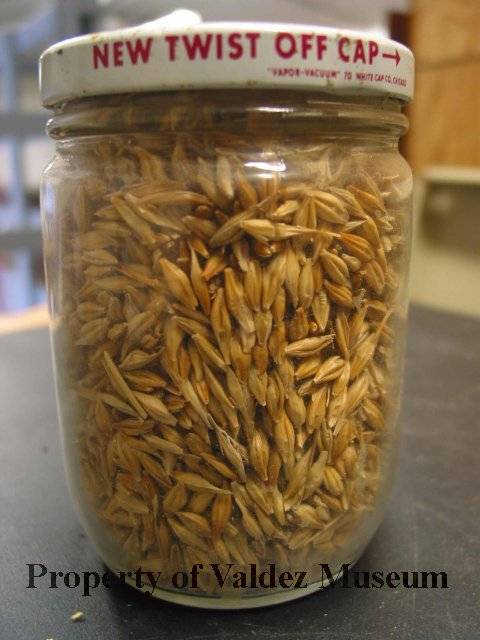
Why, you may ask, is there a jar of grain–specifically barley–in the Museum’s collection? The answer is found within this week’s broadcast by Museum Curator Andrew Goldstein as he sheds light on a subject of great curiosity to both locals and visitors alike. Hint–it has to do with those concrete towers looming in the distance on the Richardson Highway approach into Valdez. Click here for more!
LIVE From the Archive-Exhibit Planning
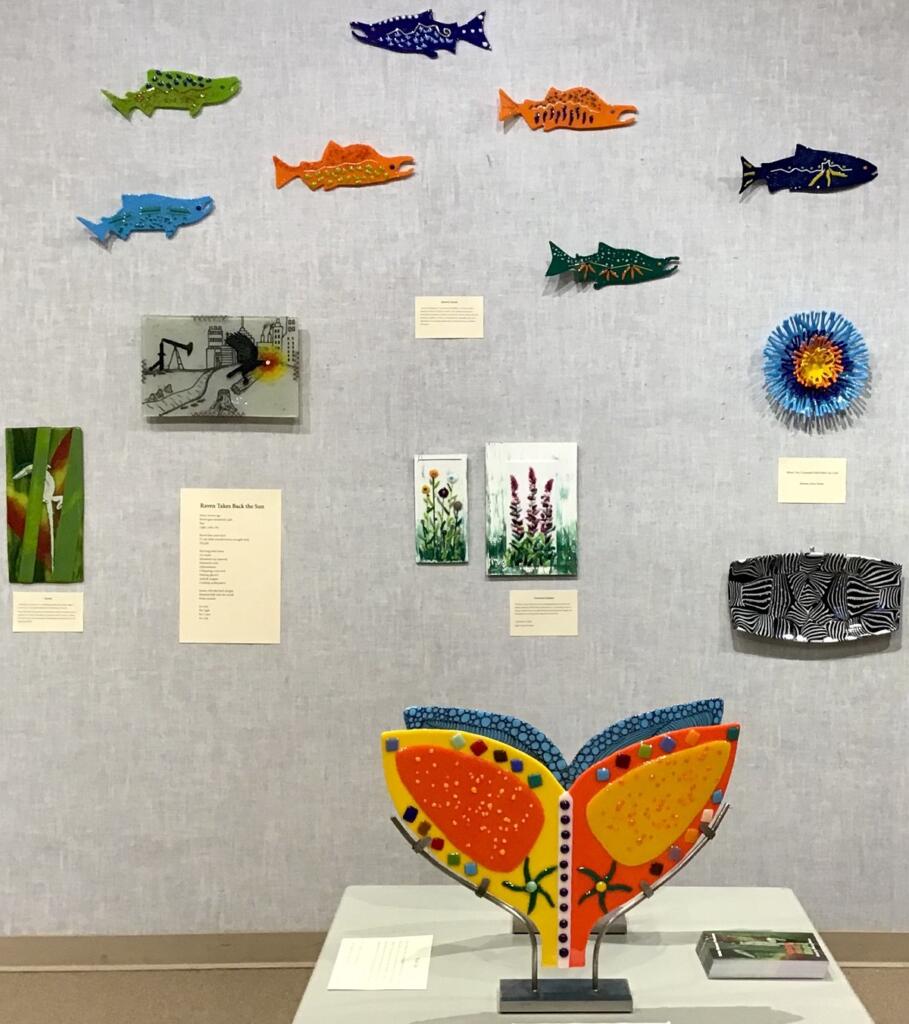
One of the most frequently asked questions that Museum Curator Andrew Goldstein gets is: “Where do you get the ideas for your exhibits?” In this episode he addresses that question, exploring the planning process for both temporary exhibits as well as permanent history and art installations. The process is extensive, and in his words, “not just hanging stuff on a wall.” Learn all about it by clicking here.
“What is it Wednesday?”
This week Museum Curator Andrew Goldstein presents the surprising history of the pointy-headed Billiken–how this fake Chinese “luck god” became a symbol of Alaska and was embraced by various peoples around the world. Click here for more.
LIVE From the Archive-Eagle Bounty Bills
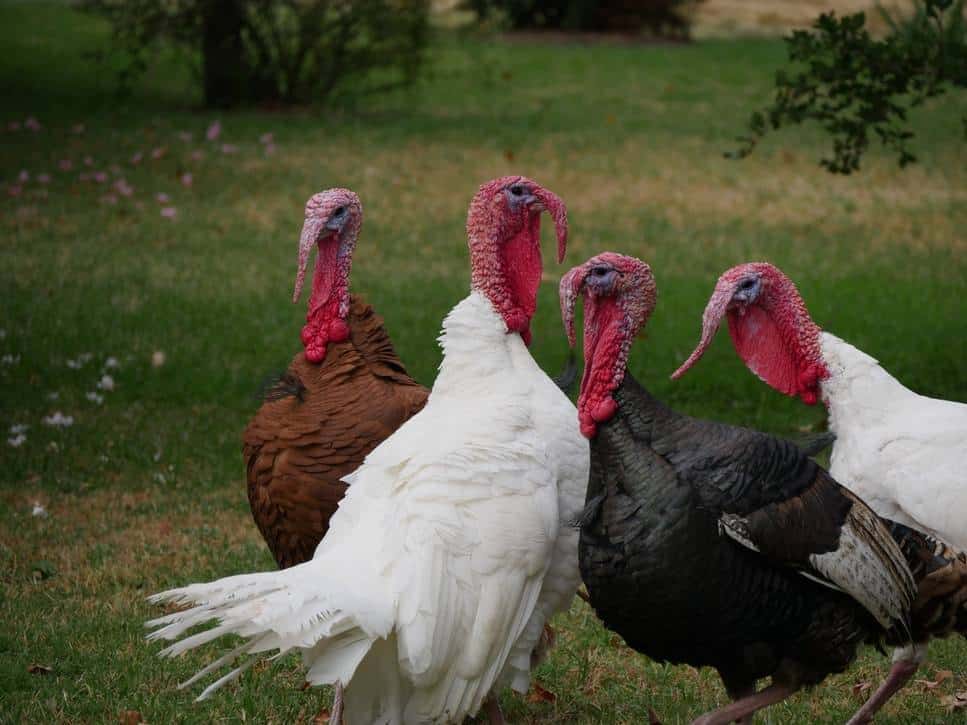
Thanksgiving is close at hand, although these turkeys aren’t too concerned, even if they weren’t named our National Bird as Benjamin Franklin wanted. That status is reserved for the Eagle. But, as Museum Curator Andrew Goldstein explains in this week’s video, there was a time when eagles were considered a big nuisance, especially by fish processing companies. So much so that lawmakers even passed an “Eagle Bounty Bill”. Click here to learn more.
“What is it Wednesday?”
Was there ever an Alaska Native village where Valdez now sits? The answer may be more complicated than you’d think. Find out more on the subject from Museum Curator Andrew Goldstein by clicking here.
LIVE From the Archive-Land Acknowledgement
No matter where you live, someone else was there first. On this week’s edition Museum Curator Andrew Goldstein talks about land acknowledgment and why it matters. Just click here to learn more.
LIVE From the Archive-Calling All Artists!
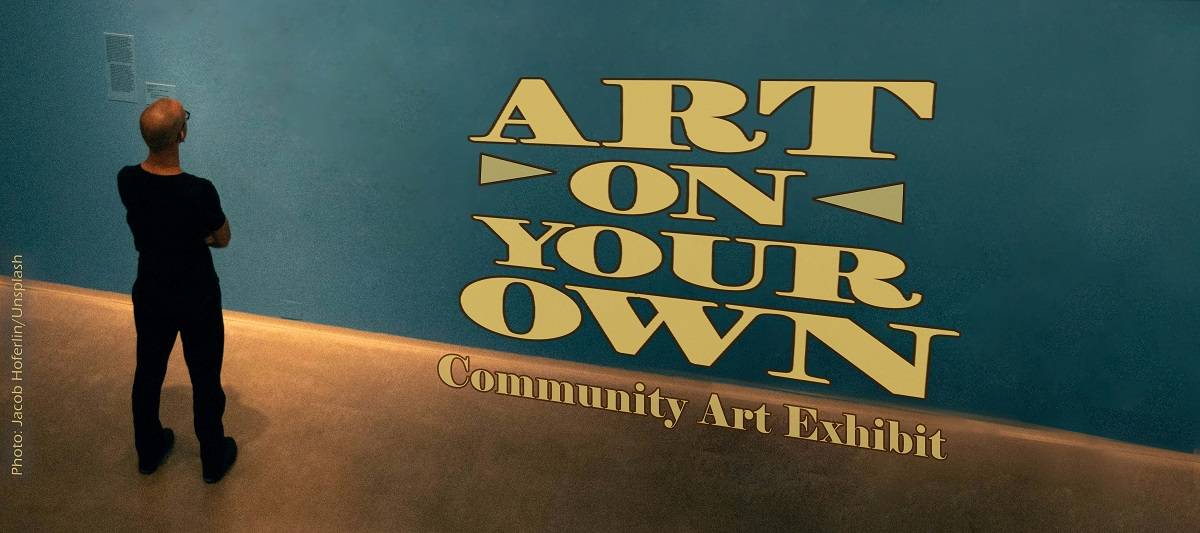
In this week’s show Museum Curator Andrew Goldstein puts out a call for artists to submit work for the Museum’s upcoming exhibit, Art On Your Own, Community Art Exhibit. It’s a chance for artists of all ages to display their creations in a formal museum setting. There are three different age categories and 54 art pieces will be chosen for exhibit. You can access the submission guidelines by downloading this form. To learn more, view Andrew’s video here.
“What is it Wednesday?”
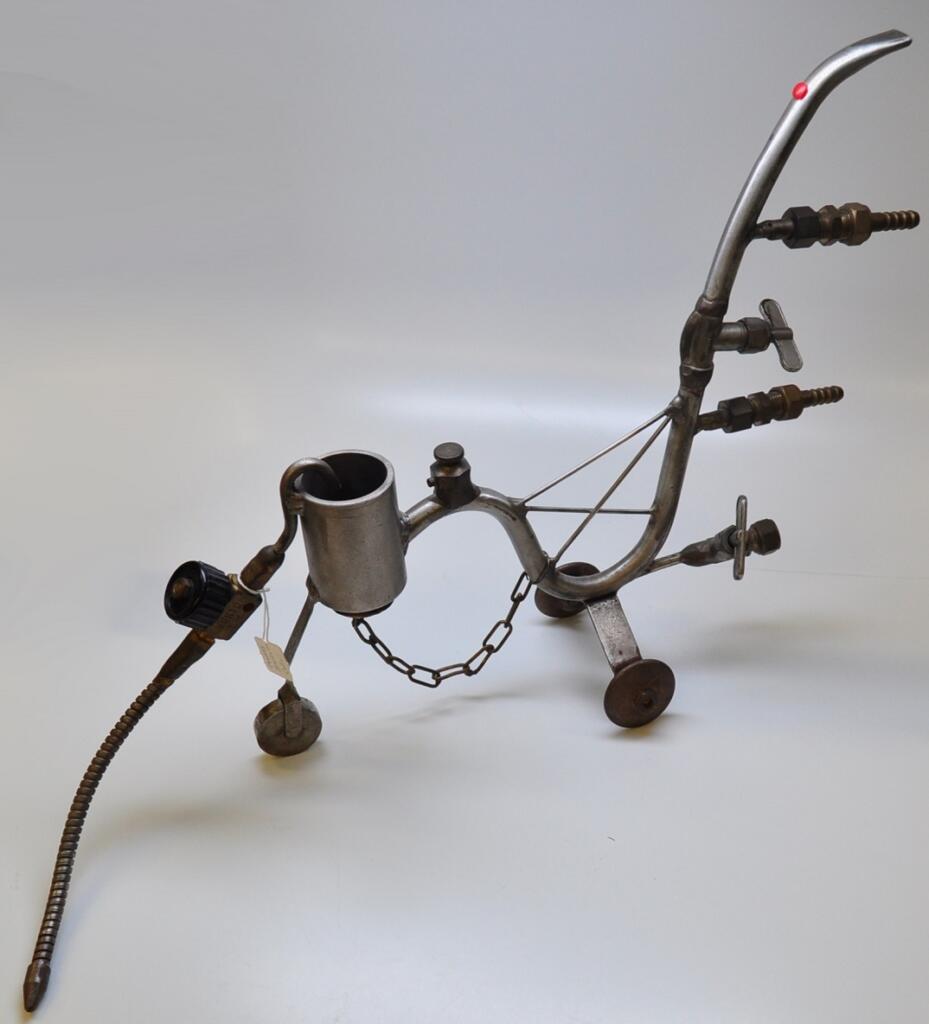
Here’s what Museum Curator Andrew Goldstein has to say about this week’s mystery item, “It’s one of my favorite objects because it’s just SO WEIRD!” He says when people were queried about its identity, top guesses were drug paraphernalia; medical equipment; or a device used in the oil industry. Well that last guess is somewhat related to the gadget, but in a very far fetched and humorous way. Hint, hint–Andrew says, “What appears to be a scientific device, is in fact, a JOKE!” Click here to find its true identity.
LIVE From the Archive-Election 2020 Edition!
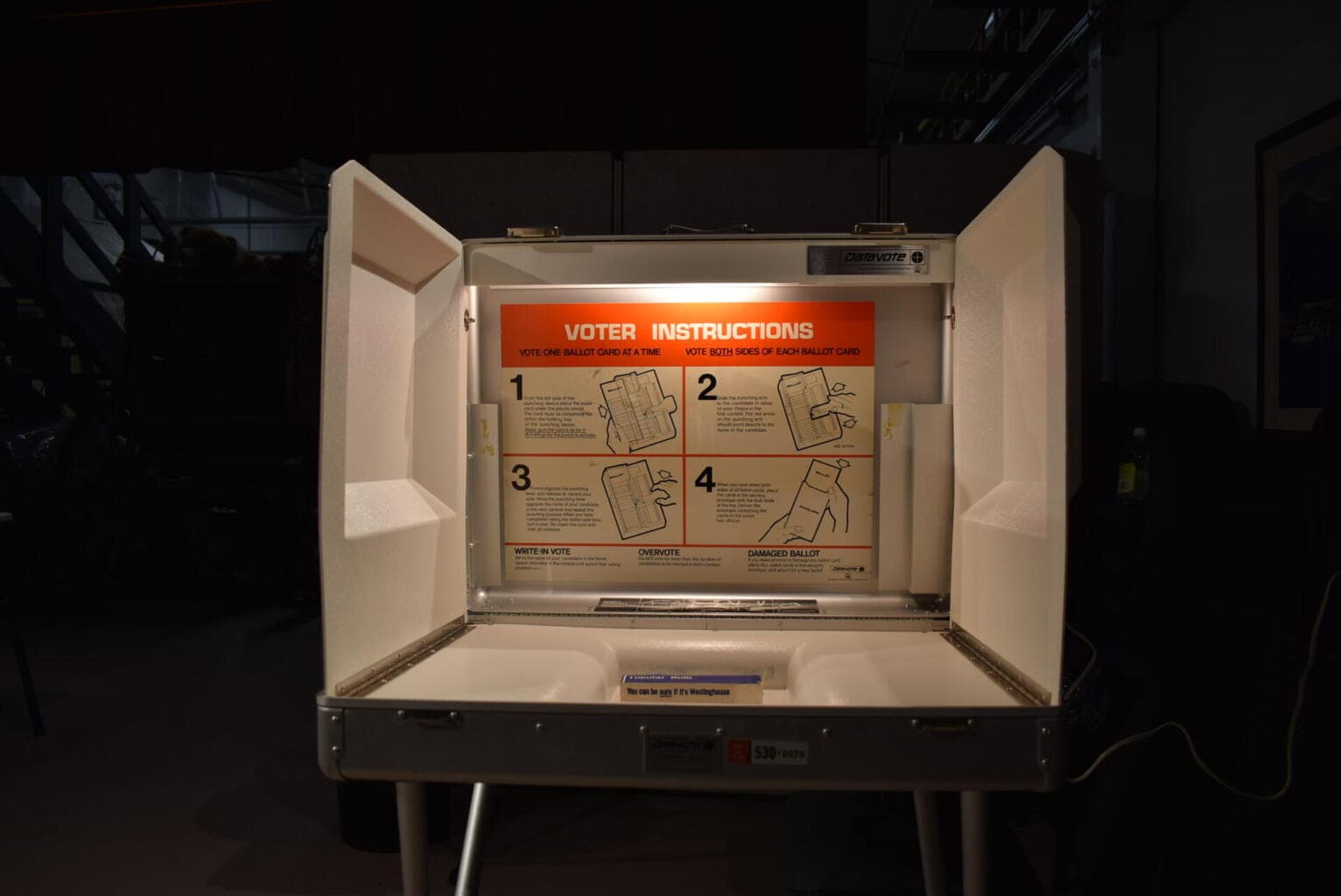
Museum Curator Andrew Goldstein takes you back to the early days of voting and up to the present. He says, “Voting has come a long way from those early secret ballot systems.” Just another way Andrew makes history come alive in this week’s special Election Edition! While encouraging viewers to get out and vote he adds, “We need to have some faith in the system.” Click here to learn more.
“What is it Wednesday?”

In another HALLOWEEN themed show Museum Curator Andrew Goldstein highlights what he says “may be the creepiest object in the Museum collection!” Pictured above is the Village Morgue Bar that stood on Alaska Ave. in Old Town Valdez, which during the early 1900’s morphed from a stamp mill to the town’s morgue, then went on to become a favored watering hole complete with its own band! The object Andrew highlights was donated by a Valdez citizen and first used to hang beef in a Chicago stockyard, then later used on human cadavers at the actual morgue in Old Valdez. Learn more about this macabre tale by clicking here.
LIVE From the Archive-Death Records
Well after all it is HALLOWEEN season! Museum Curator Andrew Goldstein was hoping to film this week’s show among the headstones at the Valdez Cemetery. But alas, a typically rainy and muddy fall day in Valdez nixed that. So instead, he brought in a dapper looking guest host, Professor Henry Jones, Sr. and his son Henry Jr. to introduce the broadcast. Follow them to a back room of the Archive and learn more about how these vital records can be useful in various ways. Just click here!
“What is it Wednesday?”


It’s HALLOWEEN season, and in this week’s video, Museum Curator Andrew Goldstein casts an eerie glow on his face as he tells a tall tale of the Gypsy woman who put a curse on Old Town Valdez. Her curse created a terrible destructive shaking of the ground causing the town to be moved. Was this the 1964 Good Friday Earthquake, who was the Gypsy woman and how was the Hazelet family tied in? Find out by clicking here.
“What is it Wednesday?”
This week’s mystery is not an object but rather a story that evolved from events during construction of the Alaska-Canadian Highway, and a soldier from the U.S. Army Corps of Engineers 97th regiment who helped build it. In this week’s video, Museum Curator Andrew Goldstein reveals the story’s various twists and turns. To learn more, just click here.
LIVE From the Archive-Pest Management

Yes, Museum Curator Andrew Goldstein and his sidekick Skippy are back to talk about how to keep the Museum Collection safe from the ravages of critters like mice, rats and other vermin. Andrew relates his struggles with voles at the Valdez Museum on Hazelet which houses the Archive, and offers tips for protecting your valuables as well. Click here to view his video.
“What is it Wednesday?”

This is the flip side of a commemorative saloon token from an early 1900’s watering hole in Valdez. Proprietors commonly gave saloon tokens as change from a purchase to lure customers back into their establishments. But this one is very special because it tells the touching story of Rowdy, the mascot dog of saloon owner William Blackwell. Let Museum Curator Andrew Goldstein fill in the details for you. Click here to see his video.
LIVE From the Archive-Sneak Preview
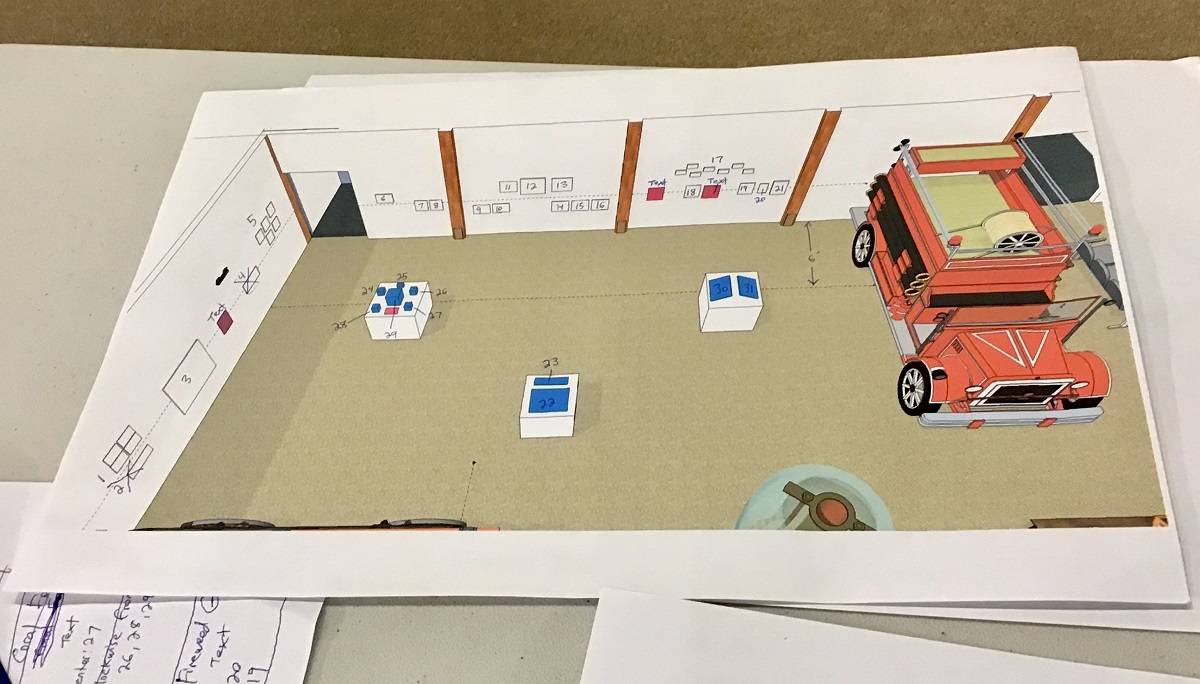

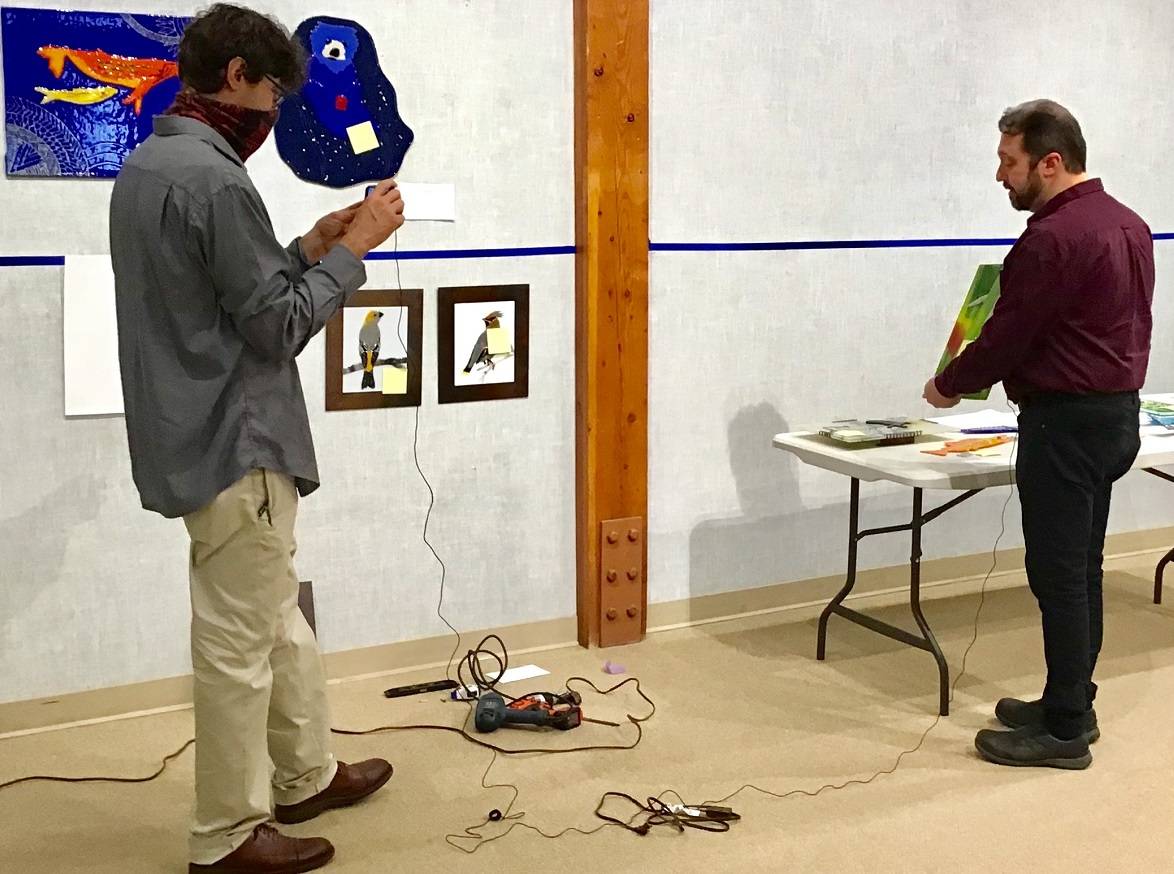
This week Museum Curator Andrew Goldstein and and trusty sidekick Kyle Klause give you a behind the scenes tour of what it takes to assemble the upcoming exhibit, Color + Heat = Magic, Glass by Sharry Miller. Click here to take the tour.
“What is it Wednesday?”

Museum Curator Andrew Goldstein calls this the “most interesting phone in the world” and here’s why: it has ivory figurines of animals attached to it in place of numbers–but why? Well that’s the mystery to be unraveled. In his sleuthing Andrew discovered it belonged to the celebrated Valdez citizen Owen Meals. He also found a recollection of long time Valdezian Gloria McCalister on how it came to be in Owen’s possession. But where’s the actual phone??? He’s appealing to anyone who know its whereabouts. Check out the video to learn more by clicking here.
LIVE From the Archive-Creating Aged Wood
The perfect way for “do it yourselfers” to achieve the look of aged wood for furniture, floors, walls and a variety of woodworking projects! Museum Curator Andrew Goldstein shows you how to do it using inexpensive household products such as steel wool, vinegar and tea–hence the term “tea staining.” To view Andrew’s video just click here.
“What is it Wednesday?”
The manufacturer of this week’s mystery object is BAUSCH & LOMB the vision specialists. Hint, Hint–it’s some sort of telescope made in 1916 and used for construction and surveying projects in the old days. Curious yet? You can get the whole story from this video by Museum Curator Andrew Goldstein who’s sporting a spiffy new lapel microphone! Click here.
“What is it Wednesday?”
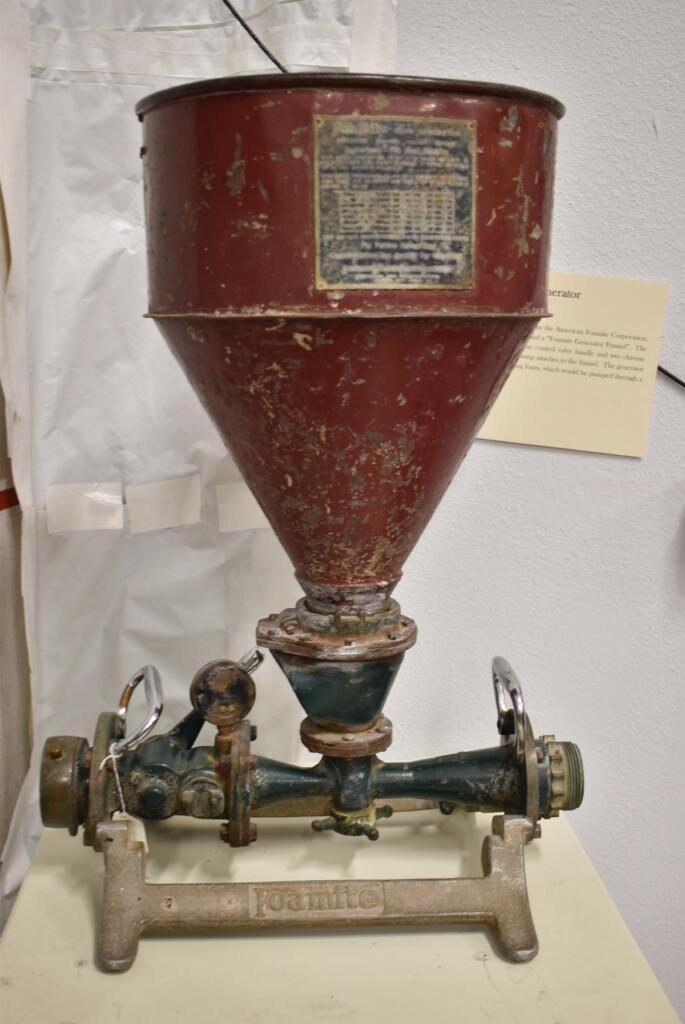
This week’s mystery item from the collection is literally “heavy metal!” Since none of the Facebook live viewers ventured to guess, Museum Curator Andrew Goldstein shared his first clue–the brand name, Fomite stamped on the base. Turns out it’s a Fomite Pumping Unit manufactured from the 1930’s to the 1950’s used to fight fires of various kinds. For the whole story click here.
LIVE From the Archive-Anonymous Donations
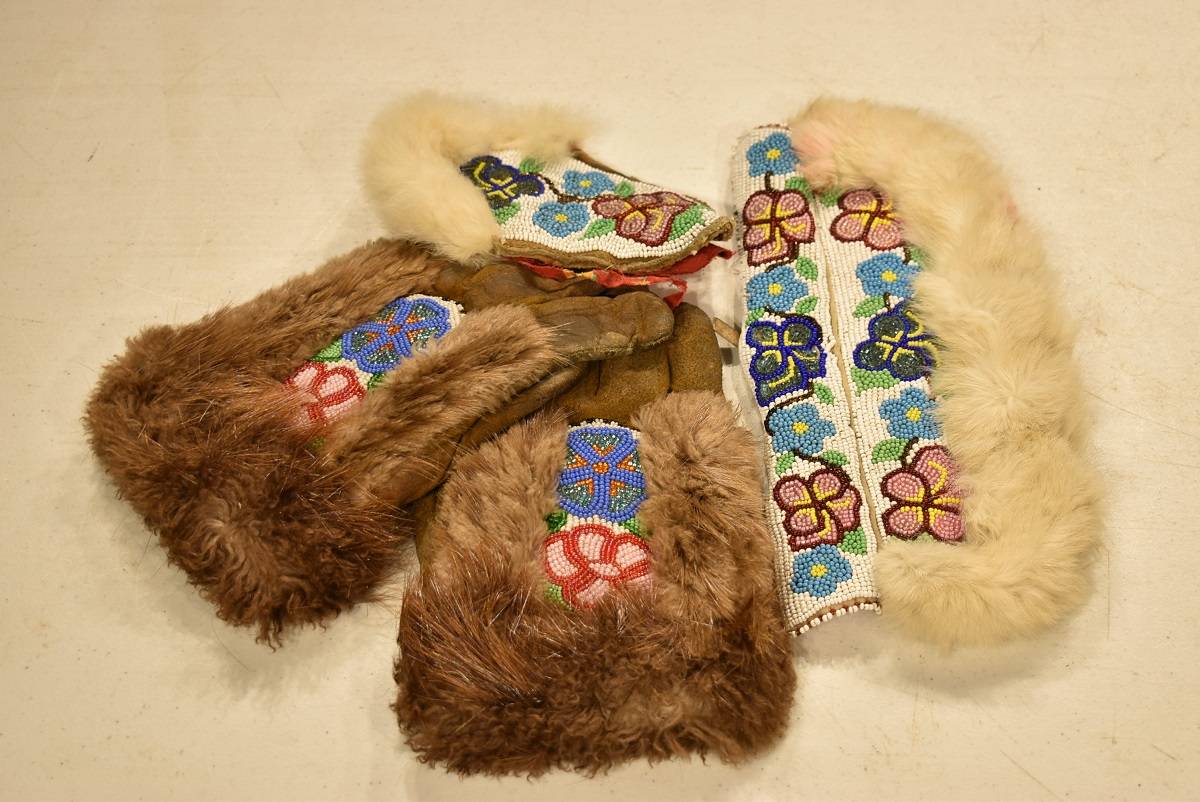
What do you do if you want to donate something to the collection? WELL YOU CAN’T! That’s the word from Museum Curator Andrew Goldstein who uses this group of beaded items to illustrate why. He says without the previous owner signing off the items can’t be added to the Museum’s collection without going through a big long legal process. And he tells you the right way to donate your items. Just click here for the whole story.
“What is it Wednesday?”

This week’s mystery object is indeed some kind of press–but, “what exactly was it used for?” That is the real question. Museum Curator Andrew Goldstein uncovered a host of answers–book binding, pressing flowers, stamping logos on fish crates and it even served as a sort of 19th Century copy machine. He ends the broadcast by saying he hopes it made a “good impression” with the Facebook viewing audience! Click here to see Andrew’s wry smile when he says that.
“What is it Wednesday?”

Yiddesh and a Railroad Spike–What do they have in common? Museum Curator Andrew Goldstein tells you the whole story. Click here.
LIVE From the Archive-Raptora Borealis Exhibit

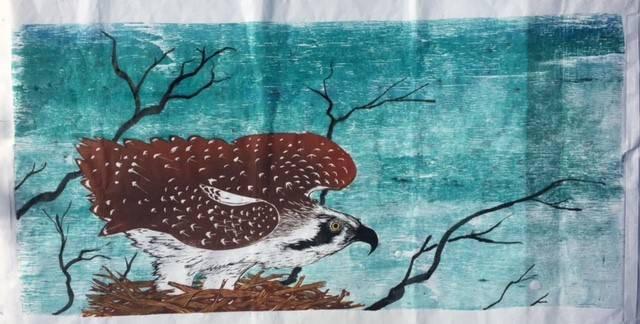

This week Museum Curator Andrew Goldstein gives a guided tour of the Museum’s newest exhibit offering: Raptora Borealis: Alaska’s Birds of Prey, Art by Kevin Crowley. It’s an online exhibit showcasing the artist’s woodcut prints of the birds of America’s northern latitudes. The exhibit explores the birds of prey of Alaska and their connections to folklore, traditions, historical and scientific lore. Click here to join Andrew’s tour. Click on the bird names above and go directly to the online exhibition.
“What is it Wednesday?”
Museum Curator Andrew Goldstein answers the burning question, “Who owned the very first VALDEZ vanity license plate when they were issued in 1969? He then goes on to show an array of Alaska plates issued over the years, giving lots of history and fun facts coveted by license plate collectors. Click here to learn more.
LIVE From the Archive-Making Storage Mounts

SKIPPY’S BACK!! This lovable pest from a past episode is back, and making droll comments to Museum Curator Andrew Goldstein who uses him to illustrate how best to preserve your fragile items. You’ll also get an up close look at an ancient mastodon tooth from the VMHA collection. Click right here to see it all!
“What is it Wednesday?”
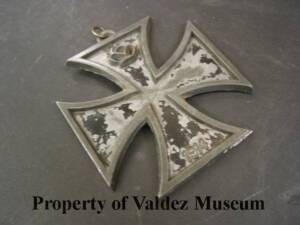


These are objects from the collection that Museum Curator Andrew Goldstein picked this week to use in a discussion of items related to symbolism and iconography; and how perceptions change over time. To learn more click here.
LIVE From the Archive-Found Objects
When strolling along a trail or historic site you see a really cool object on the ground it can be very tempting to pick it up. DON’T!! That’s the word from Museum Curator Andrew Goldstein who says the setting of a found artifact is very important, and if moved, clues to its use and history can be lost. Andrew gives several examples and more useful tips for artifact hunters in his video. Click here to watch.
“What is it Wednesday?”
This week’s guessing game centers around a tale of Hillary Clinton and rumors of her working on an Alaskan “slime line” then getting booted off. Did she or didn’t she??? And what about the rumor of her pink slip becoming part of the Museum’s Collection? Curator Andrew Goldstein used his sleuthing skills to learn the whole truth–with a little help from a Museum visitor last summer. He reveals the truth while filming on location by Kelsey Dock in Valdez where it all took place. Click here to find out.
LIVE From the Archive-Adding to the Collection

Watch Museum Curator Andrew Goldstein play with dolls and also weave a tale of this Victorian Era family as he unveils an extraordinary box of meaningful objects donated to the Museum by Janey Bennett of Bellingham, Washington. Old photos in solid brass frames, an array of antique dolls, exquisite jewelry and more–you can see them all by clicking here.
“What is it Wednesday?”

Four pieces of polished ivory strung together, an item from the Museum’s Native Alaskan collection in which the artifacts are connected to Native cultures from our region. Museum Curator Andrew Goldstein says records identify it as a Bow Tightener. Although he freely admits to not knowing exactly how it works, Andrew shares a lot of interesting history pertinent to its use. Follow along by clicking here.
LIVE From the Archive-Living History
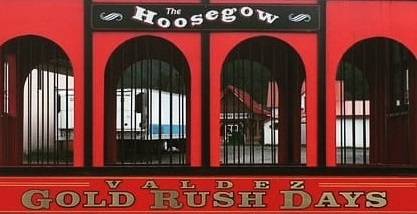
This segment was filmed when the 2020 Valdez Gold Rush Days celebration would have taken place, but was cancelled due to COVID-19. Nonetheless, Museum Curator Andrew Goldstein appears on camera all spiffed up in Gold Rush period dress, complete with striped vest and bowler hat to talk about the subject of “Living History.” This is when an interpreter weaves historical tools, activities and dress into an interactive presentation to give observers and participants a sense of stepping back in time. Learn more about this popular practice museums have been using for over a century by clicking here.
“What is it Wednesday?”
Museum Curator Andrew Goldstein says the original records ID this week’s mystery object as possibly being an auto wheel rim. Well it is indeed a car part, but using his sleuthing skills he learned that it was part of an engine to a Ford Model T from the Owen Meals Ford Dealership in Old Town Valdez. Andrew then leads you down the path of Owen Meals and his many entrepreneurial endeavors as well as his role in the relocation of Old Valdez to its new town site. Follow along by clicking here.

LIVE From the Archive-Transportation History: AVIATION
Aviation is the third video in Museum Curator Andrew Goldstein’s 3-part Valdez transportation series. He calls Bush Piloting an “iconic aspect of Alaskan life” as well an important way to get around this vast state with its many remote road less areas, not to mention challenging and unpredictable weather. And that is exactly why Bush Pilot Harold Gillam stands out. He was known for his prowess in flying under the most extreme weather conditions that included blinding blizzards, gloomy darkness and freezing ice storms! He earned the reputation of a seasoned pilot with the “eyes of a cat.” Andrew has stories to share with you, just by clicking here.
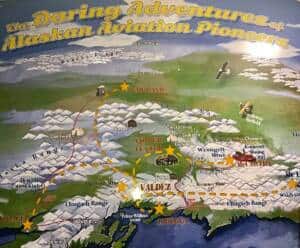
“What is it Wednesday?”
Museum Curator Andrew Goldstein’s promo for this week advises, “Don’t get bent out of shape trying to guess.” Indeed the mystery object is made out of solid brass and has suffered some serious damage. It was manufactured between the mid to late 1800’s and related to the All America Route “scam” that is part of how Valdez was founded. What is it? Click here to find out!
LIVE From the Archive-Transportation History: TRAINS

In part 2 of this 3-part series Museum Curator Andrew Goldstein gives the history of “train fever” that hit Valdez in the early 1900’s when it was announced that a railroad might be coming to the town. Thoughts were that it would make Valdez the metropolis of Alaska. Goldstein says; “Indeed had Valdez gotten its railway, Valdez very well could have been the financial and cultural capital of the state instead of Anchorage.” But the railroad was never built in Valdez and there’s quite a story behind why not. Click here to learn more.
“What is it Wednesday?”

Is that a bear pulling the sled??? Museum Curator Andrew Goldstein posed the question to his viewers after sharing this photo, circa 1905, from the Museum’s collection. Using digital filters to examine the photo he concluded it likely was a black bear tethered to the sled. But the real mystery object Andrew displays in the following video is a strange looking collar/harness discovered in the archive years after the photo above was found. Take a look and make your guess! Just click here.
LIVE From the Archive-Valdez Transportation History–AUTOMOBILES

In the first of a 3-part video series called “Trains, Planes and Automobiles, Museum Curator Andrew Goldstein focuses on various historical aspects of the transportation industry in Valdez. He points out the fact that Valdez is the northernmost year-round ice free port in the United States, and how that literally, “put Valdez on the map.” He starts this 3-part series with a story about automobiles that is near and dear to him. It’s set in 1907 and centers around an international automobile race. Learn more, click here.
“What is it Wednesday?”
This week Museum Curator Andrew Goldstein initiates a discussion about a an age old topic very relevant for the present time. It centers around an old photo from the Museum’s collection. The photo shows a carriage from a parade float carrying a white man wearing blackface makeup, top hat and cape, depicting a character that might be featured in old time minstrel shows popular during the mid-to late 19th century. Goldstein covers the history of these types of shows, and display numerous other images which he calls “shameful, embarrassing and shocking.” Follow the discussion by clicking here.
LIVE From the Archive-Artifact Appraisals
Museum Curator Andrew Goldstein starts this broadcast by showing a lovely 1920’s dried floral arrangement from the Museum’s collection. That leads into a discussion on how to assess the value of this pressed flower arrangement as well as the value of other objects and artifacts. It takes someone who is a Certified Appraiser–a title among Andrew’s many talents that he does not have. But he’ll tell you how to go about finding one! Learn more by clicking here.
“What is it Wednesday?”
This week’s object of discovery resembles a large wooden caveman’s club, but it was really used in the early 1900’s for playing a sport that later became known as the “national pastime.” What is it? Click here to find out!
LIVE From the Archive-Main Museum Tour
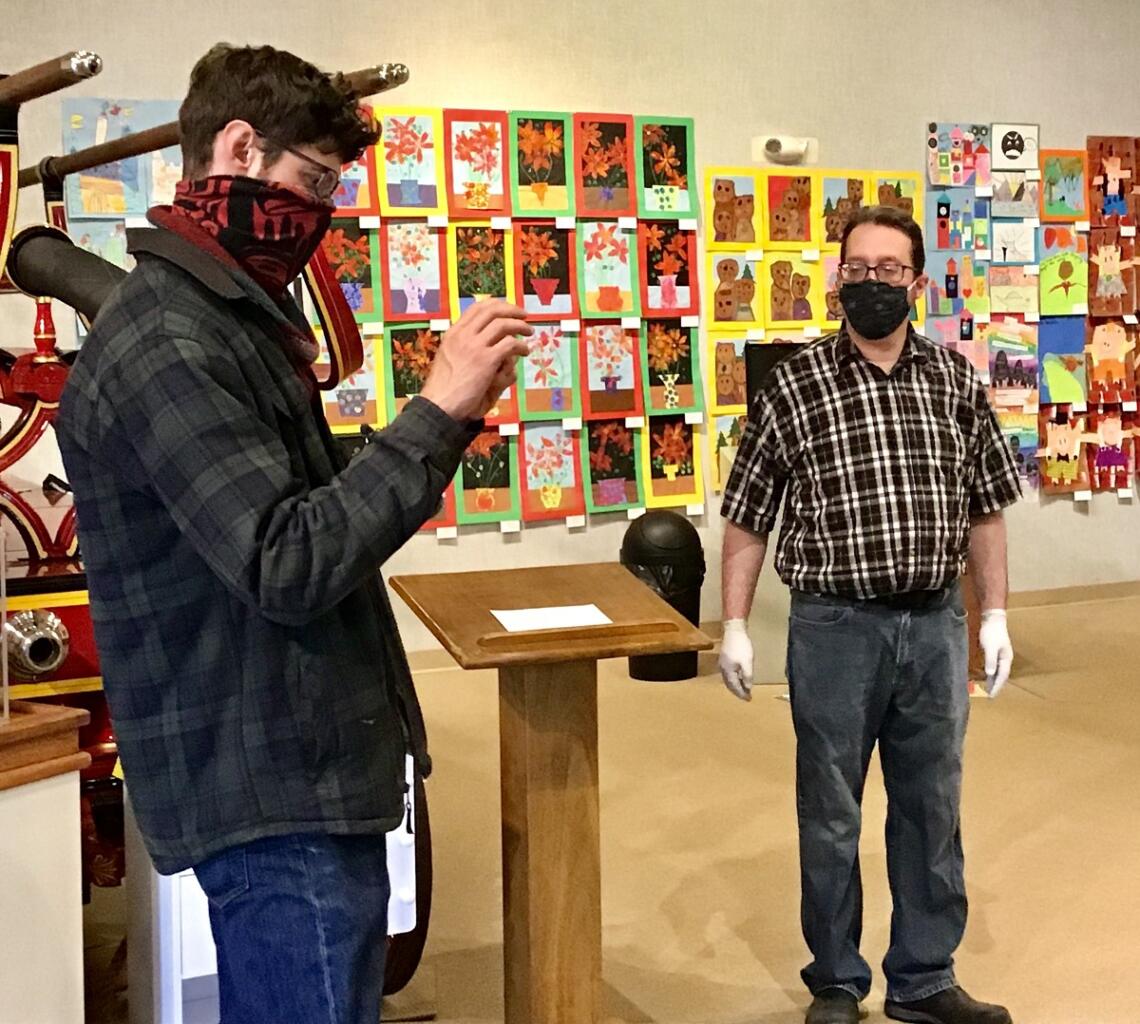

Main Museum
This week Facebook Live viewers were treated to a tour of the Valdez Museum on Egan Drive just prior to its reopening day, July 1, 2020. Since the mid-March COVID-19 closure museum staff have been creating a host of online programming options and making preparations to reopen. They are following new state and federal health guidelines to ensure a safe environment for visitors, volunteers and staff. For more information on the VMHA COVID-19 Mitigation Plan click here. To enjoy Andrew’s online tour click here.
“What is it Wednesday?”
This week’s mystery object looks like an old fashioned black and white mini TV set in a substantial plastic casing. Sorry no photo, but here are a few hints: It is an object manufactured between 1983 – 1988 and was used in an administrative capacity by Alyeska Pipeline Company during the 1989 Exxon Valdez Oil Spill. This object remains in good condition, causing Museum Curator Andrew Goldstein to boast:
“Isn’t she a beauty?!?”
He goes on the open up the casing and show the innards of this mystery object. Have a look yourself and find out what it is. Just click here.
LIVE From the Archivist’s Home
That’s right–this week Museum Curator Andrew Goldstein recorded from home, sporting a spiffy Hawiian shirt! He shares a plethora of information and news about what’s happening now at the Valdez Museum and what’s coming up in the future. He talks about a new face lift for the Yellow Warehouse, aka Remembering Old Valdez Exhibit (ROVE).
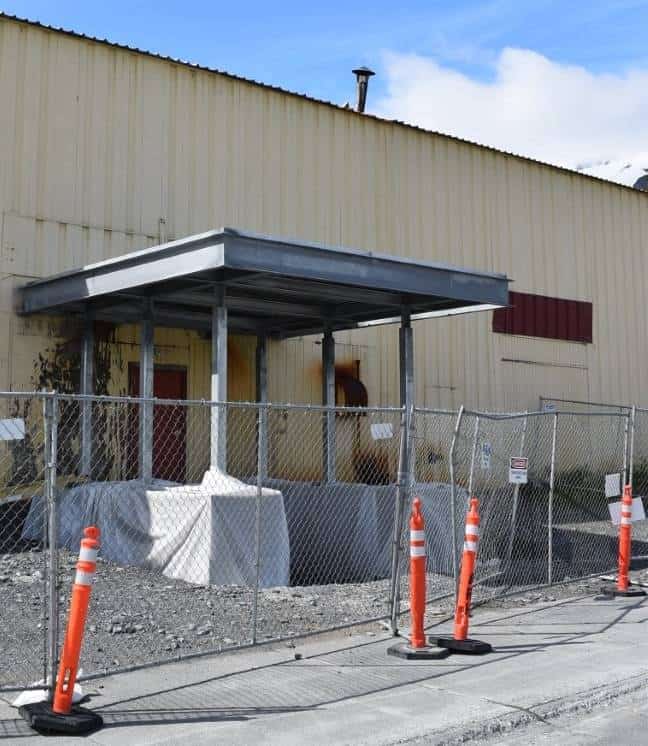
And Andrew gives a run down of new exhibits planned for well into 2021. But most exciting of all–Andrew reports on the Museum’s plans for re-opening on July 1, 2020. He’ll tell you all about it! Just click here.
“What is it Wednesday?”
Tune in to learn a host of little known facts about what Museum Curator Andrew Goldstein calls
“one of Valdez’s most underrated historical sites.”
The Pioneer Cemetery is located about 4 miles from the center of town near the ball fields and the Old Town Valdez site. It was used used from the late 1890’s – 1917. Goldstein says it houses numerous rare markers and is “chocked full of history.” And why is this historic site known as the “Chinese Cemetery?” Just click here to learn more!
LIVE From the Archive-Oral Histories, Collecting the Human Story

Oral histories are sound or video recordings in which individuals give their perspective on historical information, or eyewitness accounts of past experiences. Often, in the form of a recorded interview, they help people understand what life was like in a different era. Most importantly says Museum Curator Andrew Goldstein:
“Oral history relates how it FELT to be a participant in past events, and what the interviewee was thinking and feeling at the time.”
In this week’s video Andrew covers the advantages and disadvantages of this type of historical documentation. Click here to learn more.
“What is it Wednesday?”
Museum Curator Andrew Goldstein presents an an array of objects, one in particular, a “Hair Receiver”
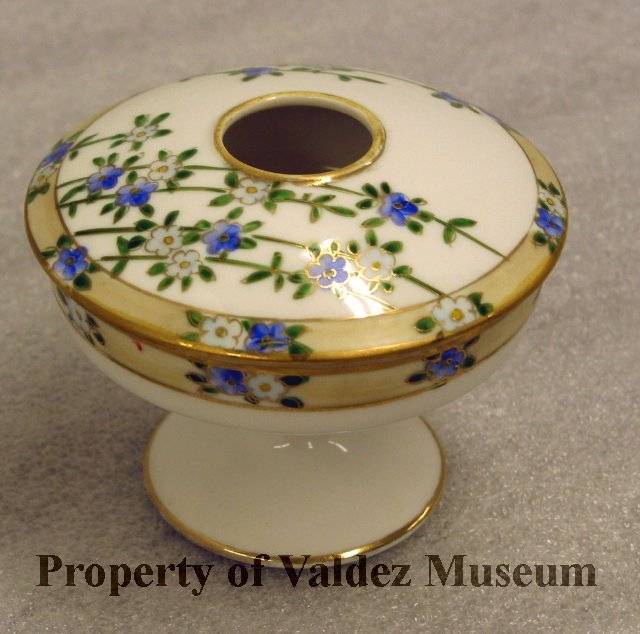
reflects the grooming habits of folks in the Victorian Era. He cites one thing you need to keep in mind;
“The Victorians were absolutely obsessed with hair. Unlike today, where we are more obsessed with hair removal, back then they liked to keep theirs.”
How was it used–small pillows, pin cushions, hair wreaths?? Just click here to learn more.
LIVE From the Archive-Mylar Enclosures
This week Museum Curator Andrew Goldstein serves up another informative video about how to take care of your paper collections, keeping them pristine and dirt free! This method is good for double sided documents as well, plus it just requires low cost readily found materials. In the word of Mr. Goldstein:
“If you’re like me, you hate measuring, and there’s absolutely NO measuring involved in this project.”
He’ll tell you how it all works. Just click here.
“What is it Wednesday?”
This edition hits on a popular watering hole in Old Town Valdez, The Pinzon, whose beautiful antique bar now sits in the Museum. The featured object of today’s guessing game sits on top of the bar. Is it beer?
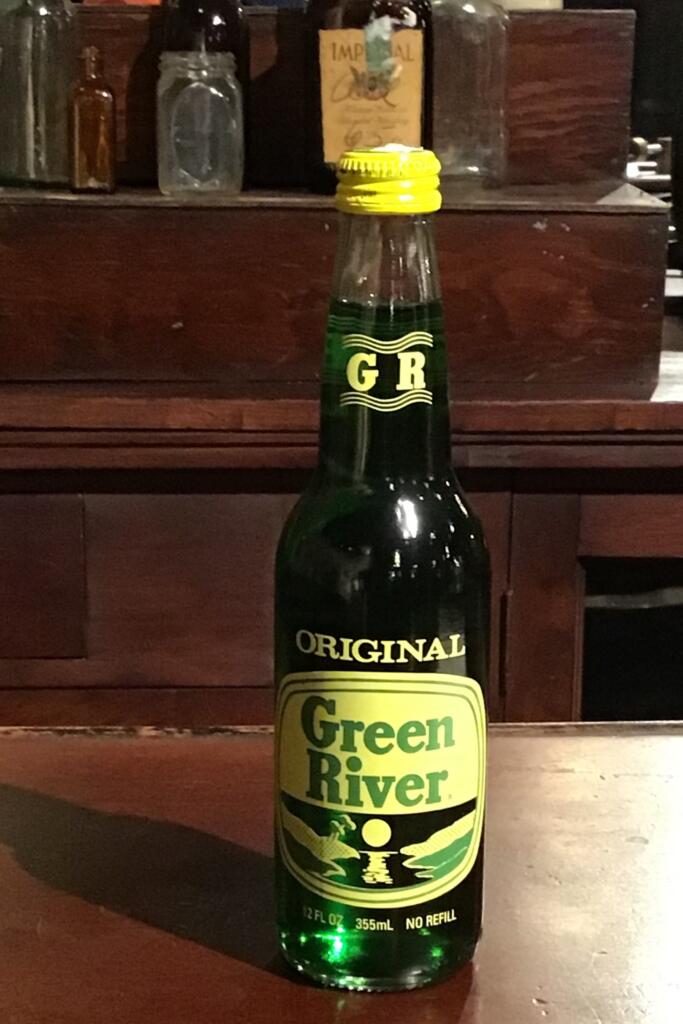
Well . . . . its namesake was actually a whiskey of reputed alcoholic content revered by frequent bar goers. This version of Green River is a non-alcoholic soda likely sold at The Pinzon during prohibition. Learn about the history of this unlikely bar beverage, and just “click” to hear Museum Curator Andrew Goldstein sing the catchy rhyming stanzas of an old time drinking song at the end of his entertaining presentation!
LIVE From the Archive-Time Capsules
Museum Curator Andrew Goldstein weaves the true tale of a sturdy welded metal box that nearly caused a Public Relations disaster! The Museum dedicated a time capsule in July, 1982, but the planned burial and re-dedication of the box was slated for July, 2007. Well, fortunately, a few months prior to that date the curiosity of a co-worker prompted Andrew to remove the time capsule’s top and check its contents. WHOOPS! Find out what happened next when he looked inside by clicking: here.
“What is it Wednesday?”
This week’s edition of Museum Curator Andrew Goldstein’s popular Facebook live artifact identification game prompted a range of guesses.

NO. Is it a level? NO. Is it a device to measure barometric pressure? NO.

That’s right. But what does Vapyr-X do? Hint: It’s nickname is “fire grenade.” To learn more about this intriguing object in our collection just click here.
“What is it Wednesday?”
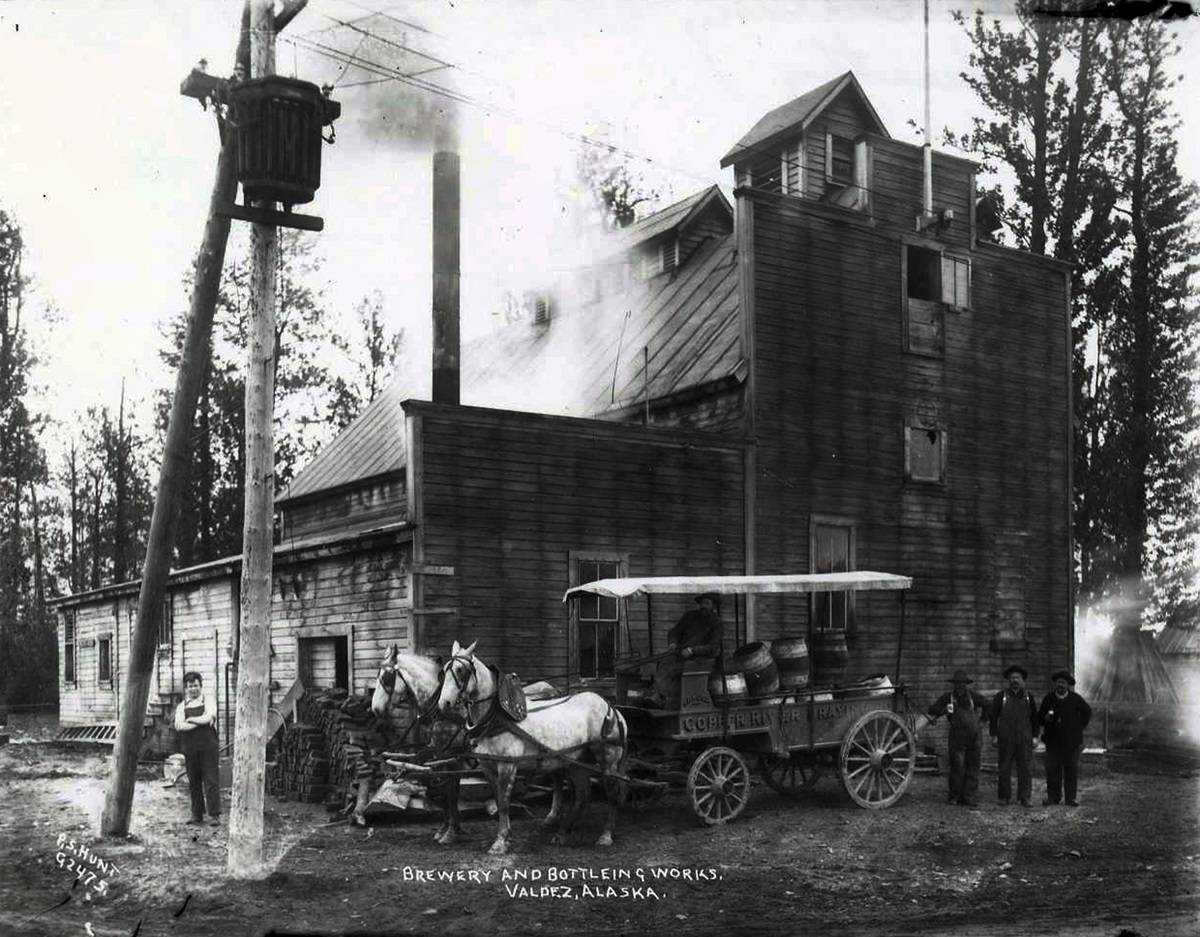
Quench your thirst for knowledge – That’s what Museum Curator Andrew Goldstein promises to do in this week’s Facebook live video. It concerns the colorful history of what was until recently the only brewery in Valdez, founded around the turn of the 20th Century.
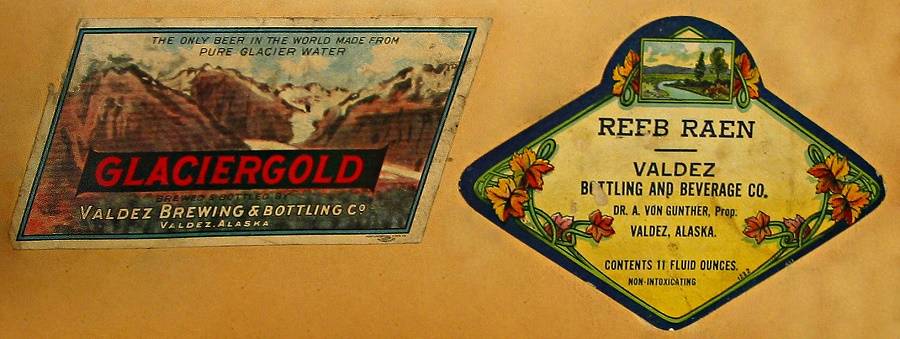
Dr. Andres A. VonGunther’s hearty brews reportedly “really packed a punch!” But, if you read the label on the right backwards, you will find the name of VonGunther’s non-alcoholic brew, made to appease supporters of the Temperance Movement. These labels fetch a good price from collectors, and to learn how much, plus many more fun brewery facts, click this link: BEER. P.S. Hang tight through the initial film blips–it’s worth it!
LIVE From the Archive-Object Labeling
In his latest Facebook live visit to the Archive, Andrew Goldstein, Museum Curator, says “funny little numbers attached to artifacts on display” are a way of tracking what’s in the Archive. He says they do it the “old school way” by hand writing ID numbers into a log and later adding them to a data base. Learn more, plus watch Kyle Klause, Curatorial Assistant, demonstrate the labeling process on several pieces in the collection. Just click here!
“What is it Wednesday?”
Your challenge is to guess the oldest object in the Archive. Hint– it’s NOT Andrew Goldstein, Curator of Collections & Exhibitions, but in this week’s video he shares what is!
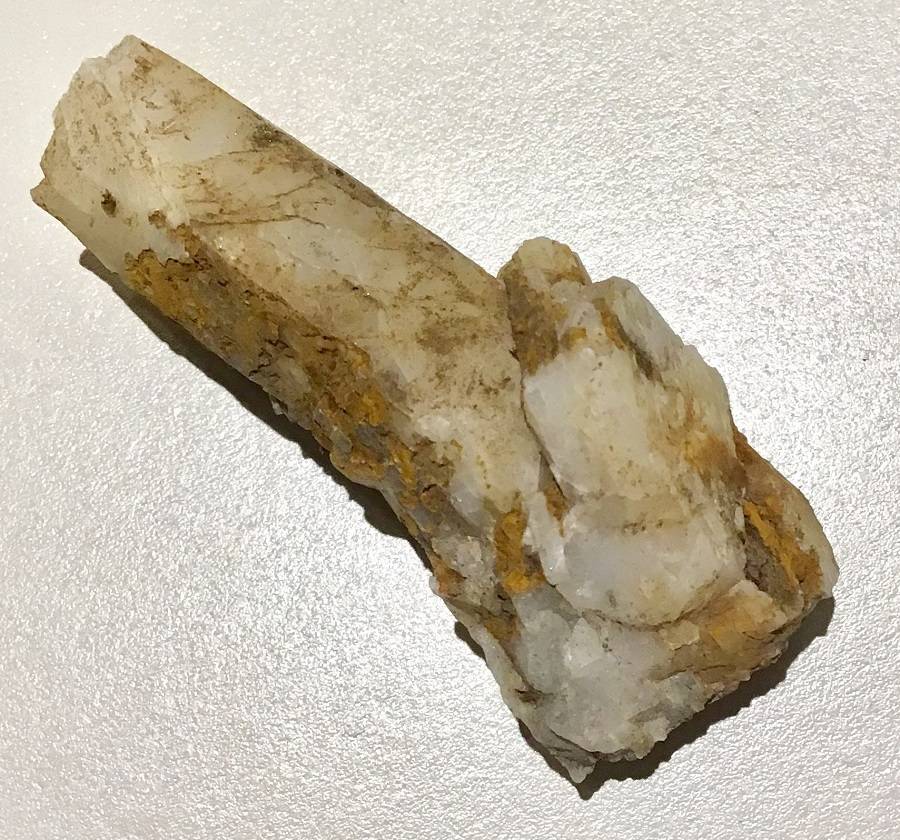
This chunk of quartz was found up Mineral Creek Canyon near the old Stamp Mill. Andrew pegs the rock’s age at 1 to 1.5 BILLION years old! Here’s another collection item dating way back, but not that far!
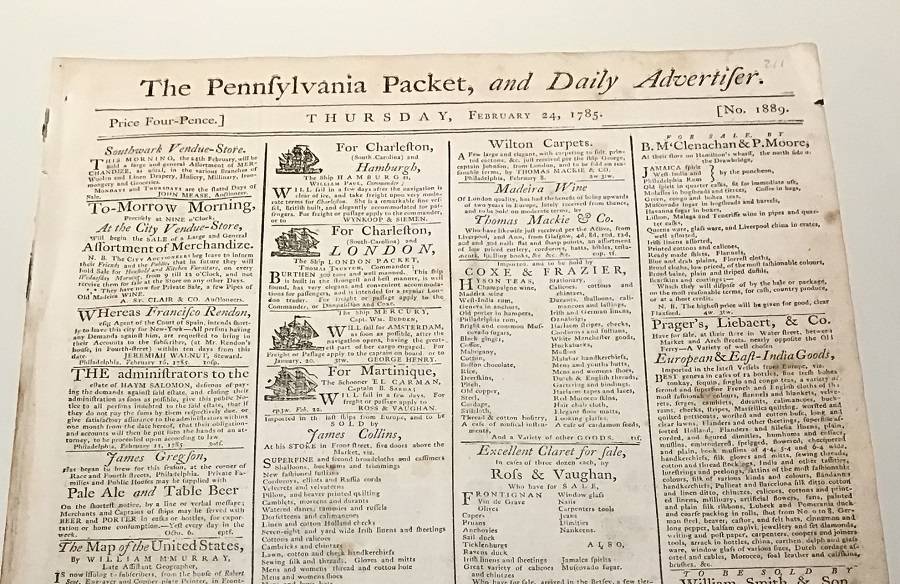
This newspaper was published in 1785 and contains a story on Alaska and Prince William Sound written just 5 years after the end of Captain Cook’s expedition to Alaska. Andrew also explores many other treasures from the Museum’s Native Gallery you can see by clicking here!
LIVE From the Archive-Yellow Warehouse Facelift Starts
Andrew Goldstein braves the wind down by Kelsey Dock to show you the construction zone around the Yellow Warehouse, aka Remembering Old Valdez Exhibit aka the Annex, and talks about the building makeover. Then he steps inside while to share the good news of near completion for the Collections Cataloging Project.
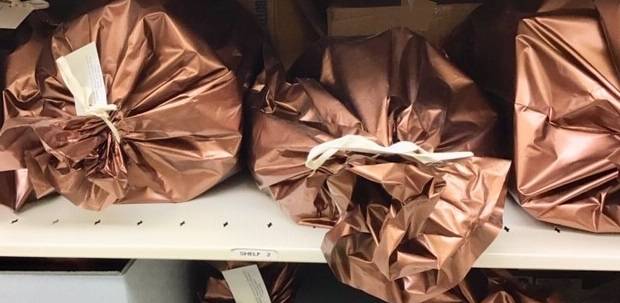

View Andrew’s live broadcast from Monday, May 11, 2020 right here.
“What is it Wednesday?”
Andrew wandered across this artifact in the collection, and learned that it’s a close relative to a tool first used by ancient Egyptians to establish straight or horizontal lines in doing construction projects.

He was close says Andrew, who researched the artifact by consulting a handy book titled, Museum of Early American Tools. There he found a sketch of someone using what appears to be this same object to process lumber. The string is unwound and stretched to mark a chalk line on the log. Click here for the rest of the story!
LIVE From the Archive-Paper Cleaning
In this edition Andrew Goldstein shares tips on low-cost, easy ways to spruce up your old, yellowing papers and documents without training or special equipment, except for a white plastic eraser ground into crumbs!

This sign, written on a piece of stationary from the Hotel Valdez in Old Town, was placed on the face of a wall clock hanging in the hotel. Why? The clock stopped working! It was there from the 1920’s until 1964, when the Good Friday Earthquake and Tsunami caused severe damage to Old Town and Valdez was eventually moved to its present day town site. Watch Andrew brighten up the sign by clicking here.
“What is it Wednesday?”
The subject of this week’s edition of our popular guessing game presented on Facebook Live looks borderline scary, and host Andrew Goldstein describes it as “a sturdy piece of equipment with moving parts.” Guesses from viewers include – jack or pipe bender?
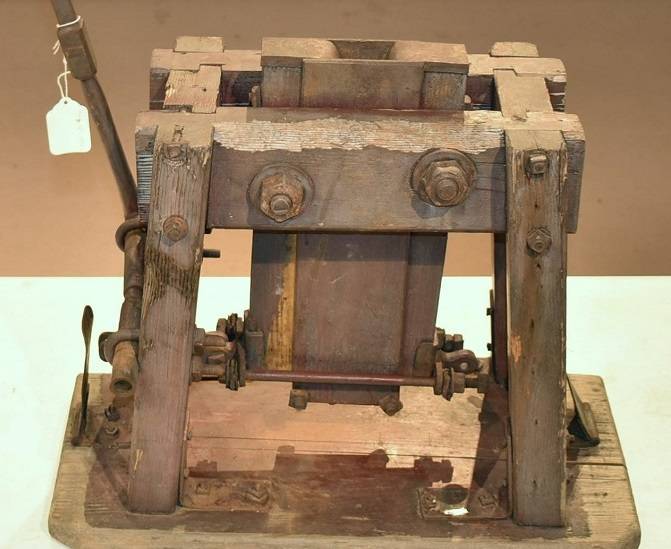
This machine was used for crushing ore, and with a sly smile Goldstein calls it the “most bad ass name of any object in our collection.” What is It? JAW CRUSHER! To learn more about this fascinating machine click here.
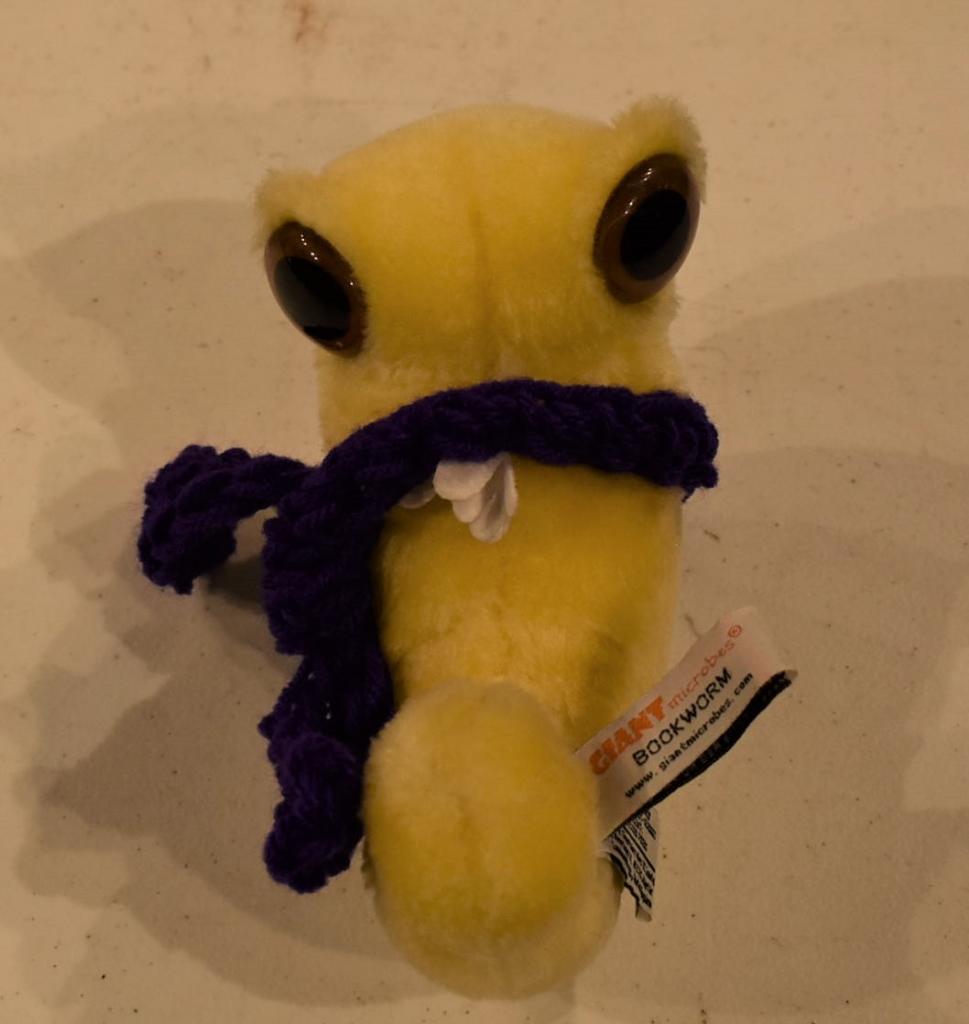
LIVE From the Archive–Paper Eating Critters
Andrew Goldstein, along with his special guest Skippy, teach you how to deal with a variety of critters who enjoy munching on paper, cardboard and cloth. Andrew and Skippy, with the high pitched voice, give an entertaining presentation on how to preserve your important books and papers, keeping them from the ravages of annoying insects like Museum Beetles, Termites, Silverfish and maybe even the likes of Skippy! Click here for more.
“What is it Wednesday?”
In this edition Andrew Goldstein may just have you stumped!

This is one of two mystery objects you can guess at. But to learn the real truth, click here.
LIVE From the Archive-“Makers Marks”
Museum Curator Andrew Goldstein shares a wealth of information on how manufacturer’s labels help identify dates and history behind artifacts in the collection like this 1920’s era Corona typewriter. To learn more click here.
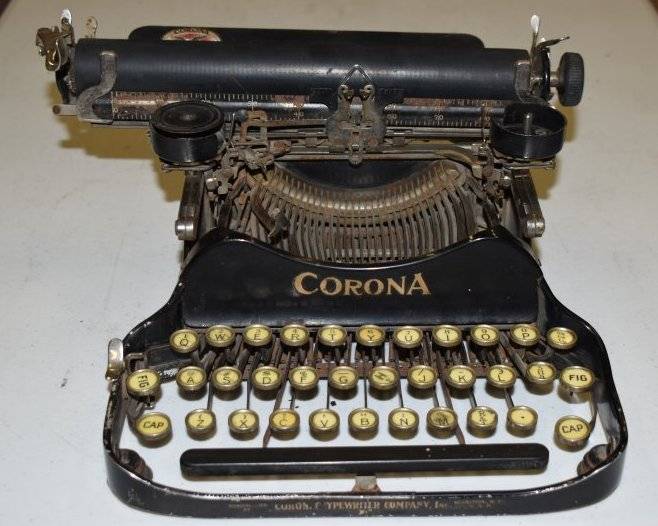
“What is it Wednesday?”
Join Museum Curator Andrew Goldstein for the April 15, 2020 edition of this popular video guessing game of selected mystery artifacts from the VMHA collection. This time he shows a number of curious objects, and some are even electrifying! Check them out right here!
LIVE From the Archive–Artifact cleaning
This segment, produced on Monday, April 13, 2020 gives a wealth of information on the When, How, and Why of cleaning artifacts by Museum Curator Andrew Goldstein. Click on cleanartifact to learn more.
“What is it Wednesday?”
This weekly feature produced by Museum Curator Andrew Goldstein highlights an object or artifact from the Museum’s vast collection. For Wed., April 8, 2020 the mystery object sat on a table, looking very much like a small bicycle with wooden wheels–but What is It? Click here to find out!
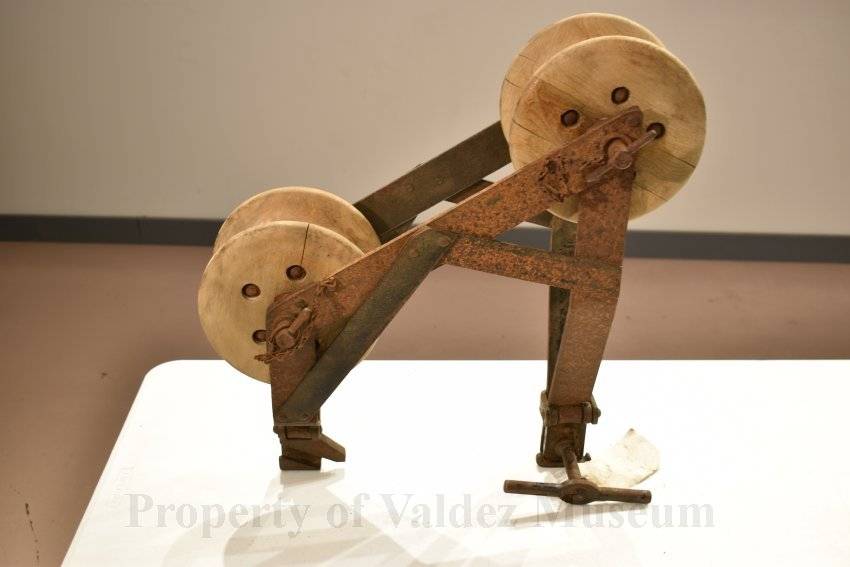
LIVE From the Archive–Mezzanine Tour
In this segment Andrew Goldstein, Curator of Collections and Exhibitions continues with his “behind the scenes” tour of the Collections Cataloging project. Highlights include a trip up to the mezzanine level of the Valdez Museum on Hazelet aka ROVE (where the Remembering Old Valdez Exhibit lives), the Annex and the Yellow Warehouse. Roughly 300 items have now been cataloged, wrapped, labeled and neatly placed upstairs in storage cubicles. And yes, toward the end of this 12 minute video you WILL see Kyle Klause, Curatorial Assistant “take out a mallet and break something” as Andrew has promised. Just click on this link: viewfromupstairs.
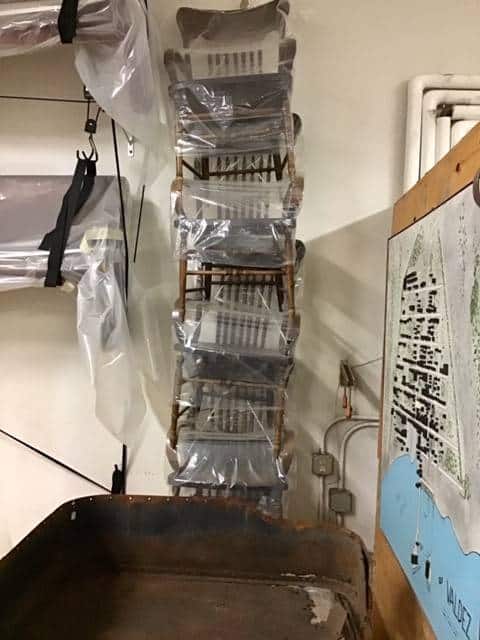
“What is it Wednesday?”
This weekly feature produced by Museum Curator Andrew Goldstein highlights an object or artifact from the Museum’s vast collection. Check out this offering filmed on April 1, 2020: mysterybox.
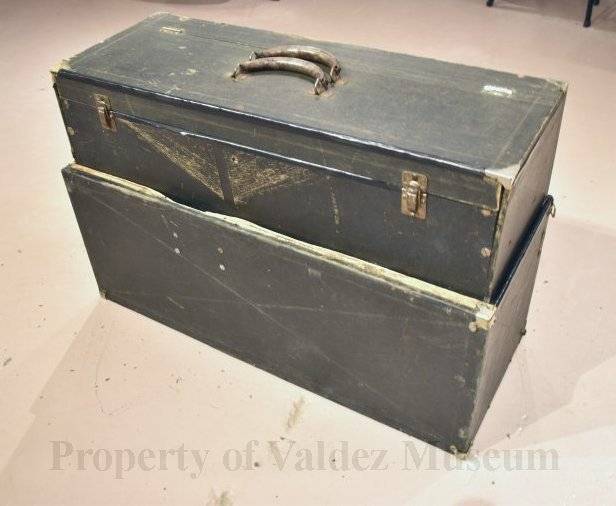
Original LIVE From the Archive
Here is a peek into the Valdez Museum on Hazelet Street which houses the Remembering Old Town Exhibit and the Archive. Museum Curator Andrew Goldstein takes you on a tour showing progress of the Collections Cataloging project that began in the fall of 2019 and will be completed in the spring of 2020. Just click on this link: peekinthevault.


